Kailash Mansarovar Yatra
Kailash mansarovar yatra registration.
- You must possess a valid ordinary Indian passport with a minimum validity of six months as of 01 September of the current year.
- It is your responsibility to provide accurate and complete information, including correct name spellings and date of birth.
- Providing incorrect or false information, or concealing any material facts, will lead to disqualification at any stage of the process, including during the Yatra, and any payments made will be forfeited.
- You must indicate your preferences for both the routes.
- You can also select an end-point to conclude your Yatra on the return leg, choosing either Dharchula or Gangtok for Route-1 (Lipulekh) and Delhi for both routes.
- All fields in the application form are compulsory.
Passport is mandatory for Kailash Mansarovar Yatra as Mount Kailash is located in China-occupied Tibet. China also supplies visas and permit for the yatra. Only group visas are issued, so the yatra has to be done through tour operators.
- Take a printout of the application form and keep it for your reference.
- You will receive an SMS and email confirmation after the successful submission of your application.

Register here
Kailash mansarovar yatra 2024 dates.
Kailash Mansarovar Yatra is yet to be announced.
Selection Process for Kailash Mansarovar Yatra
- Batch Allocation: Once assigned to a batch, it is generally not changed. Requests for batch changes may be considered under specific circumstances, subject to availability.
- Confirmation Amount: Selected applicants must confirm their participation by depositing a non-refundable confirmation amount into the designated bank account of Kumaon Mandal Vikas Nigam (KMVN) or Sikkim Tourism Development Corporation (STDC) before the specified cut-off date.
- Payment Deadline: Failure to make the payment by the cut-off date results in the Yatri moving from the selected list to the waitlist. Vacancies created are then filled based on priority.
- Reconfirmation: Confirmed Yatris may need to reconfirm their participation before their Delhi arrival. Failure to do so may lead to batch removal.
- Reporting: Confirmed Yatris must arrive at Delhi Heart & Lung Institute (DHLI) as per the batch itinerary. Failure to do so may result in batch removal. All Yatris in a batch must travel together.
- Waitlist Inclusion: Registered/waitlisted Yatris can report at DHLI to fill vacancies caused by dropouts.
- Required Documents: Confirmed Yatris must bring specific documents, including a valid Indian passport, photographs, indemnity bond, emergency evacuation consent, and cremation consent.
- Document Compliance: Non-compliance with document requirements may lead to Yatris being barred from the Yatra. Ministry decisions in this regard are final and not subject to appeal.
Kailash Mansarovar Yatra Route
Route number 1: lipulekh pass (uttarakhand).

Route Number 2: Nathu La (Sikkim)

Kailash Mansarovar Yatra Parikrama
Once the pilgrims reach Mount Kailash after going through the rigorous trek, they need to walk around the peak of the mountain in either clockwise or anti-clockwise direction. This is known as 'parikrama'. Some people who cannot perform the ritual on foot are provided with the option of either hiring a yak or a pony.
Mount Kailash
Mount Kailash is a mountain that stands 21,778 feet tall. Every year, people flock to the place to witness its beauty and grandeur. Mount Kailash is situated amongst the mighty Himalayan ranges in the Southwestern corner of Tibet and is considered as one of the highest points of the world. In addition to all this, it is also the source of four mighty rivers of Asia including the Brahmaputra, the Ganges, the Indus, and the Sutlej. Above all this, what makes the place much visited is the spiritual significance that it holds. People belonging to different religions surely pay a visit to this spectacular pilgrimage center.

Religious Significance of Mount Kailash and Mansarovar Lake

Other Major Attractions on Yatra

This post was published by Saumya Bansal
Share this post on social media Facebook Twitter
Uttarakhand Travel Packages
Compare quotes from upto 3 travel agents for free
Delhi Nainital Mussoorie Tour Package - 5 Nights 6 Days
Exciting uttarakhand family tour package, relaxing uttarakhand classic tour package, charming dehradun mussoorie tour with dhanaulti & hardiwar, char dhaam yatra - gangotri, yamunotri, badrinath and kedarnath, quintessential uttarakhand - nainital, jim corbett & more, related articles.

Art & Culture
Panch Kedar - Trek And Yatra

Panch Prayag - The Five Sacred Rivers

7 Enthralling Treks In Uttarakhand For Adventure Seekers
10 Treks in Uttarakhand and Himachal Pradesh for Beginners
Enthralling Places For Camping in Uttarakhand
The Mystery of the Skeletal Remains at Roopkund Lake
Experience Nature At It's Best At This Mid-Himalayan Range in Uttarakhand!
Places for Trekking in Uttarakhand For A Mesmerising Himalayan Adventure
Top Religious Places in Uttarakhand
Places For Water Sports in Uttarakhand

Uttarakhand Government Wants You To Have A Spooky Experience In Your Next Trip - The Ghost Tourism Project!
Kumaoni Holi 2024 - The Colourful Festival of Uttarakhand
Culture of Uttarakhand - Traditions, Festivals and More

5 Airports in Uttarakhand
Traditional Dresses of Uttarakhand

Fairs & Festivals
21 Festivals of Uttarakhand - India's Devbhoomi
Languages of Uttarakhand - 6 Languages From The Devbhoomi Of India

The Faraway Travel – Sari Village in Uttarakhand #TWC
Trek in Uttarakhand: How I survived the cloudburst
5 Life Lessons Learnt on a Himalayan Trek #TWC
My First Encounter with the Majestic Himalayas #TWC
Trekking in Uttarakhand To Shikar Varnavat #TWC

Food of Uttarakhand : Scrumptious Delicacies From The Land of Natural Beauty
Are You Ready To Watch The Most Awaited Man vs Wild Episode Yet?

Backpacking
137 More Peaks Opened For Trekking in Himalayas: Good or Bad?
Uttarakhand Food Festival To Be Held This Week – What Are Your plans?
The Journey To And Through The Hidden Valleys Of Uttarakhand
Junoon in the Hills, a Homestay Just 300 Kms from Delhi!

Uttarakhand Is Set to Get a Summer Capital!
4 Very Rare Snow Leopards Sighted in Uttarakhand! Read More Here
Comments on this post
Browse package collections, uttarakhand package collections.
Uttarakhand Honeymoon Packages
Badrinath Kedarnath Tour Packages
Top Listed Packages
Uttarakhand Religious Tour Package
3 Days Tour Package in India: Char Dham Yatra By Helicopter
Browse Hotel Collections
By hotel type.
Best Resorts in Uttarakhand
By Star Category
Best 5-Star Hotels In Uttarakhand
For Special Purposes
Stunning Workations in Uttarakhand
Top Places in Uttarakhand

Get the best offers on Travel Packages
Compare package quotes from top travel agents
Compare upto 3 quotes for free
- India (+91)
*Final prices will be shared by our partner agents based on your requirements.
Log in to your account
Welcome to holidify.
Forget Password?
Share this page
Lake Manasarovar

Top ways to experience Lake Manasarovar and nearby attractions

Most Recent: Reviews ordered by most recent publish date in descending order.
Detailed Reviews: Reviews ordered by recency and descriptiveness of user-identified themes such as wait time, length of visit, general tips, and location information.

Also popular with travelers
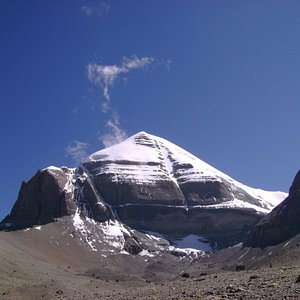
Lake Manasarovar - All You Need to Know BEFORE You Go (2024)
- Travelogues
- Travel Agent Cooperation
.jpg)
KAILASH MANSAROVAR TOUR/YATRA
Mount Kailash, one of the most sacred peak in the world, has been one of the must-visit destinations for any of Tibet tour in recent years.
As a well-established local Tibet tour operator, receiving around 6,000 global tourists each year, we are the first and the largest Mt.Kailash and Lake Manasarova tour operator. We handpick the best time for Mt. Kailash tour and have the 100% guaranteed fixed departure dates each month to meet your needs. From the booking of your tour to the end of it, we are confident that you will have a once-in-a-lifetime experience for Kailash Mansarovar yatra.
Note: Mt. Kailash tour is only available for 7 months each year (April to mid-Oct), so for planning to visit Mt.Kailash in 2024, today is the day to contact us for your Kailash tour. You can easily book our small group tour or customize your tour to meet your interests and budget ! We promise to bring you a spiritually uplifting journey in the navel of the universe .
Fully Upgraded Mt.Kailash Tour Packages in 2024
In 2024, we've fully upgraded and enhanced our Kailash Mansarovar small group tours. Choose from our top-selling itineraries: a 3-day trek for regular tourists and a special 4-day trek for the Kailash Saga Dawa festival. Join us for an affordable exploration of the mysterious Mt. Kailash and Mansarovar Lake at the best local price.
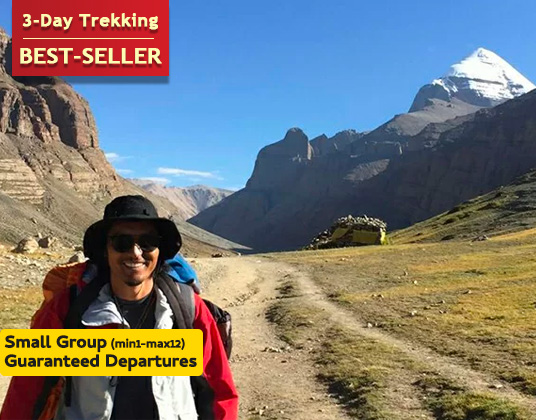
15 Days Kailash and Manasarova Small Group Tour: A pilgrim’s final fantasy and the greatest overland trip in Tibet.
Tour Route: Lhasa - Gyantse - Shigatse - E.B.C - Saga - Kailash Trek - Darchen - Lake Manasarovar - Saga - Gyirong - Tingri - Lhasa

16 Days Kailash and Manasarovar Small Group Tour: Touching Mount Kailash with Spiritual Saga Dawa Festival Experience
Tour Route: Lhasa - Gyantse - Shigatse - EBC - Saga - Darchen - Kailash Trek - Darchen - Saga - Gyirong - Tingri - Lhasa
Most Popular Kailash Mansarovar Group Tour Via Kathmandu
Explore more of our other three Kailash Mansarovar small group tours! Two cater to tourists entering or exiting from the Nepal side, while the third delves into the fascinating Guge Kingdom.
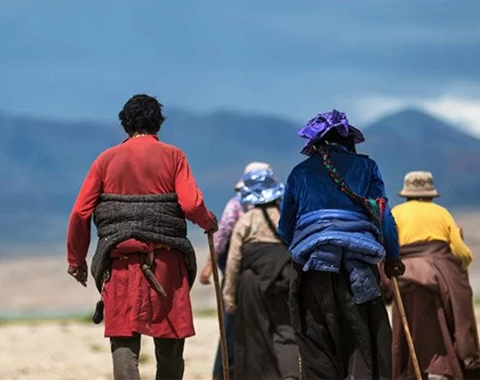
10 Days Kailash Pilgrimage Tour from Kathmandu, via Gyirong Port
Tour Route: Kathmandu – Gyirong – Saga – Mt.Kailash – Lake Manasarovar – Darchen – Saga – Gyirong – Kathmandu

13 Day Lhasa, Mt. Everest, Mt. Kailash, Lake Manasarovar and Kathmandu Adventure Tour
Tour Route: Lhasa - Gyantse - Shigatse - EBC - Saga - Darchen - Kailash Trek - Darchen - Saga - Gyirong - Kathmandu

17 Days Kailash Manasarovar Full Moon Tour & Guge Kingdom Exploration
Tour Route: Lhasa - Gyantse - Shigatse - EBC - Saga - Darchen - Zanda - Kailash Trek - Darchen - Saga - Gyirong - Tingri - Lhasa
In-depth Mount Kailash Adventure Tours in Private
If you have longer vacation, ample budget, and personally prefer to cover a particular long tour route around Mt. Kailash, then the following 4 private adventurous tours via Mt.Kailash are highly recommended for you. You can either enjoy rarely-seen alpine wildlife during the world’s highest safari or venture into the sparsely-populated Northern route of Mt. Kailash tour, or even keep moving from Ngari to Nepal. You will definitely be left in awe by the stunning ruins of Guge Kingdom, peaceful Peikoutso Lake and running Tibetan wild asses, etc. Check the following tours and customize a Kailash trip that works best for you .
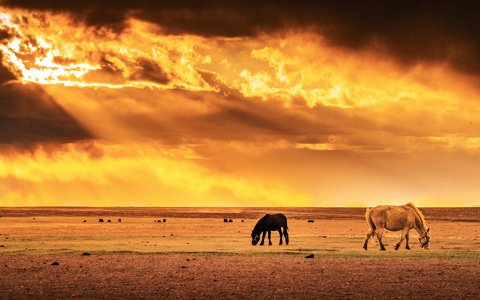
16 Days Tibet to Xinjiang Land Trip
Tour Route: Lhasa - Shigatse - Sakya - Saga -Mt.Kailash - Zanda - Ali - Pangongtso - Dorma - Dahongliutan - Mazar - Yecheng - Kashgar
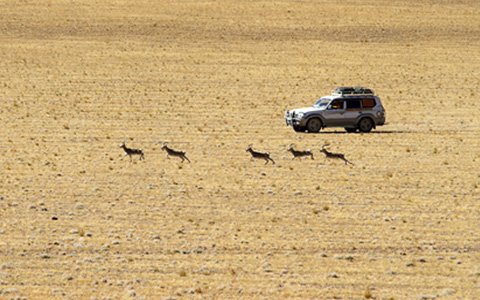
19 Days Big Loop Tour around Ngari Region
Tour Route: Lhasa - Everest - Saga- Manasarovar Lake - Kailash - Darchen - Guge Kingdom - Tsada - Shiquan River - Gerze - Namtso - Lhasa

22 Days Travel to western Tibet from Nepal
Tour Route: Kathmandu-Lhasa-Namtso-Ali-Guge Kingdom-Darchen-Lake Manasarovar-Peiku-tso Lake-Gyirong Port
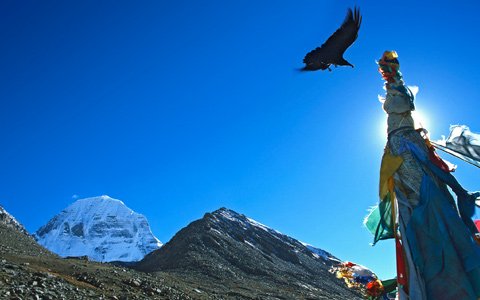
22 Days Western and Northern Tibet Overland
Tour Route: Lhasa-Gyangtse-Shigatse-Mt.Everest-Manasarover-Mt.Kailash-Guge-Ali-Gegye-Gertse-Dong tso-Nyma-Banger-Namtso Round tour
Why Tour Holy Mount Kailash with Us
- Specialize in top treks in Tibet, esp. Mt.Kailash Kora and EBC trek
- Provide one-stop tour service for Mt.Kailash kora, including travel documents, porter, camping facilities, etc
- Since the first tour to Mt. Kailash in 1984, no accident happened
- Follow the health conditions of our clients throughout the tour, with oxygen and other emergency backup plan
- Seasoned Tibetan guides and team who worked with us for years
- Offer many viable options to Mt. Kailash kora, Manasrovar and surrounding attractions including both southern route and northern route from Lhasa to Ngari
Some Cherish Moments of our Clients' Kailash Tour
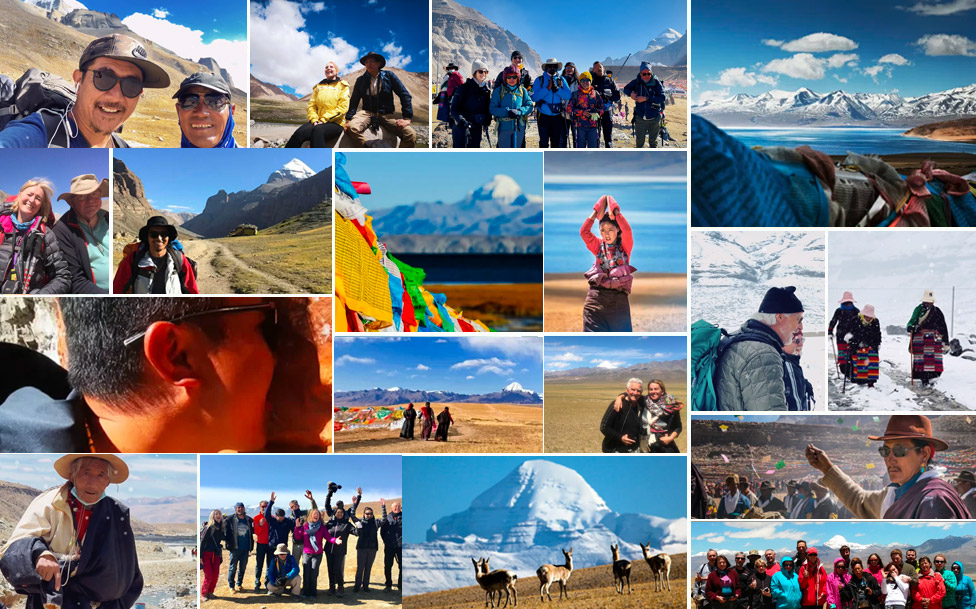
Mt.Kailash Tour Map and High Altitude Change Chart
Before our actual tour begins, the following useful Mt.Kailash tour maps will give you a sneak peak of upcoming tour from Lhasa to western Tibet Ngari. You can easily spot highlighted attractions and altitude ascent from Lhasa to Mt.Kailash and during 3-day kora around Mt.Kailash.
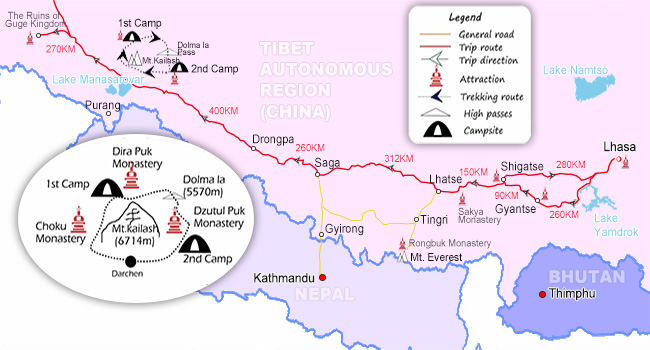
Detailed Mount Kailash Map
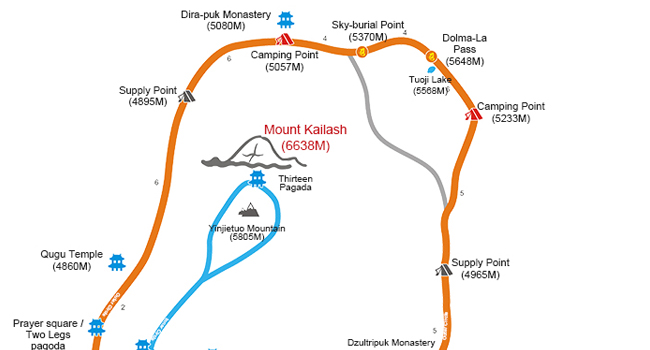
Mount Kailash Trekking Map

About Mount Kailash Tour High Altitude
Suffering from the high altitude sickness is the most concerned issue of a Kailash tour. Based on our over 20 years' experience in Tibet tourism, there is no need to worry too much about it. High altitude sickness is the very normal reaction when entering the highland, usually, you will feel a little bit headache, sleepness, chest distress. However, since our Kailash Manasavor yatra always starts with at least 4 days in Lhasa, which will help you get acclimatized to the high altitude. It is helpful to drink more hot water and have some fruit. Please remember to not have shower every day and do not take the risk of washing your hair or body with snow or stream. Otherwise, catching cold would be extremely dangerous at high altitude.
Most Common Questions about Mount Kailash Tours
1. where is mt.kailash and how to get there.
Mount Kailash, situated in the far west of Ngari, Tibet, is approximately 1500 kilometers from Lhasa and 700 kilometers from Gyirong port at the Sino-Nepal border. If traveling from Kathmandu to Mount Kailash, the journey extends to around 820 kilometers.
You can get to Mount Kailash from Lhasa by land, which takes around 13 to 16 days with sightseeing en route and a night stay at the Everest Base Camp. Alternatively, you can travel to Mount Kailash from Kathmandu via the Gyirong border. It generally takes 10 days by land.
The nearest airport to Mount Kailash is Ngari Gunsa Airport, offering flights from Lhasa, Kashgar, Urumqi, Chengdu, and Xian. Opting for a quicker route, you can fly from Lhasa to Ngari Gunsa Airport (within 3 hours) and then drive the remaining 250 kilometers to Mount Kailash in about 5 hours. Due to limited flight schedules, plan accordingly.
2. Can You arrange Mount Kailash tours for Indian pilgrims?
If you're an Indian pilgrim looking to visit the Mount Kailash area with an Indian passport, the pilgrimage tours are exclusively arranged through the Pilgrim Center.
For Indian citizens with other passports, we're here to assist you in planning your Mount Kailash trip. Feel free to contact us , and we'll be delighted to help with all your travel requirements, making sure your Mount Kailash tour is both meaningful and unforgettable.
3. Road Condition of the Mt.Kailash and Lake Manasarova
TThe road condition of western Tibet has been greatly improved in recent years. Most of the roads from Lhasa to Mount Kailash are well paved, except for a gravel stretch near Lake Manasarovar.
At Tibet Vista, we ensure a comfortable journey by providing well-maintained vehicles and experienced local Tibetan drivers. Sit back, relax, and savor the excitement of your adventure to this sacred mountain.
4. High Altitude of the Mt.Kailash and Lake Manasarova
Mount Kailash proudly stands at an elevation of 6638 meters, while Lake Manasarovar sits gracefully at 4590 meters above sea level.
The average altitude of the Mount Kailash trek is above 4500 meters, during which you will cross the Dromala Pass (5630 meters) - the highest point along the trekking route.
Since you will trek for at least 4 days for such a high altitude, you may face the challenge of altitude sickness, often experiencing symptoms like headaches, sleeplessness, and chest distress.
To help you adjust to the high altitude of the Tibetan Plateau, our Kailash Manasarovar Yatra starts with at least 3 days in Lhasa. As you go west to Shigatse and Everest, your body gets used to the increasing altitude.
To feel better at high altitudes, drink lots of hot water, eat fruits, and cut back on daily showers. Don't risk washing with snow or stream water—it's super risky in the cold at these heights.
5. Best Time to Visit the Mt.Kailash and Lake Manasarovar
The best time for the Kailash Manasarovar Yatra is from April to October each year, featuring an average temperature of 9.5°C. Daytime temperatures typically range from 10-15°C, while nighttime temperatures can drop below freezing, resulting in a substantial temperature difference between day and night.
The Mount Kailash region experiences minimal rainfall, though July and August are the rainy seasons, often accompanied by the appearance of rainbows.
During the remaining months, expect clear blue skies, white clouds, diverse vegetation, and May stands out as the best time to witness the breathtaking beauty of Kelsang flowers.
6. Accommodation of the Kailash Manasarovar Tour/Yatra
The accommodation conditions at Mount Kailash are quite basic - almost basic dorm beds in guesthouses and small inns. Generally, guesthouse rooms along the Kora route can accommodate 3 to 4 people, with shared toilets available on each floor.
It’s worth noting that private bathrooms or bathing facilities are not accessible during the Kailash kora. To ensure basic cleanliness, it's recommended to bring wet wipes along.
7. Drinking Water along the Kailash Manasarovar Tour/Yatra
During the Kailash kora, there are tent tea houses that provide hot drinks such as Tibetan butter tea, sweet tea, and bottled water for both tourists and pilgrims. Additionally, guesthouses along the trail offer boiled water for guests. You can bring your personal bottles to fill with drinking water at these points or carry some bottled water. It's important to note that drinking water directly from taps or rivers is not recommended.
8. Food along the Kailash Manasarovar Tour/Yatra
During the Kailash Manasarovar Yatra, dining options remain quite basic, with tent tea houses and monastery guesthouses offering simple fare such as instant noodles and egg-fried rice. As fresh meat and vegetables are scarce in the local area, and all ingredients are sourced from larger cities like Lhasa and Shigatse, the cost of a meal is relatively higher compared to other cities.
To maintain your energy levels during the journey, it's recommended to bring along some chocolate or energy bars for the hike.
9. Travel Permit of Kailash Manasarovar Tour/Yatra
The first necessary travel document is the Chinese Visa. Once you have your Chinese and a valid passport, you can proceed to apply for the Tibet Travel Permit.
The Tibet Travel Permit is required for entering the Tibet Autonomous Region. Without the Tibet permit, you can not board a flight or train to Tibet.
Since Mount Kailash is situated in the remote western part of the Tibet Autonomous Region, additional travel documents are necessary for your visit, such as the Alien’s Travel Permit and the Military Permit.
All the required documents for your Mount Kailash visit (excluding the Chinese Visa) are part of our Mount Kailash tour packages. We ensure a seamless and worry-free Mount Kailash experience for you with a 100% guaranteed Tibet Travel Permit.
10. Customer Service for Our Kailash Manasarovar Tour/Yatra
Our goal is to make your Kailash Manasarovar pilgrimage a once-in-a-lifetime experience – one that is not only memorable but also safe. To achieve this, we go above and beyond to take care of our clients, offering carefully selected gear to ensure your trip is enjoyable, comfortable, and, above all, secure.
Let our Senior Tour Guide (Kelsang) and Chief Editor (Frank) Tell you How to Plan a Lifetime Mount Kailash Trip
More Articles giving you more information of Kailash tour in different perspectives:
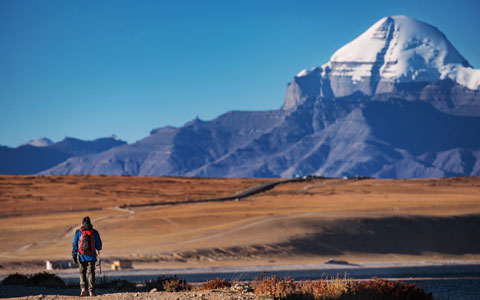
Visit Mt. Kailash in a Week, Is It Possible?

Why You Shouldn't Miss Mt.Kailash in Your Tibet Tour?
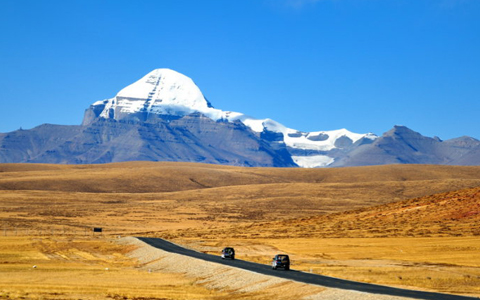
How to Plan a Mount Kailash Trek Tour 2024? A Step by Step Guide

Lhasa to Mount Kailash: Distance, Road Condition, Best Way to Go
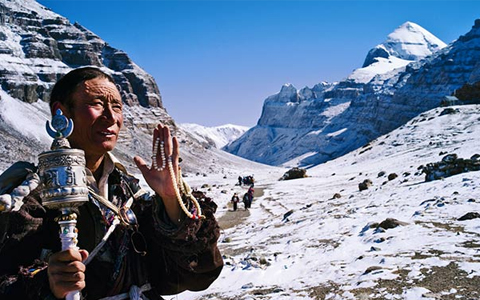
Kailash Mansarovar Yatra: Follow the 9 Steps in 2024
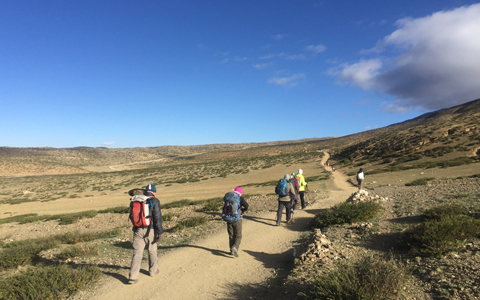
Ultimate Mount Kailash Manasarovar Tour Maps
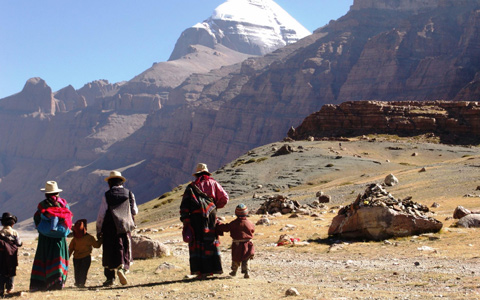
Best Time to Visit Kailash Manasarovar: New Updates for 2024
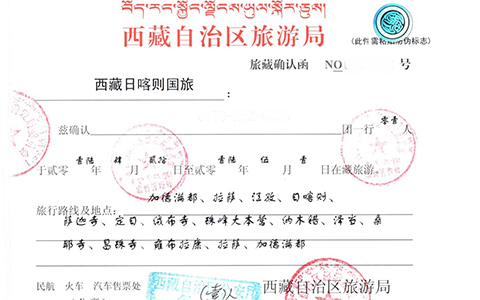
Mount Kailash Travel Permit
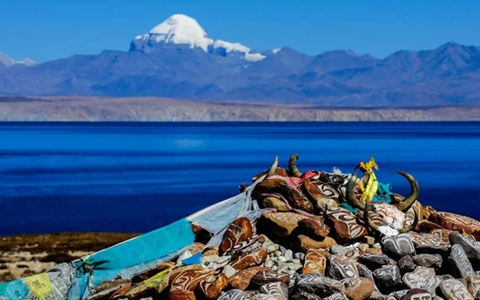
Photography Guide to Mt.Kailash Tour: The Best 7 Photography Spots You Can’t Miss
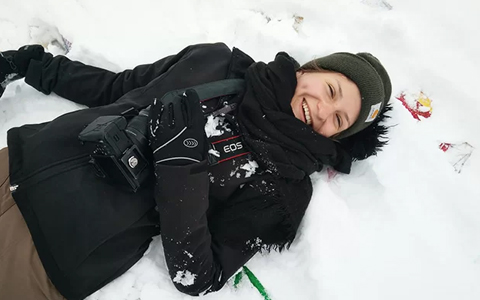
Altitude of Mt. Kailash Tour or Kora and How to Avoid the High Altitude Sickness

What to eat during Mt.Kailash trekking?
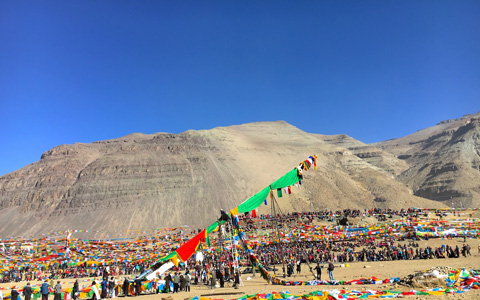
Why Should Do Kailash Mansarovar Yatra during Saga Dawa Festival?

Hotels in Mt. Kailash
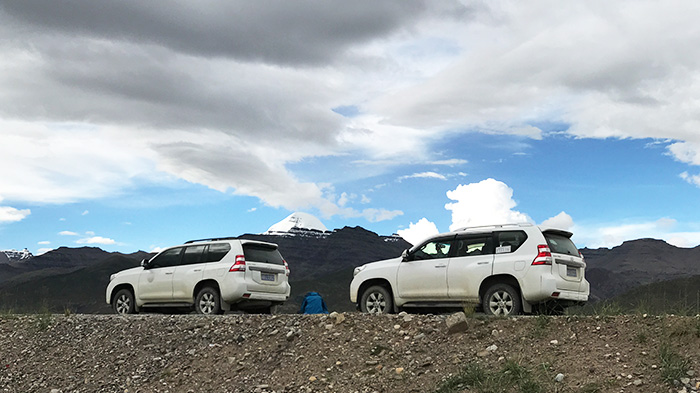
Which Route is Best for the Kailash Manasarovar Tour: Southern Route or Northern Route?
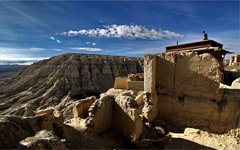
Legendary Zhangzhung Kingdoms and Civilization in Ngari, Western Tibet

Five Monasteries around Mt.Kailash

Is Kailash Mansarovar Tour/Yatra Safe? 6 Tips to Keep You Safe During a Mount Kailash Tour

Ngari Altitude: How to Visit Famous Ngari Attractions with Varied Elevations
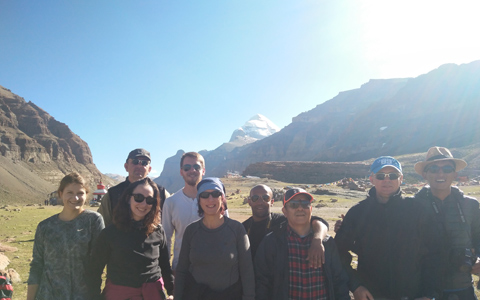
Top 20 Mount Kailash Tour FAQs that You’ll Absolutely Need

Mount Kailash Pictures & Videos

How to Plan a Mount Kailash Tour from the USA, including Tibet Permits, Best Travel Time, Transportation, Tour Cost, Packing List
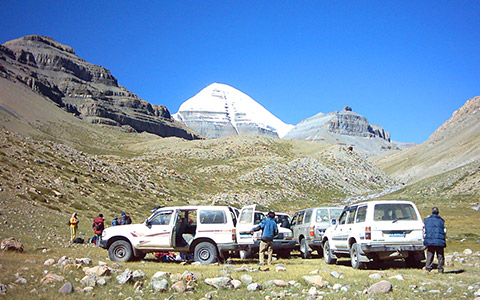
Mount Kailash Tour from Nepal: How Far and How to Get to Mt. Kailash and Manasarovar by Road and Flight
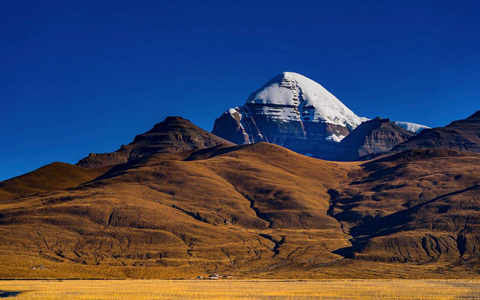
Climbing Mount Kailash: Can I Climb Up to Mount Kailash? Is It Allowed?
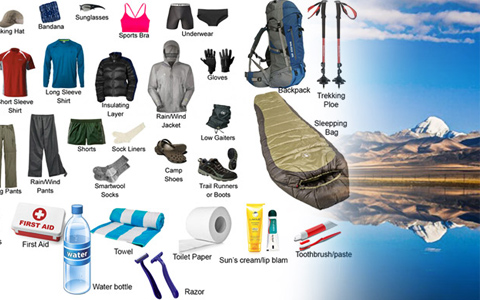
What to Pack for Mount Kailash Tour and Trekking?
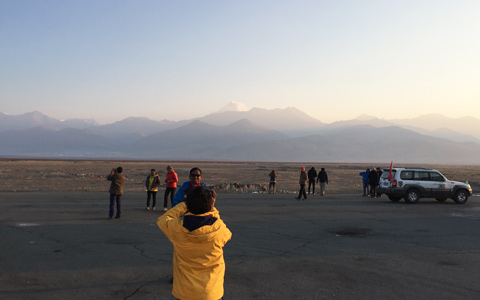
How to Get to Mount Kailash & How to Reach Manasarovar Lake?
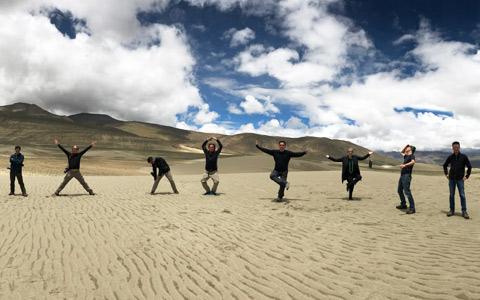
Saga to Manasarovar: distance, how far, road condition, map and what to see along the way
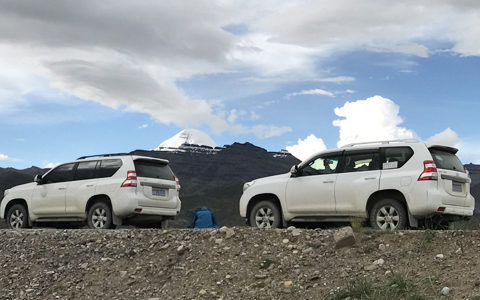
How to Get to Mount Kailash: the ultimate guide for 2024
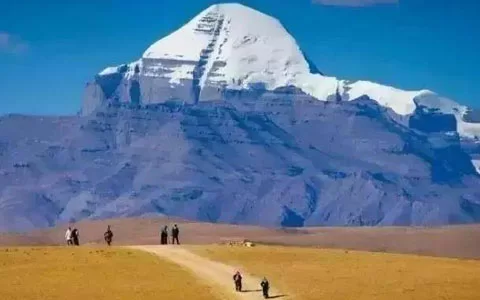
How to Get to Mount Kailash from Nepal: by Flight or Overland?
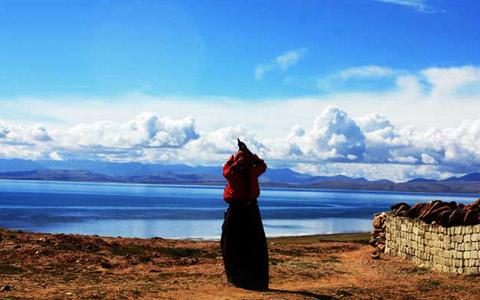
How to Plan a Journey to Mount Kailash in Your Tibet Tour 2024
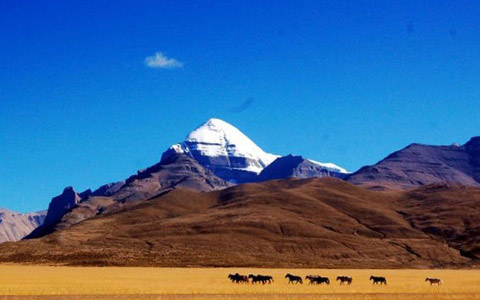
Mount Kailash Tour from Chennai: How to Plan a Mount Kailash Pilgrimage from Chennai

Mount Kailash Tour Cost: How Much to Cost for a Mt Kailash Trip?
Quick Inquiry
We’ll get back to you within 24 hours.
- "Please tell us more about your travel plan so we can provide as much information as possible to serve you better."
If you are planning to enjoy a lifetime Mount Kailash tour, yet have no ideas of how to sort it out the details, no worries!, we would like to hear your tour plan and offer free professional consultancy and viable solutions. Please feel free to contact us.
Tell Us your Travel Plan
Have a Question? Scan the QR code to contact our travel consultant on Wechat.

Or, leave your questions here. We will get back to you within 24 hours via email.
Have a question ask below or call +86 28 81754631.
Question Summary *
Please fill in your contact information, we will send you the answer by email
Country * : United States India Australia Malaysia United Kingdom Singapore Canada Germany China France Indonesia Hong Kong, China Netherlands Spain Italy New Zealand Brazil Mexico Thailand Switzerland Japan South Africa Nepal Philippines Russia Sweden Belgium Argentina Austria Ireland Israel Chile Vietnam Denmark Bangladesh Poland Portugal Sri Lanka South Korea Oman Romania Pakistan Other Colombia Hungary Taiwan, China Finland Greece Turkey Norway Mongolia Bhutan Bulgaria Costa Rica Myanmar Saudi Arabia Slovenia Ukraine Lithuania Egypt Qatar Mauritius Serbia Ecuador Uruguay Iran Niger Venezuela Cyprus Lebanon Nigeria Honduras Latvia Peru Guatemala Belarus Cambodia Estonia Kenya Macau, China Malta Tunisia Albania Bahrain Jordan Luxembourg Andorra Azerbaijan Georgia Guinea Kuwait Panama El Salvador French Guiana Iceland Kazakhstan Macedonia Micronesia Montenegro Morocco Paraguay Tanzania Uzbekistan Zimbabwe Anguilla Armenia Belize Benin Bolivia Botswana Dominica Eritrea Ethiopia Fiji Laos Liberia Libya Malawi Mali Moldova Monaco Namibia Norfolk Island Reunion Island Somalia Swaziland Tajikistan Turkmenistan Tuvalu Yemen Zambia Afghanistan Algeria Angola Antarctica Aruba Bahamas Barbados Bermuda Burkina Faso Burundi Cameroon Chad Comoros Djibouti East Timor French Polynesia Gabon Gambia Ghana Gibraltar Greenland Grenada Guadeloupe Guam Guernsey Guyana Haiti Iraq Jamaica Jersey Kiribati Kosovo Lesotho Liechtenstein Madagascar Maldives Martinique Mauritania Mayotte Island Montserrat Mozambique Nauru New Caledonia Nicaragua Niue Palau Pitcairn Island Puerto Rico Rwanda Saint Helena Saint Lucia San Marino Senegal Seychelles Sierra Leone Suriname Timor-Leste Togo Tokelau Tonga Islands Uganda Vanuatu Vatican City Western Sahara Western Samoa Costarica Croatia Czech Korea
SUBMIT Cancel
0 Comment ON "KAILASH MANSAROVAR TOUR/YATRA "
Check All Tibet Travel FAQs Here
Get Started - KAILASH MANSAROVAR TOUR/YATRA
You’re getting closer to your dream Tibet vacation! Fill out this form so our travel designers can start helping you plan a trip.
- Hot Countries !
- Hot Countries & Regions
- United States
- United Kingdom
- Hong Kong, China
- Netherlands
- New Zealand
- Afghanistan
- Burkina Faso
- El Salvador
- French Guiana
- French Polynesia
- Liechtenstein
- Macau, China
- Mayotte Island
- New Caledonia
- Norfolk Island
- Philippines
- Pitcairn Island
- Puerto Rico
- Reunion Island
- Saint Helena
- Saint Lucia
- Saudi Arabia
- Sierra Leone
- South Africa
- South Korea
- Switzerland
- Taiwan, China
- Timor-Leste
- Tonga Islands
- Turkmenistan
- Vatican City
- Western Sahara
- Western Samoa
- Top 5 star hotel
- Standard 5 star hotel
- Comfortable 4 star hotel
- Economic/budget 3 star hotel
- Budget Guesthouse
- Google/Web Search
- Previously Traveled with Tibettravel.org
- Friend's or Family's Recommendation
- Other Website/Blog
- TripAdvisor
- Other Social Media
(We can make your travel plan better and faster by having your instance messaging contact.)
Ready for an once-in-a-lifetime tour in Tibet? Our Tibetan travel guru Sonam Tenpel, with 20 years' guide experience, will show you what the REAL Tibet can be. JOIN his Tibet tour course and make the most of your Tibet tour. All FOR FREE!


- Enquire Now
Kailash Manasarovar
In the presence of the Glorious One
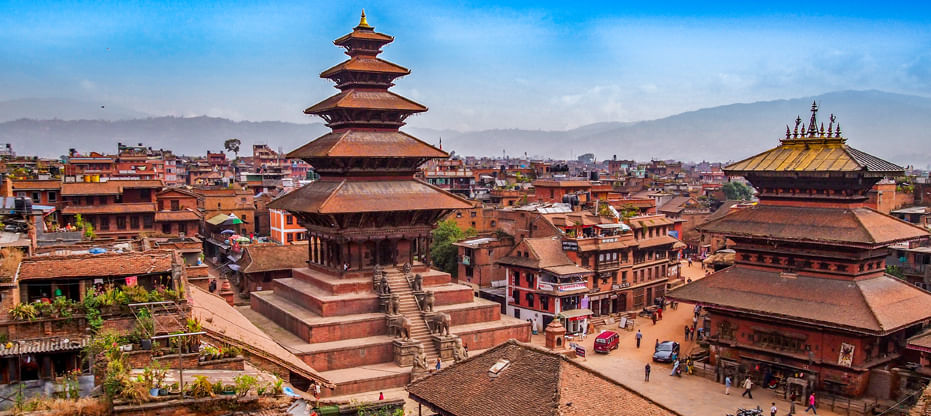
Catch your first glimpse of this vibrant city as you are transferred to your hotel, and take some time to settle in before we embark on this journey. Spend time exploring the Pashupatinath Temple Complex and Patan – an ancient city of fine arts.
Enjoy the sight of small hamlets and villages nestled in the lush greenery of the Himalayas as we drive to Timure, a border town in Nepal. We complete immigration before driving further to Kerung, a place described as the “Valley of Happiness.”
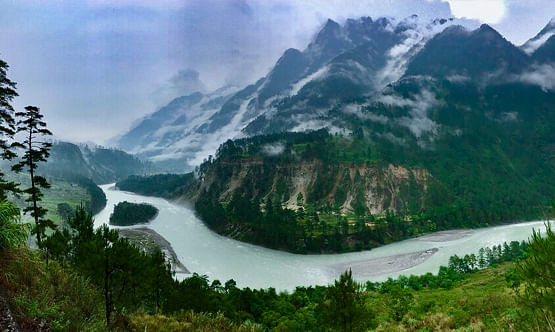
Feast your eyes on the enchanting beauty of Tibet, the awe-inspiring landscape, and the changing hues and colors of the surrounding mountains as we drive down to the city of Saga. We stay here for an additional night to acclimatize to the altitude before continuing our journey to Lake Manasarovar.
Manasarovar
Prepare yourself to witness the incredible sand dunes, snow-capped mountains, and serene lakes on the way to Lake Manasarovar. The highest source of freshwater in the world, this blue and emerald-green lake presents a truly otherworldly spectacle.
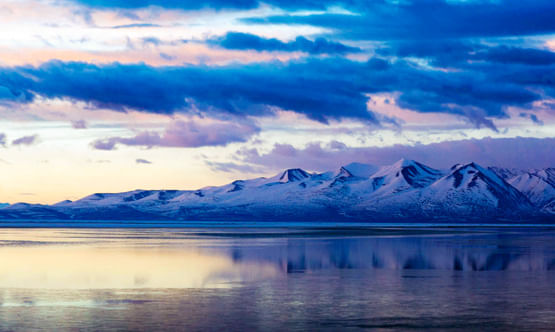
A mystical day of meditation and invocation awaits. Experience a refreshing shower from the waters of Lake Manasarovar, known to be the epitome of purity. It is said that the water from this lake has healing properties as well as the power to dissolve one's karma.
Get ready for a trail that is as challenging as it is rewarding. Pack and drive to Yamadwar, the starting point of the trek, before setting off for Dirapuk. As you get closer to Kailash, experience the powerful and indescribable phenomenon of this revered mountain. While staying the night at its base, indulge in the beauty and immensity of the esoteric Kailash.
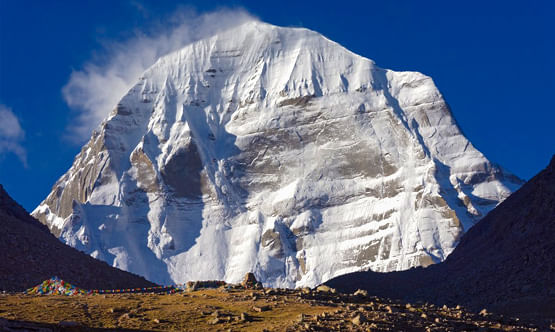
Get a glimpse of the South face of Kailash as we trek down to Yamadwar – the "Gateway of Salvation" and a path to the heavenly abode of Lord Shiva. We will make our way back to Darchen for the night.
Saga & Kerung
After the immensity of Kailash, enjoy a relaxing journey back to Nepal. Along the way, if time permits, we will visit the cave where Milarepa, the great Tibetan saint, spent a long time in meditation.
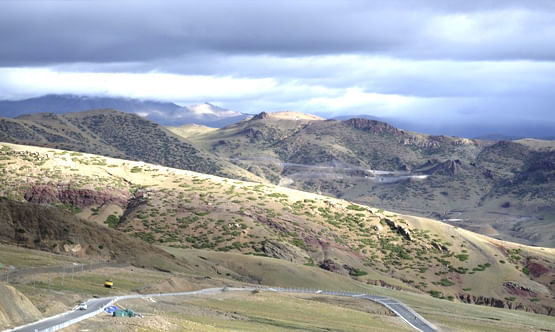
Drive back to Kathmandu after completing immigration formalities at the Tibet-Nepal border. We close the sojourn with a satsang and Guru Pooja, an offering of gratitude to the great masters of the past and present.
- Places to See
Kailash Mansarovar Yatra: A Complete Guide
- Updated on Mar 23, 2024
The Kailash Mansarovar Trip is a holy experience and the most popular trekking destination in Tibet. Attracting thousands of Hindu and Buddhist pilgrims every year, it revolves around the Mt. Kailash (6636m) and the sacred Lake Manasarovar. The trip includes a breathtaking view of Mt. Kailash along with other mountains in the Karakorum Range and Naga Parbat.
Besides, it has been referred to in the Holy Scriptures as the cosmic axis (the center of the world) and is a place where people cleanse their souls. The peaceful Lake Mansarovar is another specialty said to have been first created in the minds of God Brahma and later manifested on earth thus getting the name Maan (Mind) Sarovar (Lake).
Table of Contents
Trip highlights.
Get to view the panoramic view of Mt. Kailash (6636m), Mt. Everest (8848m), Mt. Cho Oyu (8201m), and others
Visit the beautiful Lake Mansarovar and Rakshas Lake
Head to numerous monasteries like Dira Phug and Zuthrul Phug on the Kailash Manasarovar trips
Kailash Mansarovar Trip Route
There are numerous ways to reach and travel Lake Manasarovar and Mt. Kailash (6636m). In fact, all of these routes settle at Darchen which is the starting point for Mt. Kailash parikrama and other travel options. The following are some of the routes for the Kailash Manasarovar Trips.
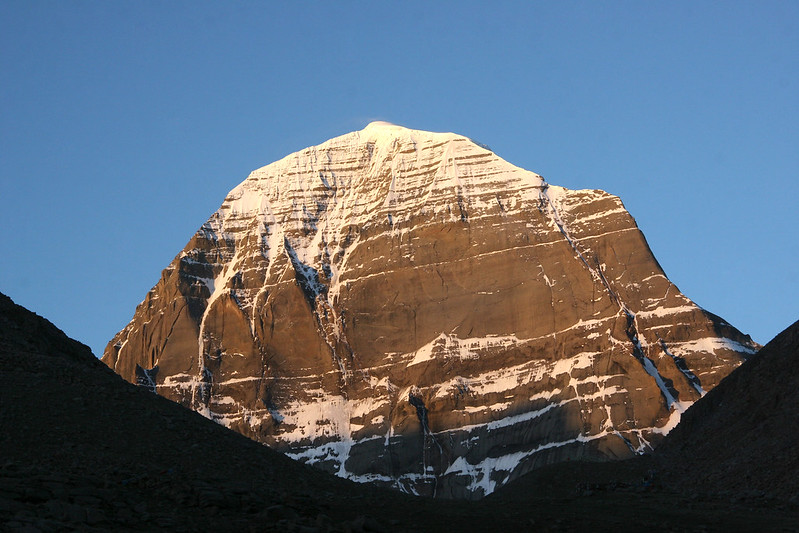
Overland Route from Kathmandu
The Kailash Overland Route from Kathmandu passes from the Gyirong port over the border of India and China. The trip starts with a bus ride from Kathmandu to Sino-Nepal Border on Rasuwagadhi Fort which will take you 2 days at most. The bus ride will take you to Gyirong town from where you will travel 593 km to Darchen. You will stop on the way at Saga (4450m) and Paryang (4560m) to acclimatize. Along the way, you will also pass the holy lake of Mansarovar. Finally, you will reach Darchen which is the final destination on the trip.
Also, another alternative to this route is taking a flight to Lhasa which is at a height of 3656m. In fact, it is easier to get used to the higher altitude from this route. The famous Potala Palace along with the holy Jokhang Temple will greet you in Lhasa along with the Drepung and Sera Monasteries. From Lhasa, you will shortly reach Paryang where the route joins from Gyirong port to reach Mt. Kailash (6638m).
Simikot/Hilsa Route from Kathmandu
This route is the shortest trekking route for the Kailash Mansarovar Trip. Your trip starts with either a bus ride or a flight to Nepalgunj from Kathmandu, which lies in the western Terai plains in Nepal. From here you will drive further to Simikot. Your adventure on foot starts from the height of 2985m at Simikot.
From here, you will reach the Nara La Pass (4530m) which will eventually lead through the dry Tibetan plateaus. After a four-day trek through the plateaus, you will reach the Hilsa border and will trek further to Shear which is the starting point for your Kailash Tour. You can enjoy sightseeing in the Garuda Valley and reach Darchen from where the tour kicks off. You will be able to view Mt. Kailash (6636m) along with Lake Mansarovar as well. The trek takes a total of 20 days to complete.
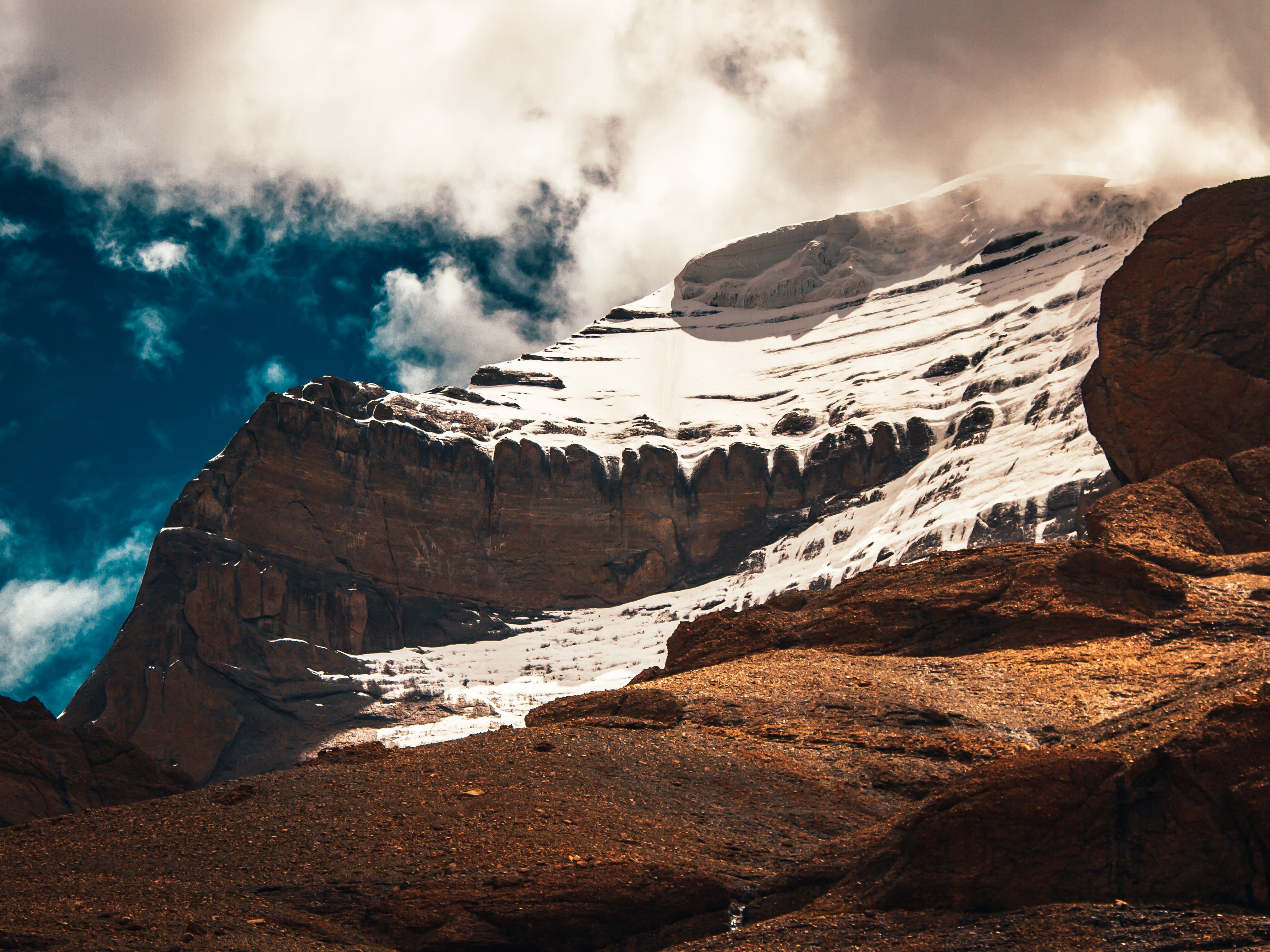
Mt. Kailash via Lhasa
Another alternative for the Simikot/Hilsa Route from Kathmandu is taking a flight to Lhasa which is at a height of 3656m. The journey kicks off with a short plane ride from Kathmandu to Lhasa Gonggar International Airport in Lhasa. The famous Potala Palace along with the holy Jokhang Temple will greet you in Lhasa. Along with these, there are also the Drepung and Sera Monasteries which have huge cultural importance.
From Lhasa, the drive starts as you head west through highways that offer views of the Tibetan Plateau and Brahmaputra River. The drive first reaches Gyantse where you can visit the Pelkor Monastery and Gyantse Kumbum stupa. Shigatse is your next destination which greets you with open arms.
You can visit the beautiful Tashi Lhunpo Monastery in Shigatse and then continue your journey to reach Nagari town of Saga. Darchen, the starting point of the Kora can be reached by road from Saga. At Darchen, you can choose to explore Manasarovar Lake and indulge in other activities.
Helicopter ride via Simikot
Another alternative to the overland trip from Kathmandu is you can also take a helicopter ride to reach the Sino-Nepal Border. It takes a total of 12 days to finish the tour from Kathmandu. If you are travelling from Nepalgunj then it will take only 10 days to complete.
The trip starts with a short flight to Simikot from Kathmandu where you will have to go through the immigration procedure. The road trip starts from Hilsa and you will then take a drive to Taklakot where you will spend your night getting used to the altitude. Finally, you will then take a drive to Darchen with a night’s stop in Purang to acclimatize. Darchen lies at the base of Mt. Kailash (6636m) and is the starting point of the Kailash Kora.
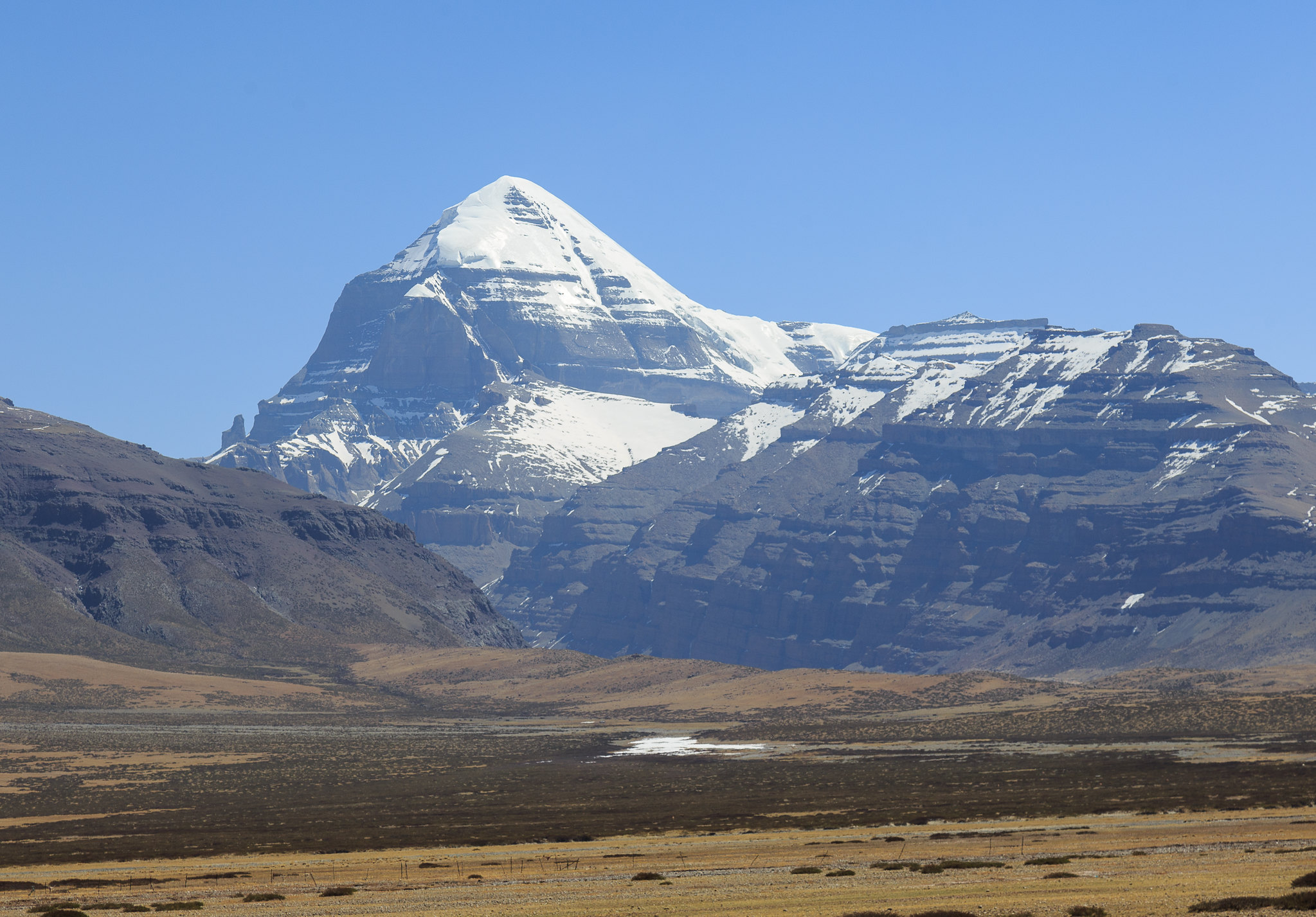
Mount Kailash Mansarovar Kora
Mount Kailash is known as the centre of the world, it is the residence of god, and a trip around Kailash is said to bring spiritual peace to people. Mansarovar, on the other hand, cleanses your soul of evil and sins. Kailash Mansarovar Kora is famous among the followers of Buddhism, Jain, and Hinduism alike to gain spiritual peace. Kora is another name for Yatra, a mix of pilgrimage and meditative practices.
Likewise, these trips are also said to relieve the pilgrims from their mortal sins. All in all, the Kailash Mansarovar Kora is a trip to cleanse your soul and reach a spiritual haven.
The Kailash Manasarovar Kora begins at Darchen which sits just a few kilometres northeast of the holy Lake Manasarovar. Pilgrims and travellers can easily reach Darchen from Manasarovar via a short drive or walk. Darchen is officially the starting point of the Kailash Kora and serves travellers with several lodging and dining services.
The Kora follows a clockwise route and passes numerous landmarks like Dira Phug Monastery (4080m), Dolma La (5660m), and Zuthrul Phug Monastery (4835m) on the way. The trip starts from Darchen from where you pass the Seralung Monastery to reach the base of Mt. Kailash. Marvelling in the holy view you can then explore the Gyandrak Monastery (i.e. the first monastery in Kailash) as well.
The trail can be difficult and steep at times so, travellers must exercise caution and safety while performing Kora. Continuing ahead, the Kora heads towards Darpothe Sak Dawa Monastery which lies further north of the Seralung Monastery.
As the trip reaches the northernmost rote on the Kora, travellers arrive at the Dira Phug Monastery. The entire trail is made up of rough Himalayan landscapes to make way towards the monastery. From here, the trek heads southeast as the trail ascends gradually to the top of the Dolma La Pass (5660m).
The trail on this part also offers the opportunity to take a detour to Gauri Kunda and Ganesh Kunda. The top of the pass offers surreal views of Mt. Kailash (6636m) and Naga Parbat range. As the Kora reaches its final section, the trail crosses the Zuthrul Phug Monastery and Gyandrag to return to Darchen.

Tips for Kailash Mansarovar Trip
Instead of just visiting the land to see the natural wonders, indulge rather in Kora and rejuvenate your spiritual energy while trekking along the trails of Kailash and Mansarovar. It is a good opportunity to learn about Tibetan culture and also to enjoy the pilgrimage along with the others. The majestic views of the surrounding Himalayas and the gleaming lakes are added benefits of Kora.
The best time to indulge in the Kora is from September to November and March to May when the temperature is moderate and the roads are less slippery. During the winter season (December to February), the roads are dangerous to venture into as they are mostly slippery and covered in snow. Similarly, the monsoon season (June to August) should also be avoided since the rainfall can cause major issues for either trekking or touring.
Accommodation and Food
Most of your nights will be spent in guesthouses, monasteries, or small nomad tents. You will be given simple local foods with not much variety so you will have to take what you can get. Taking a sleeping bag and some snacks from the main cities can be beneficial on your trip.
Permits and Visa
The permits that you will need can only be applied for by travel agencies on behalf of the travellers. TTP (Tibet Travel Permit) is the most important permit which allows you to enter Tibet. Likewise, all travellers must procure a Tibet Group Visa via a travel agency before leaving for Tibet.
Since you will be travelling to some of the coldest areas in Tibet, make sure you are wearing warm clothes to protect your body heat. Also, be sure to pack waterproof gear as you can never be too aware of the changing weather in the region. It is a must that the travellers remain warm and comfortable during the Kailash Manasarovar trips.
The Kailash Mansarovar Yatra is a journey to find spiritual peace and revel in the beauty of mesmerizing nature. While the trip is one of the holiest to Buddhist and Hindu devotees, it offers a surreal travel experience to all travel lovers. Experience the Tibetan culture and geographical beauty as you head to a destination that oozes beauty, thrill, and mystery.

Send us your feedback
Recent posts.
- UNESCO World Heritage Sites of Nepal
- Everest Base Camp Trek Distance
- Explore the Upper Dolpo Circuit Trek
- Makalu Base Camp Trek Difficulty
- Manaslu Circuit Trek Packing List
- Kathmandu And Pokhara Tours Package
Related Posts
- Nepal Travel Guides
- Nepal Trekking Guide
- Things to Do
- Uncategorized
We use cookies to ensure that we give you the best experience on our website.
Nepal Trek Booking Open For 2024 2025

( [email protected] )
Kailash mansarovar yatra.
The Kailash Mansarovar Yatra From Kathmandu, Nepal is a 13-day journey that takes you to the holy mountain of Kailash and the sacred lake of Mansarovar. The journey starts from Kathmandu, the capital of Nepal, and takes you through a scenic and adventurous route, crossing the border into Tibet, China.
Outline Itinerary:
- Day 01: Arrival in Kathmandu
- Day 02: Fly from Kathmandu to Nepalganj
- Day 03: Fly from Nepalganj to Simikot
- Day 04: Helicopter to Hilsa, Drive to Purang (Taklakot)
- Day 05: Taklakot Rest Day Acclimatization
- Day 06: Manasorovar to Darchen
- Day 07: Darchen to Diraphuk
- Day 08: Trek to Zuthulphuk
- Day 09: Zuthulphuk to Manasarovar lake
- Day 10: Hilsa to Simikot/Kathmandu
- Day 11: Departure
Highlights:
The Kailash Mansarovar Yatra From Kathmandu, Nepal is a journey that is filled with spiritual and adventurous highlights. Some of the major highlights of this journey are:
- Kailash Mountain: The holy mountain of Kailash is the highlight of this journey. The mountain is considered sacred by Hindus, Buddhists, Jains, and Bon followers. The peak is located in the Kailash range, which is part of the Transhimalaya in Tibet.
- Mansarovar Lake: The sacred lake of Mansarovar is another major highlight of this journey. The lake is believed to have cleansing and healing properties and is considered one of the most important pilgrimage sites for Hindus and Buddhists.
- Scenic and adventurous route: The journey from Kathmandu to Kailash Mansarovar is filled with scenic and adventurous routes. The trek from Simikot to Hilsa is a challenging trek that takes you through rugged terrain and high-altitude passes. The drive from Purang to Lake Mansarovar is also a scenic drive that takes you through the Tibetan Plateau.
Challenges:
The Kailash Mansarovar Yatra From Kathmandu, Nepal is a journey that is filled with challenges. Some of the major challenges of this journey are:
- Altitude sickness: The journey takes you through high-altitude passes and terrain, which can cause altitude sickness. It is important to acclimatize properly and take necessary precautions to avoid altitude sickness.
- Rugged terrain: The trek from Simikot to Hilsa is a challenging trek that takes you through rugged terrain. It is important to have good physical fitness and endurance to undertake this trek.
- Weather conditions: The weather conditions in the region can be unpredictable and harsh. It is important to be prepared for extreme weather conditions, including snowfall and strong winds.
what Expect
Kailash Mansarovar Yatra is a once-in-a-lifetime experience that offers a chance to connect with oneself, nature, and the divine. The Yatra is a journey to the sacred destinations of Mount Kailash and Mansarovar Lake, located in the Himalayas. The journey takes you through remote and challenging terrain, offering an opportunity to experience the beauty and divinity of the Himalayas. In this post, we will explore what to expect from the Kailash Mansarovar Yatra.
Spiritual and Emotional Experience
Kailash Mansarovar Yatra is a spiritual and emotional experience that offers a chance to connect with oneself, nature, and the divine. The journey takes you to the sacred destinations of Mount Kailash and Mansarovar Lake, which are considered holy by Hindus, Buddhists, Jains, and Bonpas. The Mansarovar Lake is believed to be the source of four of the world's major rivers, and a dip in its holy waters is believed to purify the soul. The journey to Mount Kailash is believed to be a path to liberation, and a journey that helps one shed their ego and connect with their inner self.
Challenging Terrain
The journey to Kailash Mansarovar is a physically and mentally challenging one. The journey takes you through remote and challenging terrain, where the weather can be unpredictable and the altitude can cause altitude sickness. The trek to Kailash includes crossing the Dolma La Pass, which is situated at an altitude of 5,630 meters. The trek requires good physical fitness and stamina, and it is important to acclimatize properly to avoid altitude sickness. The journey to Kailash Mansarovar is not recommended for people with health conditions that can be aggravated by high altitude or extreme weather conditions.
Cultural Exchange
The journey to Kailash Mansarovar offers a chance to meet and interact with people from different cultures and backgrounds. The Yatra is organized by the Ministry of External Affairs, Government of India, and the Government of Nepal, and people from all over the world participate in it. The journey offers a chance to learn and grow by interacting with people from different parts of the world and experiencing their cultures and traditions. The journey also offers a chance to interact with the local people in Tibet, who are warm and hospitable.
Good Planning and Preparation
The journey to Kailash Mansarovar requires good planning and preparation. The journey involves obtaining necessary permits and visas, booking travel and accommodation, and preparing for extreme weather conditions. It is essential to plan the journey well in advance and make all necessary arrangements to avoid last-minute hassles. It is also important to pack wisely and carry all necessary items, including warm clothes, comfortable shoes, and a first aid kit. It is also recommended to have travel insurance that covers high altitude and extreme weather conditions.
COST INCLUDES
This trip includes, this trip excludes, cost and date.
Book this trip with us. Here are the upcoming dates. Feel free to share this trip with your friends and family. For custom trips or general inquiries contact us.
Accommodation
Luxury and good standard hotel are in the cities like Kathmandu, Nepalgunj, Pulang ,Darchen Lhasa and Shigatse, at other places like manasoravar lake and During Kora of kailash there are guest houses and lodges with basic facilities without any modern amenities.
Nepalgunj: Siddhartha 4* Hotel and same Category .
Simikot: Best Guest House available .
Hotel Himalayan 4*Hotel and same Category
Hotel Himalayan (Darchen) 4* and same Hotel Category
Manasarovar: Dormitory style Guest House with common bathroom. During Kailash
Parikarma : Sharing basis Dormitory with Common Toilets.
All pure and freshly cooked vegetarian meals during entire trip of MT.Kailash with experienced Indian and continental cook and Sherpa’s from Nepal .Every Meal would be Buffet.
Meals Arrangement
We have arrange all pure and freshly cooked Indian vegetarian meals whereas all the foods required are transferred from Nepal and fruits juice and vegetables are brought in local market. All our Team and staff will take care of you arrangement from wake up tea to the night bed.
Trip leaders
All trips leaders are one of our professional English-Hindi speaking trip leaders who are different from the tour guides our trip leaders are trained they know the areas like their backyards and have explored like dozens of times. With an experience of more than ten years, every one of them has served more than hundreds of guests from all over the world. They are responsible, trustworthy and have their own life experience and story to share which will add more fun and safety to your Trinetra holidays we put the cost of paying our guides a good wage straight into the tour price so they are happy and not reliant on guest's spending money shopping to earn their own salaries. Thus they concentrate on your needs and being the best hosts to you that possibly can.
ALTITUDE SICKNESS
while going to high altitude Parts of your trips above 2500 meters/9200 feet where it is common for travelers to experience some adverse health effects due to the altitude - regardless of your age, gender and fitness. Take it easy, and follow our suggestions to reduce the sickness effects. The altitude problem is a very common for everyone who arrives at the high altitude region from lower altitude area, but some are affected seriously and some are not, so there is certain way to prevent it or minimize its effect by preparing before you go to highlands. Here we have listed some tips that we had experiences in the past years.
1. Mental preparation, altitude sickness is also can be helps psychological, so you should take it very normal and keep your mind in a comfortable state.
2. Keep your body physically fit, so exercise regularly and make physically fit.
3. Sleep well and rest well on the day before your arrival to high altitude.
4. Take everything slowly for the first couple of days when you arrived in high altitude region, walk slowly and try to sleep lower altitude first.
- Drink enough water and avoid alcohols.
Currency: Only US Dollars & Euros can be exchanged in Yuan for this you may change currency from banks in Tibet to Chinese Yuan, currency used in Tibet or For INR get exchange on your country with Exchange or you can find in Nepal also but as the rates fluctuate almost every day. And buying and selling rate always differ .
We recommend that you insure yourself against sickness, emergency surface or air rescue, accident, trip cancellation, medical treatment, hospitalization etc. We regret that such policies are not available in Nepal.
Communication: You can make calls from almost everywhere. Tibet has good networking for mobile phones. And during stay at hotels you can use wife if available otherwise you find a Chinese Sim-card on purchase which may cost 200 Yuan.
Clothing, equipment and accessories
While driving, it will be warm inside the vehicle but windy cold outside. Mornings and evenings will be generally cold therefore warm clothing will be required. We recommend that you bring the following clothing and accessories with you.
Footwear
- Good well worn-in walking shoes.
- Warm comfortable trekking boots.
- Wool shirts
- Cotton shirts
- Regular underwear
- Thermal underwear
- Culottes/trousers for women
- Trousers/shorts for men
- Wind and rain gear with hood
- Wool hat/mittens/gloves
- Wool and cotton socks
- Lined zip jacket/down jacket with hood
- Sleeping clothes
Accessories
- Personal first-aid
- Flash light/torch with extra batteries
- Sun glasses
- Water bottle
- Swim suit (for use before and after Tibet trip)
- Note book, pens, pencils
- Plastic bags for reading material, film, cameras etc
- Dust mask, silk scarves for use against dust
- Sun block cream and lip salve, sanitizer
Documents
- Passport (with photocopies) - Travel Insurance (with photocopies) - Airline Tickets (with photocopies) - Some recent two inch colorized photo - RMB Cash - Credit or debit card
TERMS & CONDITIONS
Trinetra holidays kindly request you to read the terms and conditions thoroughly. Please feel free to speak to us, if there is any confusion.
1: Booking a trip
Valid passport for six month and more and 6passport size photographs copy(scan copy or send to contact person with 25% amount of the entire trip cost is required to be paid. while the rest of the payment should be done upon your arrival in Nepal before departure of your trip. Please do your planning carefully as per your budget and time. You need to make booking before 40 days of departure dates.
Prices quoted are subject to change as per the change in exchange rates, unavoidable circumstances like climatic change, flight cancellation, internal political situation etc. However there are no any hidden costs. Do mail us for best rates: [email protected] .
3: Cancellation & Refunds
Cancellation time and refund policy are as follow: All the cancelation and refund charges are based on the total cost of tour packages.
- 90% refundable if cancel before 40 days or month before the trip.
- 40% refundable 20 days of departure date weeks before departure date.
If you cancel the trip 08 -15 , 25% of total cost.
- 0% refundable less than a week.
4: Passport & Visas
All the travelers should have valid passport for six month and visa can be obtain from Nepalese embassy or consulate in India, however visa is stamp at the time of arrival in Airport. For yatra you get a group visa and we get entry in group as per size. While submitting passport for visa it’s not necessary to send your old passport.
5: Change/Delay in Program
Sometime due to the unavoidable circumstances like bad climate, political unrest, landslides, health illness, natural disasters which are beyond human control may occur, we will be happy to refer you for any alternative trip to suit you.
6: Health & Fitness
We advise you have check with your personal physician before making any trip. It is advisable to let us know if you have any problems with your health.
7: Travel Insurance
It is advisable you compulsory have your travel insurance to cover accidents, emergency rescue in case of unfavorable climatic condition.
8: Complaints
Any complaints during the trip can be informed to your tour leader or guide immediately or at the office after completion of the trip. The management will try to look into the matter and take action accordingly.
We may collect the personal details and information for official uses. But the information provided by individual will not be shared or published without the individual consent. We respect the privacy of every individual
Lake Manasarovar: a Mystical Sacred Lake in Tibet
In remote western Tibet, Lake Manasarovar sits at the foot of Mount Kailash. The lake is believed to be the most sacred one in Tibet and has the most transparent water among all the lakes in China.
Believers' passion for Lake Manasarovar is deep because it is considered a place where a true believer can become a god. What makes this lake so awesome for so many people? Part of the mystical qualities are the beauty and remoteness of the rugged land in western Tibet.
Here, we have provided you with a full guide to visit Lake Manasarovar, including some basic information, the highlights, and how to go on a yatra.
- Name: Lake Manasarovar
- Tibetan: Mapham Yum-Tso "Victoria Jade Lake"
- Chinese: 玛旁雍措
- Location: West Tibet, near India/Nepal, 1,200 km (745 mi) by road from Lhasa
- Altitude: 4,556 meters (14,947 ft)
- Things to do: Worshipfully walking round it, hiking, photographing
Things to Do when Visiting Lake Manasarovar
1. enjoy the breathtaking scenery.
Lake Manasarovar is beautiful. The blue of the lake mirrors the blue sky and white clouds, and in a climate with little vegetation and grey dirt, the blue of the fresh water contrasts strikingly with the white sides of Mt. Kailash nearby.
A monastery called Chiu Gompa to the northwest of Lake Manasarovar is one of the best places to enjoy the view. Climb up the hill near Chiu Gompa and a bird's-eye view of the whole of Lake Manasarovar comes into view.
Check out other sacred lakes in Tibet .
2. Take a Bath in a Hot Spring
A natural hot spring is located in the small village near Chiu Gompa. This is the best way to wash away your fatigue.
3. Go on a Lake Manasarovar Yatra
Every year, pilgrims from India, Nepal, China, and many other countries visit Mount Kailash for a yatra (a pilgrimage to a holy site) and to do a kora (a sacred walk) around the sacred mountain. Some of them also do a kora around Lake Manasarovar, which is believed to bring cosmic blessings.
The path around the lake is about 90 kilometers and may take 3 to 4 days to finish. Compared to a Mount Kailash kora, a trek around Lake Manasarovar is easier due to the lower altitude and less bumpy mountain roads.
However, the streams and rivers on the way could cause some challenges. Although some bridges were built, they may still cause serious disadvantages during rainy seasons.
No matter what religion you believe in, or even if you are not religious, going on a yatra around Lake Manasarovar can be a memorable experience. If you want to go on your yatra, check out our complete guide .
Nearby Attractions
Lake Rakshastal, located 2 miles away from Lake Manasarovar is considered to be a lake of demons and people avoid even touching it lest they get cursed. Regardless of its story, the scenery is as beautiful as Lake Manasarovar.
Mount Kailash is a holy peak for four religions and the kora around it is more challenging.
Modern Convenience of Visiting Manasarovar
Now it is no longer so difficult to travel there. Moneyed modern pilgrims sometimes go there by jet and then heated helicopter from Nepal. The Kailash and Manasarovar scenic area is now connected by a nice two-lane paved road, with comfortable warm hotels in Shigatse .
Real believers might find themselves jostling with busy picture-taking sightseers for some space on the lake's shore of rock and sand. At night tourists congregate on the shore to watch the flickering lights of pilgrims.
Tips for Visiting Lake Manasarovar
The best time to go.
In winter, heavy snow causes problems and the lake might be frozen. Therefore, late spring to early autumn (May to September) is the best time to go there.
If you are going to do the kora, autumn (September to November) is the best time as there is warmer weather and less chance of rainfall.
Altitude sickness and preparation
The high altitude makes it dangerous for acclimatized people to exert themselves. We advise that you prepare physically and bring the right equipment and clothes if you are planning a Lake Manasarovar yatra.
Can I Bathe or Fish in the Lake?
Bathing or fishing in Lake Manasarovar is not allowed so as to protect the fragile natural environment.
Visit Lake Manasarovar with Us
We can help you visit Lake Manasarovar as an extension to one of our most popular Tibet tours:
- 4-Day Lhasa Highlights Tour: Explore Lhasa's highlights with sufficient oxygen, and enjoy meticulous care and assistance.
- 8-Day Lhasa-EBC-Lhasa Roof of the World Adventure
Or let us help you arrange a customized trip to the area. Our Tibetan tours can include a guided hike around Lake Manasarovar with full logistical support. We can help you get a Tibet Entry Permit and other permits needed for that part of Tibet.
Get Inspired with Some Popular Itineraries
More travel ideas and inspiration, sign up to our newsletter.
Be the first to receive exciting updates, exclusive promotions, and valuable travel tips from our team of experts.
Why China Highlights
Where can we take you today.
- Southeast Asia
- Japan, South Korea
- India, Nepal, Bhutan, and Sri lanka
- Central Asia
- Middle East
- African Safari
- Travel Agents
- Loyalty & Referral Program
- Privacy Policy
Address: Building 6, Chuangyi Business Park, 70 Qilidian Road, Guilin, Guangxi, 541004, China
- Destinations
- Popular Treks
- Book Your Trek
- +61 419 025 831
Everest Base Camp Trek - 14 Days
Annapurna base camp - 14 days, mount kailash manasarovar lake trek – 15 days.
- Enquire Now Book Now
Want to Speak with an Expert?

Overview ↑ -->
Trip highlights.
- Guided tour of Kathmandu City – the capital of Nepal.
- Panoramic drive Kathmandu – China/Nepal Friendship Bridge – Nyalam – Kathmandu.
- Reach and admire a holy mountain – Mt. Kailash Kora.
- Enjoy and wander around the sacred lake of Manasarovar.
- Cross the Dolma La Pass placed at 5,600 metres in altitude.
- Experience the life in the shoes of the “mountain people” of Tibet.
Trip Information
Mount Kailash Manasarovar Lake Trek is a very unique trek as it overlaps partly on a pilgrimage circuit. This tour is an immersion inside the remote, wild western Tibet reaching till the altitude of 5,600 metres.
Mount Kailash 6,714 m , also called Kang Rinpoche – Jewel of the Snows or Tise is a famous holy place of Tibet . The pyramid-shaped summit of Mount Kailash, considered as the heart of the metaphysical and physical universe is sacred for several religions devouts like Buddhists, Hindus, Bonpos and Janis . For Hindu people this is the abode of Lord Shiva. For Buddhist people is the telluric version of the cosmic mandala of Bodhisattvas and Dyani Buddhas.
For adventure trekkers Mount Kailash Manasarovar Lake Trek is an itinerary which takes you through a severely secluded region, where one can admire the greatness of nature in absolute peace and solitude. For the pilgrims arriving here it is the ultimate stage of spiritual accomplishment.
If you plan your trip in May, you can take part to the Saga Dawa Buddhist festival or otherwise organise yourself to be here during the full moon, for an exquisite experience.
The other major highlight of this trek is the surreal legendary Manasarovar Lake situated at an altitude of 4,588 metres, the highest placed fresh water lake in Tibet and a holy lake. Manasarovar Lake is the source of Sutlej River . The lake is considered sacred as the legend says Parvati, Lord Shiva’s wife, bathed here and infused magical powers to the water. Taking into consideration that the pyramid summit of Mt. Kailash reflects on the water, the holiness of this lake is emphasised.
For a magnificent sunset over the Manasarovar Lake, visit the Jiwu Temple.
Mount Kailash is circled by five monasteries Drirapuk Monastery, Nyari Monastery, Dzultripuk Monastery, Gyangzha Monastery and Selung Monastery. Even if the monasteries are destroyed in various degrees, one still can admire statues, sculptures, thangkas, mural decorations and diverse Tibetan cultural objects.
Mount Kailash Manasarovar Lake Trek is a moderate graded trek, as you will cover a large part of it by vehicle, but still requires some trekking at high altitude.
- Day 1 – Arrival at the Tribuwan International Airport in Kathmandu (1,345m). Overnight at a hotel.
- Day 2 – Pre-trip meeting and sightseeing around the Kathmandu valley. Overnight at a hotel.
- Day 3 – Kathmandu to Kodari (114 km, 5 hrs) and cross Border then drive to Nyalam-3750m (32 km, 1 hr). Overnight at a guesthouse.
- Day 4 – Acclimatization day at Nyalam. Overnight at a guesthouse.
- Day 5 – Drive from Nyalam to New Dongba(4500m), 357 km, 6 hrs. Overnight at a guesthouse.
- Day 6 – Drive from New Dongba to Lake Mansarovar (Hor Chu) 4500 m, 369 km, 6 hrs. Overnight at a guesthouse.
- Day 7 – Lake Mansarovar parikrama by Jeep (88 km, 1.5 hrs) and then drive to Darchen, 88 km. Overnight at a guesthouse.
- Day 8 – Start parikrama to Deraphuk (4920 m), 5 hrs trek. Overnight at a guesthouse.
- Day 9 – Trek Shivasthal-Gaurikunda-Zutulphuk (4820 m)- 9 hrs. Overnight at a guesthouse.
- Day 10 – End of Trek and then Drive to Manasarovar, 3 hrs trek and 1 hr drive. Overnight at a guesthouse.
- Day 11 – Return back to New Dongba, 6 hrs drive. Overnight at a guesthouse.
- Day 12 – Return back to Nyalam, 6 hrs drive. Overnight at a guesthouse.
- Day 13 – Return back to Kathmandu, 4 to 5 hrs drive. Overnight at Hotel.
- Day 14 – Leisure day in Kathmandu. Overnight at a hotel.
- Day 15 – Transfer to the airport for your final flight departure.
Itinerary ↓ -->
Day 1 - landing in kathmandu, altitude 1,345 m.
You will be welcomed at the airport by a Himalayan Steps representative and driven to your hotel. Accommodation in hotel without meals.
Day 2 - Pre-trip meeting and Kathmandu Valley tour
In the morning, you will attend a pre-trip meeting in your hotel, where you will be introduced to your trek tour guide/leader. Please ensure you bring your passport, your travel insurance policy and three passport size photos. Also, you will be invited to sign a non-liability disclaimer, the legally binding trip form and ask all the questions you judge necessary.
After breakfast, your tour starts with a guided visit of Kathmandu and its surroundings. The most prominent monuments of the area, listed UNESCO World Heritage Sites are on the list: Pashupatinath Temple, Boudhanath Stupa, Bhaktapur Durbar Square. Plus the Royal Quarter of Bhupatindra Malla, the Palace of 55 windows, art galleries, the Lion Gate, the Golden Gate. And also, you can visit the Thamel area, if you want to have a shopping session.
Accommodation in hotel with breakfast.
Day 3 - 6 hours drive from Kathmandu to Kodari and after crossing the Chinese border, arrival in Nyalam, at an altitude of 3,750 m
Today you will get up early and prepare to cross the border with China, you will first arrive in Kodari, a settlement in the area of the frontier between Nepal and China. Himalayan Steps border representative will be there to help with formalities. After that you will walk on the Friendship Bridge and take the car and head towards Nyalam.
Accommodation in guesthouse with breakfast.
Day 4 - Spare time for acclimatization in Nyalam
Today you will spend the day in Nyalam to acclimatize to high altitude. You can hike around to get used with the atmosphere. Accommodation in guesthouse with breakfast
Day 5 - 6 h drive from Nyalam to reach New Dongba, positioned at an altitude of 4,500 m
Today our route will drive you to Dzongba, Lablung-La Pass situated at 5,100 m, lake Peiku and Milarepa cave and along the River Brahmaputra before arriving in Saga and New Dongba.
Day 6 - 6 hours drive to reach Lake Mansarovar at an elevation of 4,500 m
The highlights of this trip will be revealed today as you arrive in the area of the holy Lake Manasarovar and the sacred Mt. Kailash. In your way you will cross the Mayum-La pass at 5,200 m, the highest pass of this trip that can be crossed by car.
Day 7 - 6 hours drive from Lake Mansarovar to Darchen
Today you will cercle the Lake Mansarovar, clockwise direction and continue your way to Darchen. Optionally you can visit Ashtapad. Accommodation in guesthouse with breakfast.
Day 8 - 5 hours trek to Deraphuk, at an elevation of 4,920 m
Short drive in the morning to Yam Dwar or Sherson, and after that your trek starts, having as target Dera Phuk, the north side of the Mt. Kailash. Accommodation in guesthouse with breakfast.
Day 9 - Trekking route Shivasthal-Gaurikund-Zuthulphuk, at 4,820 m altitude
Today is a demanding day, first you climb till the Dolma-La pass at 5,600 m and after that you descend via the River Bank till you arrive in Zuthulphuk. Today on your route will pop up some interesting highlights Dolma-La, Shivasthal and Gaurikund. Accommodation in guesthouse with breakfast.
Day 10 - 3 hours trek and drive back to Manasarovar
An easy 3 hours trek in the first part of the day, till the end of the trekking route, at Darchen. From here you will be transferred towards the eastern side of Lake Manasarovar. Accommodation in guesthouse with breakfast.
Day 11 - Return to New Dongba
It’s time to see one last time Mount Kailash and Lake Manasarovar, and then return after a 6 h drive to New Dongba.
Day 12 - Drive back to Nyalam
You will keep the same route while returning and will come back to Nyalam, after a 6 h drive and a distance of 357 km.
Day 13 - Return to Kathmandu
Today you will be driven from ZhangMu, via Friendship Bridge and Kodari to reach Kathmandu.
Day 14 - Relaxing day in Kathmandu
This is a rest day in Kathmandu or you can choose an activity among an array of options, from rafting adventure to shopping tour. In the evening you are invited to attend a farewell dinner in Nepalese traditional style accompanied by cultural show. Accommodation in guesthouse with breakfast and farewell dinner.
Day 15 - Departure day
Your tour has ended and you will be transferred to the airport for your international flight to reach your next destination.
Included ↓ -->
Price includes:.
- Pick up from and drop off at the hotel and the airport on a private tourist vehicle.
- Twin sharing accommodation in a threestar hotel in Kathmandu; Breakfast included. (4 nights)
- Basic guesthouse accommodation for the tour in Tibet (dormitory style room with common toilet) including breakfast
- All transportation by private tourist vehicle for the tour in Kathmandu and in Tibet (4 passengers in one Land Cruiser)
- Truck to transfer the equipment and food during the driving tour if you have choosen for Tented Camp Stay in Tibet.
- Guided city tour in Kathmandu on a private vehicle on day 02
- Sightseeing/monument entrance fees in Kathmandu (on Day 02).
- Government-licensed English-speaking Tibetan tour guide while in Tibet.
- The required number of ground staff for the tour like helpers and drivers.
- Food, accommodation, salary, insurance, equipment and medicine for our ground staff.
- A down jacket and a sleeping bag provided (which needs to be returned after the trip).
- Free duffel/kit bag and sunhat (yours to keep).
- Farewell dinner in typical Nepali Restaurant with cultural dance show on second last day (On Day 14th).
- Tibet entry permission, Chinese visa and monastery entry fees.
- Yak and yak men during the Kailash Kora (one yak for every two clients)
- Portable Altitude Chamber (PAC) and oxygen (in case of emergency).
- All government taxes, vat and Tourist service charges
- All official expenses.
Price Does not Include:
- Lunch and dinner in Kathmandu. Depending on your budget, it may cost about USD 15 to USD 20 per person.
- International airfare and airport departure tax.
- Travel insurance which covers emergency Rescue and Evacuation.
- Nepal entry visa – you can obtain a visa easily upon your arrival at the Tribhuwan International Airport in Kathmandu. (Tourist Visa with Multiple Entries for 15 days can be obtained by paying US $ 25 or equivalent foreign currency. Similarly, Tourist Visa with Multiple Entries for 30 days and 90 days can be obtained by paying US $40 and $ 100 respectively. Please bring 2 copies of passport size photos).
- Internet and telephone calls.
- Lunch and dinner for entire trip – about USD 15 to 20 per person per day.
- Item of Personal nature like alcohol, hot & cold drinks and laundry.
- Personal clothing and equipment.(See the equipment tab for detail information)
- Tips for trekking staff and driver. (Tipping is expected)
- Others expenses not mentioned in the Price Includes section.
Equipment ↓ -->
The information below has been created so that you can use this as a guide in understanding the necessary equipment, clothing, gear, medicines and miscellaneous items required for this trekking tour. This list is of a general nature and you may decide to add or remove some of these items, please make sure that you have enough clothing to maximize your comfortability whilst on the trek.
We will provide you with a porter and a duffel bag to support and carry your heavier belongings however we do recommend that you also bring your own daypack to carry your money, personal items and any important documents.
- 4 seasons Sleeping bag
- Duffel or Rucksack bag or suitcase.
- Down Jacket
Upper Body – Head / Ears / Eyes
- Shade hat or baseball cap.
- Warm wool or synthetic hat that cover your ears.
- Balaclava – lightweight, thinner variety.
- Glacier glasses-100% UV protection with side shields and a hard-sided storage case (i.e. Julbo or Cebe).
- Headlamp – Black Diamond and Petzl both make several good ones.
- Some people like ear-muffs (optional).
- A neck warmer (optional).
- 1 pair liner gloves, thin wool or synthetic.
- 1 pair warm gloves (heavier fleece or wool).
- 1 pair shell gloves or mitts; Gore-Tex.
- Instant hand warmers (optional).
- T-shirts (2).
- Light and expedition weight thermal tops.
- Fleece jacket or pullover.
- Fleece Wind-Stopper jacket (optional).
- Waterproof (preferably breathable fabric) shell jacket.
- 2 women sports bras
Lower Body – Legs
- 2 pairs nylon hiking shorts
- 2 pairs lightweight long underwear – capilene or other synthetic.
- 1 pair soft shell pants – synthetic, full zip from top and bottom preferable.
- 2 pairs trekking pants.
- 1 pair hard shell pants. Waterproof / breathable, Gore-Tex.
- 1 pair cotton pants (loose jeans/khakis).
- All clothing should be kept dry using waterproof stuff sacks or large puncture resistant plastic bags.
- 4 pairs of liner socks, synthetic or capilene.
- 3 pairs heavy weight socks to be worn over liner socks.
- 1 pair light weight socks, a good option for the lower / warmer parts of the trail.
- 1 pair light to medium weight water proof hiking/trekking boots.
- 1 pair light trekking shoes or sneakers.
- 1 pair hiking gaiters (Optional).
- 1 pair sandals (Optional).
Medicines and First Aid Kits
(Important: Our guide will already have a first aid kit which they bring with them however we also recommend that you bring some of these medicines with you in your daypack too.)
- Extra Strength Excedrin for altitude related headaches.
- Ibuprofen for general aches and pains.
- Immodium or Pepto bismol capsules for upset stomach or diarrhea.
- Diamox (commonly prescribed as Acetazolamide) 125 or 250mg tablets for altitude sickness.
- 1 small personal sized first-aid kit with blister treatments such as mole skin, band-aids, some waterproof tape, anti-infection ointments, etc.
Miscellaneous, but Important !
- Passport and extra passport photos (4 copies).
- Airline ticket
- Durable wallet / pouch for travel documents, money & passport.
- Lip balm. At least SPF 20, 2 sticks.
- Sunscreen. SPF 40.
- Pocket knife or small Swiss Army type.
- Water purification Iodine tablets or Polar-pure crystals.
- Toiletry kit. Be sure to include toilet paper stored in a plastic bag, hand wipes, and liquid hand sanitizer, towel, soap, etc.
- 2 bandanas.
- 1 pair adjustable trekking poles. (Optional).
- Favorite snack foods, no more than 2 pounds (Optional).
- Paperback books, cards, mp3 player (Optional).
- Binoculars (Optional).
- 1 light weight point & shoot camera or 1 large SLR. (Optional).
- A pee bottle for men and pee funnel for woman (Optional).
- 1 small stainless steel thermos (Optional).
Helpful Tip: For the majority of these items, clothing and equipment there are numerous different brands to choose from, we recommend that you buy most of these when you fly in to Tibet if possible because this way it can be a lot cheaper for you. If you would like any specific suggestions, please ask and we can certainly recommend those for you.
FAQs ↓ -->
Here's a few answers to most common questions asked by the customers., what type of fitness or shape do i need to be in +.
The Mount Kailash Manasarovar Lake trek is physically possible for anyone that is of an average fitness level, there is no previous experience required. We generally recommend however that you train for 2-3 months in advance of your departure date and some of the activities you can do is walking or hiking, running or even better running on a treadmill at incline.
Alternatively swimming is a great choice too. Typically you should be doing at least one or a combination of these activities for an hour each time and roughly 3-4 times a week in the lead up to your trek in Tibet.
Will somebody come to pick me up at the airport upon my arrival? +
Yes, one of our staff members will be waiting at the airport with a signboard ready to collect you once you arrive and from there we will transfer you by private vehicle to the hotel.
What is your cancellation policy? +
If you want to cancel your reserved tour, we may refund your fee payable to us minus a $150 cancellation fee (5000 INR for Indian Nationals). Himalayan Steps will not accept refunds for flights if we already booked your flight. In some cases we may reschedule your trip at no cost or with some cost if you provide us with 7 days advance notice.
We will not give any refunds if you finish the trekking earlier or later, or cancel your tour for medical or personal reason while trekking.
Our Company
Contact info.
+61 419 025 831 (Customer Service)
Chaksibari Marg, Thamel, Kathmandu, Nepal
himalayan_steps

- Privacy Policy
- Terms & Conditions
You are viewing our newly redesigned website. Feedback?
- Live Webcast
- Advanced Meditation Program
- Meditation Programs at Ashram
- Meditation Programs
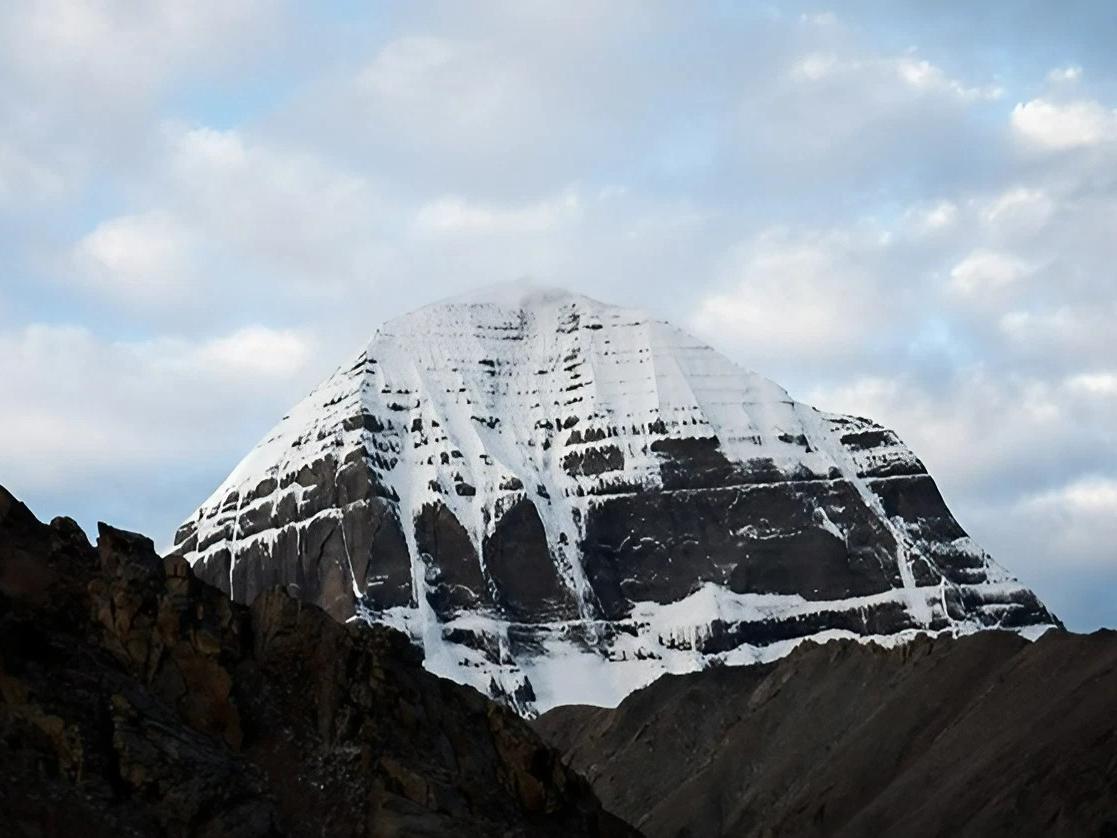
Kailash Mansarovar: Significance, history, & best time to visit
Often Mount Kailash, popular as the heavenly abode of Lord Shiva, is popular for its majestic beauty and Mansarovar. The lake is an inseparable part of Kailash. Mansarovar is a large freshwater lake situated in Tibet (China) and is a pilgrimage holding religious importance for Hindus, Jains, and Buddhists. Every year lakhs of pilgrims and tourists across the world visit Mansarovar to experience the beauty and piousness of the place.
The abode of Shiva is in Mount Kailash, and the smashana, the cremation ground. Kailash means ‘where there is only celebration’, and smashana is where there is only void. Divinity dwells in the void as well as in celebration. And in you there is void, there is a celebration. – An excerpt from Gurudev’s talk on Lord Shiva
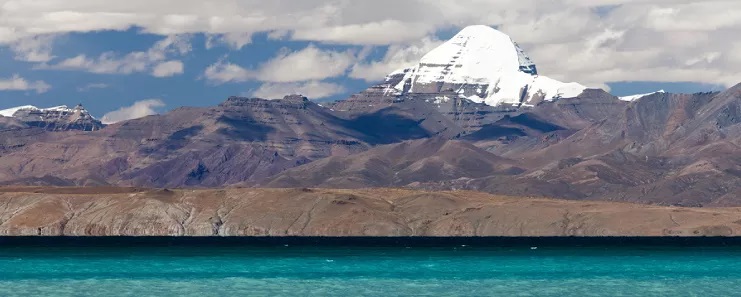
Meaning and history of mansarovar
Mansarovar is considered as one of the Holy places as the legends say that the lake is a bathing place for gods during Brahma Muhurta. According to Hindu beliefs, the lake was first created in the mind of Lord Brahma and so is named Mansarovar. Mansarovar, as the name suggests, is a combination of two Sanskrit words: manas means ‘mind’ and ‘intellect’ and sarovar means ‘lake’ .
It is believed that at Kailash Mansarovar the lords reside and meditate. The reason why Mansarovar cannot be everywhere is because of the aura of the place. Holy lake Mansarovar is compared with the mind of lords which is as calm as water and as strong and tranquil as a mountain.
Must watch Significance of Mansarovar
Why visit mansarovar?
1) Religious importance: According to the scriptures, the lake is considered sacred. The beauty and significance of Mansarovar are described beautifully in many scriptures.
In Hinduism , it is believed that taking a dip in the Kailash Mansarovar or drinking the water washes away all the sins.
According to Jains, the lake is believed to be the place where Lord Rishabh Deva, the first Tirthankara attained spiritual liberation.
According to Buddhism, Mount Kailash is also known as Meru Parvat and it is considered to be the place where Lord Buddha stayed and meditated.
According to Bon Religion, “ Zhang Zhung ” is a holy place in Tibet. It is believed that the founder of Bon religion Tonapa Shernab visited Tibet for the first time and took a bath in this lake.
According to Sikhism, the lake is believed to be the place where Guru Nanak Dev, the founder of Sikhism and the first of the 10 Sikh Gurus learned to meditate.
2) Geographical importance: Mount Kailash is the central part of the earth surrounded by 6 other mountain ranges from the sides. The campus of Mount Kailash is considered to be the focal point of the whole universe.
Apart from being a beautiful place, Lake Mansarovar is the highest freshwater lake in the world standing at a height of 4,557 meters above sea level, making it one of the highest lakes in the world. The place is best to go deeper into samadhi. Lake Mansarovar is the point of origin of four major rivers namely Brahmaputra, Ghagra, Sindhu, Satluj.
3) Medical Importance: The trip to Mansarovar is a good opportunity to get to know the herbs and shrubs that surround Mount Kailash. The wild plants and flowers are used for medicinal purposes. There are various flowers such as Nagmani flower, which is shaped like a snake stone and attracts tourists with its beauty. Bicchu ghas also known as stinging nettle plant in English grown at Mansarovar has diverse medicinal benefits. Stinging nettle (Bicchu ghas) is useful to cure joint pain and works as acupuncture.
4) Tourist attraction: If you love nature, lakes, snowy mountains, greenery, you will love Mansarovar too. The Mountain Kailash is surrounded by flourishing gardens. You will get a glimpse of beautiful flowers like lotus, lili and swans, enhancing the beauty of the lake. During sunrise, you can see the golden peak of Mt. Kailash which is a sight to behold. The order of the place, the scenic beauty of Mansarovar is widespread and something you don’t want to take your eyes off. It is said that Mansarovar is Asia’s most religious, most challenging and among the most-visited trips.
Places to visit near mansarovar
Though traveling to Mansarovar in itself will be a refreshing and adventurous journey for you. But there are some other highlights too for you so that you must not miss any fun coming your way.
1) Gauri Kund: Another tourist attraction is Gauri Kund, also known as Parvati Sarovar. There are mystical stories weaved around this. It is believed that the lake is the bathing place of Devi Parvati where she also created Lord Ganesha. This lake is also titled as the lake of compassion.
2) Rakshas Tal: Rakshas tal is also known as ‘Ravana lake- the lake of Demons.’ It is believed to be the dwelling place of Ravana and so it was named as Rakshas Tal. The lake is situated near Mansarovar and is recognized as the largest saltwater lake of Tibet. The lake includes four islands namely Dola, Topserma, Lachato, and Dosharba. People residing near this lake don’t take bath in this tal as the water in the lake is very salty and poisonous.
3) Kailash Parikrama: Mount Kailash is known as the residing place of Lord Shiva and Goddess Parvati. According to Shiva Purana, circumambulating the mountain helps you get rid of all your sins. The circumambulation distance is a 3-day 53 kilometers journey. The journey is adventurous and one has to face many challenges due to extreme weather and low availability of oxygenZ.
What is the best time to visit kailash mansarovar?
People who have been to Mansarovar say that the most appropriate time to visit Kailash Mansarovar is the summer, between April to September as the ice starts melting, making the temperature soothing for trekking, sight-seeing, and enjoying the beauty of the place.
You may like:
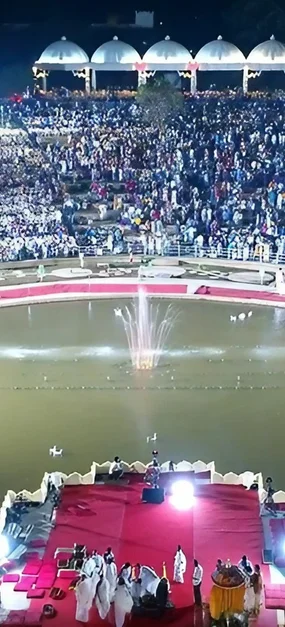
Significance of Maha Shivratri
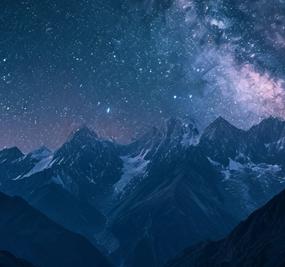
Who is Lord Shiva?

Why to fast on Maha Shivratri?
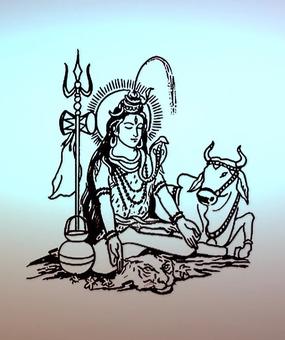
Symbolism behind the form of Lord Shiva
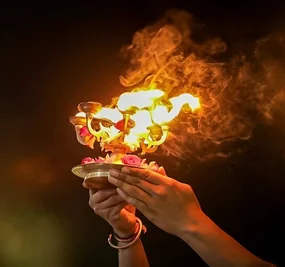
What to do on Maha Shivratri?
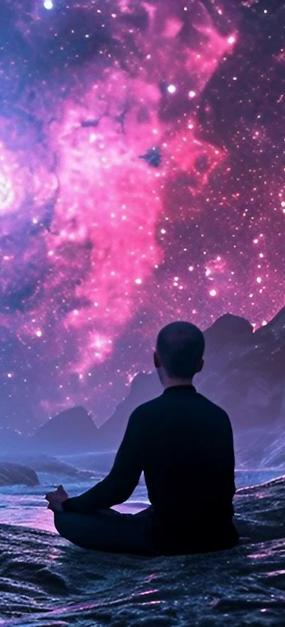
Celebrating your personal Maha Shivratri

Join the Live Webcast

Take a Sankalpa

Attend Meditation Program
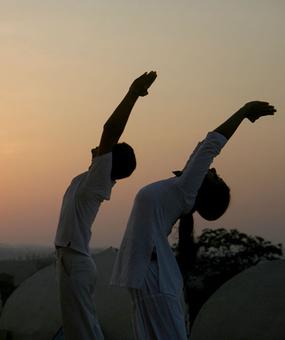
Detox with Sri Sri Yoga Deep Dive
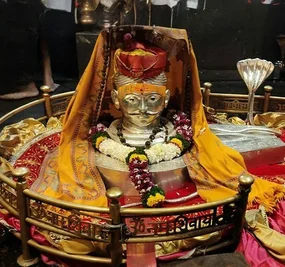
Bhimashankar Jyotirlinga
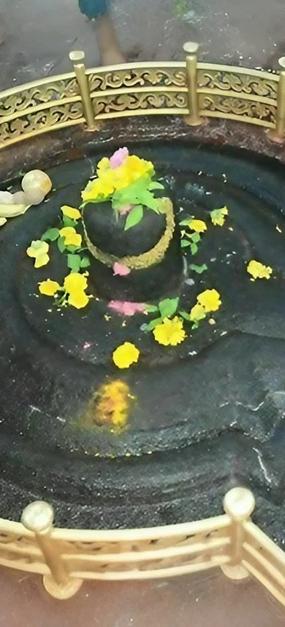
Grishneshwar Jyotirlinga

Why is Maha Shivratri Celebrated?

Who is shiva?

Why should we meditate on Maha Shivratri?

Gurudev's guide to Maha Shivratri fasting

Gurudev demystifies Shiva

Did Lord Shiva and Parvati got married on Maha Shivratri
Plan Your Trip
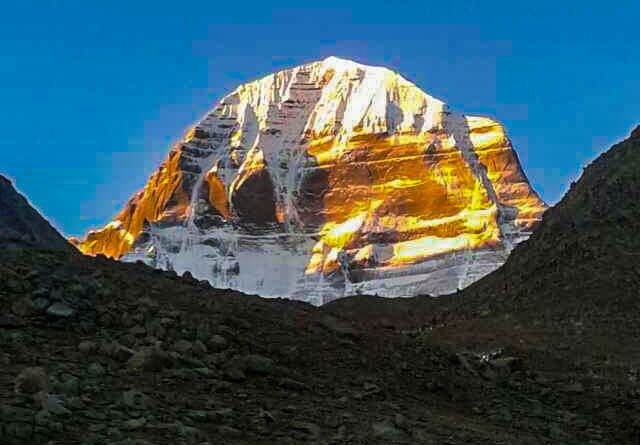
Mount Kailash Mansarovar Tour via Hilsa Border
Mount Kailash Mansarovar Tour via Hilsa Border Overview
Mount Kailash is the mountain abode of Lord Shiva and the place of eternal pleasure for Hindus around the world. Kailash Mansarovar helicopter tour is a significant program for those who have a very short time and like to complete this Yatra however easily. This tour starts from Kathmandu to Nepalgunj and Simikot by regularly scheduled flight and flies to Hilsa by Helicopter. From Hilsa, we will be picked up by a land cruiser and drop at the border. Then, we proceed to Mansarovar and Kailash Parikarma. Mt. Kailash (6638m) lay in the west corner of Tibet and is locally known as Mt. Meru.
Simikot, in Far Western Nepal’s Humla District is one of the world’s most remote and beautiful regions and is the starting point of our trek into the ‘Kailash Mandala’. We travel along antique pilgrimage trails and trading links, walking across the border into Tibet to Mt Kailash, the holy Lake Manasarovar, representing purity, and Lake Rakshas Tal, representing power. It is believed that stepping on the shore and taking a bath in Lake Manasarovar, or drinking from the water cleans the sins of a hundred rebirths. There are eight gompas around the lake, of which six have been reconstructed. Mount Kailash resembles a huge natural temple. Stones, springs, and hills along the way have a broad religious meaning to the pilgrims. All along the way, we encounter Buddhist shrines, like chörten, Mani walls, and holy footprints, and of course Buddhist monasteries. The pass is adorned with lots of prayer flags and out of devotion people leave clothes, coins, and other personal belongings here.
We will trek through varied diverse, climate, and vegetation zones and experience firsthand richness of cultures in Himalaya Buddhism. In the beginning, we will walkthrough lush greenery, into the arid expanses of Tibet. On the banks of Lake Mansarovar feel like another planet. Crystal clear air, the deep and broad blue lake Mansarovar, the mountain Gorla Mandata, and Mt. Kailash, many historical and Buddhist storied monasteries, fluttering prayer Buddhist flags on the high pass and around, delightful Peace Stupas, and the Chiu Monastery with Melarapa Cave makes our tour more beautiful.
Manasarovar Lake Trek via Hilsa is a great experience offbeat trek that follows the trading route to Tibet Border Hilsa, towards pilgrimage faith around the sacred mountain, and Mansarovar Lake in the core of the universe on Tibet.
Mount Kailash
Mount Kailash, towering at an elevation of 21,778 feet attracts visitors who come to admire its stunning beauty and magnificence. Nestled within the Himalayan ranges in the corner of Tibet Mount Kailash is renowned as one of the highest peaks globally. Moreover it serves as the origin of four rivers, in Asia. The Brahmaputra, Ganges, Indus and Sutlej. Beyond its splendor what draws pilgrims is the profound spiritual essence it embodies. Followers from faiths make a point to embark on a journey, to this sacred site.
Kailash Mansarovar Yatra Highlights
Visit Kailash Manasarovar Lake.
A scenic journey from Nepalgunj till Purang (Tibet) via Simikot and Hilsa.
Magnificent views of Lake Rakshastal and Mount Gurla Mandhata.
The scenic views of different faces of Mount Kailash like the South-west face, west face, west-north, and north face.
A spiritual journey through authentic and explicit Buddhist and Tibetan culture and traditions.
Kailash Mansarovar Parikrama
After completing the journey, to Mount Kailash pilgrims must circumambulate the mountain peak by walking either clockwise or counterclockwise. This practice, known as 'parikrama' offers an alternative for individuals to undertake the ritual on foot by providing them with the choice of hiring a yak or pony.
Religious Significance of Mount Kailash and Mansarovar Lake
The Kailash Mountain and Mansarovar Lake are deeply revered in Asia for their importance. The name "Mansarovar" comes from 'Manas' meaning mind and 'Sarovar,' meaning lake. Legend has it that the Mansarovar Lake sprang from the mind of Lord Brahma thus earning its name. In Hindu tradition Mount Kailash is seen as the dwelling place of Lord Shiva. Is deemed a celestial sanctuary.
In Buddhist tradition Kailash Mountain is believed to be where Buddha Demchok resides, symbolizing harmony. Similarly in Jainism Mount Kailash or Mount Ashtapada is where Rishabhadeva, the founder of their faith attained liberation from the cycle of life and death.
Mansarovar Lake is a location situated around 20 kilometers away from Mount Kailash at an elevation of 15,015 feet. It represents purity. Is believed to cleanse individuals of their sins. The lake has a feature of changing colors. Starting blue, near the shores and transitioning into emerald green towards its center.
Other Major Attractions on Yatra
Besides the Mansarovar Lake pilgrims may also encounter distinctive sites, like Tirthapuri, where pilgrims cleanse themselves in natural spring pools post their pilgrimage. Gauri Kund, renowned as the lake of compassion Yam Dwar marks the beginning of the pilgrimage journey Asthapad serves as the foothill of Mount Kailash and Tarboche is a prayer flag adorned flagpole site. This location bears importance in spiritual beliefs.
How to visit Kailash Mansarovar?
Because Kailash Mansarovar is situated in a restricted area and holds spiritual importance it is recommended to consider joining a guided tour or pilgrimage organized by a reputable travel agency. These tours usually come with thought-out schedules that include transportation, accommodation, permits, and guided support throughout the pilgrimage. By being part of such a tour pilgrims can benefit from the knowledge of guides who make the journey easier provide insights and ensure safety along the trekking paths.
Boldhimalaya has been providing high-quality services in this field for years. We take care of the complexities involved in obtaining permits and visas and arranging transportation allowing participants to concentrate fully on the significance of the pilgrimage. Come join us as we embark on this adventure to one of Earth's religiously important sites.
Route to Kailash Mansarovar Via Hilsa Border
The Tour kicks off with a day of exploring Kathmandu immersing in the citys heritage before taking a flight to Nepalgunj. From Nepalgunj you'll hop on a flight, to Simikot, another to Hilsa near the Nepal Tibet border. Drive to Taklakot for a rest day to adjust and discover the area. Then set off on a journey with a drive to the sacred Mansarovar Lake. Start the Kora by driving to Darchen and Yamadwar trekking to Dirapuk on the day. On the day hike to Zuthulpu K through the challenging Dolma La Pass. Once done with the Kora drive back to Hilsa via Taklakot before flying to Nepalgunj. Wrap up your adventure with a flight to Kathmandu cherishing memories of a pilgrimage, to Kailash Mansarovar.
ARRIVAL IN KATHMANDU
Upon your arrival in Nepal, the land of the Himalayas, our representative from Bold Himalaya will pick you up from the Tribhuwan International Airport. Then, you will be transferred to your respective hotel. You can spend your day exploring the busy Kathmandu. For the day, you can roam around beautiful Thamel and find yourself some typical local products to shop and get a close look at the bustling urban life. You can also visit restaurants and café and try out Nepali cuisine. Overnight in Kathmandu.
Sightseeing
KATHMANDU SIGHTSEEING AND FLY TO NEPALGUNJ
After having our delicious breakfast, we will visit the most historical and spiritual attractions in Kathmandu. Some of these landmarks are considered World Heritage Sites including the historic Kathmandu Durbar Square, the sacred Hindu temple of Pashupatinath, the famous ‘Monkey Temple’ (Swyambhunath), and Buddhist stupa (Bouddhanath) which is one of the largest stupas in the world. The city life is dynamic as the culture and heritage reflect their ethnic identity. Later, there will be a pre-trip discussion. Bold Himalaya will give us brief detail regarding our tour as well as provides us an opportunity to ask any questions we may have regarding our upcoming adventure. You can also go for last-minute shopping for your tour. You will find every branded trekking gear at Thamel
Then, we will fly from Kathmandu to Nepalgunj, which is located in the border region of India in western Nepal. The flight is a panoramic experience above Kathmandu city. It flies across beautiful rivers and hills. Nepalgunj is the hottest city in the nation and a Terai belt of Nepal which holds varied culture and lifestyle. We will explore the local villages, markets, and zoos in Nepalgunj. Overnight in Nepalgunj.
Sightseeing & 1h Flight
Breakfast, Dinner
FLY FROM NEPALGUNJ – SIMIKOT – HILSA & DRIVE TO TAKLAKOT
From Nepalgunj, we will take a short flight to the tiny airstrip of Simikot. It is one of the remote districts of Nepal. Simikot is the doorway to Hilsa and is the Tibetan border from Nepal. The marvellous peaks of far-western Nepal can be explored during the flight. The landscape and little populated arid hills display how struggling are the life in the Karnali zone. The symphonic settlement of Tibetan and Buddhist ethnic group makes the village culturally rich. We will also explore the Gompas and the houses of Simikot. We will rest for a few hours at Simikot.
Then, we will take the helicopter to Hilsa and wait for other members to arrive at Hilsa. According to the visa rule of the Chinese government, all group members should enter together and exit together. After the arrival of all the members, we will drive to the Purang border from Hilsa and to Taklakot and stay at Hotel. Taklakot is the main trading centre for Tibetans and Nepalese as the market place is buzzing with traders and travellers. We will have enough time to stroll around the markets and vendors around Taklakot. After our short excursion around the market, we will stay for the night in a basic guest house at Taklakot. On the way, we have to pass up to 3 checkpoints where checking might take up to 1 hour in each post.
Fly & Drive
Breakfast, Lunch, Dinner
EXPLORE REST DAY AT TAKLAKOT
Today, we will relax in Taklakot for acclimatization. It is vitally important to be properly acclimatized to perform circumambulation (Parikrama) around the sacred mountain Kailash. Also, it is for our safety too. Our body should be adjusted properly in a new environment before we reach more heights
DRIVE TO MANASAROVAR LAKE
As usual, after having a morning meal, we will pack our belongings, then board on the vehicle and proceed to Lake Manasarovar. Right from the beginning, the highway starts making gradual ascend and levels eventually after crossing Mt. Gurla mandate (7,728m). The lake is religiously important for both the Buddhist and Hindu pilgrims. The Hindu believes that the divine water of the lake will purify one’s soul and take to the lap of Lord Shiva after death. On the way, we will stop for 10 minutes to witness the first glimpse of Kailash from Rakhash Lake before reaching Lake Manasarovar.
Then, we will continue our journey for a circumambulation (Parikrama) around the lake. The scenic drive passes through Gurla pass before arriving at Lake Manasarovar (4550m). On the way, we will stop in a lovely place where we make the holy dip, and perform pooja & Homa. After completing all these activities, we will return to the western shore in the evening for an overnight stay.
Sightseen, Explore & Drive
Breakfast, Lunch, DInner
FIRST DAY OF OUTER KORA – DRIVE TO DARCHEN AND YAMADWAR & TREK TO DIRAPUK
Today is the day that we start holy circumambulation around sacred Kailash. As usual, we will get ready to move on from Lake Manasarovar to Darchen which takes around 45 mins drive. Darchen is a tiny village settlement with very few tea houses for the services of travellers and pilgrimages. It is the starting and the ending mark of “Kora” the holy walk around. From Darchen, we will drive to Yama Dwar (also called Tarboche in the Tibetan language) which is 5 km in distance. In Yama Dwar, we will meet our horse/ porter/ yaks then set off together to Deraphuk.
Those who are not doing Parikrama will return to Darchen and wait there for two days. They will stay in Darchen waiting for other members to return who have gone for circumambulation.
The entire trail up to Deraphuk is reasonably flat with gentle ascend, however, due to extreme elevation of this region, we will probably feel exhausted, and need to have broken on the way very frequently. The last leg of the journey is tough with active ascend but, it is only for half an hour.
Deraphuk stands at an elevation of 4920 m. The north face of mount Kailash is just a few thousands of meters far from here. This is the only place to have the nearest view of the north face. We will walk in the shades of the majestic Mount Kailash throughout and enjoy the heavenly landscapes.
Drive & Trek
SECOND DAY OF OUTER KORA – ON TO ZUTHULPUK WITH TREK TO DOLMA LA PASS
Today is the hardest but holiest day of the pilgrimage. We have to cross a significant distance through the rugged portion of the trail around the Mount Kailash before reaching Zutulpahuk. From Deraphuk, we should start very early. Right from the beginning, the trail leads us rapidly up, however, in between it turns into the flat with gentle ascend. Up to Dolma-La (5600 m.), the path keeps us taking up & up. Dolma La is the peak point of this journey. From this onward, the trail leads us all the way down to the valley floor. This particular portion of the trek is a speedy incline and the track is full of boulders and screes, so one should pay to continue attention while trekking down.
While descending from Dolma La, we will pass alongside a small glacial pool called Gaurikunda. It is almost frozen from May through September. The legend of this pool is linked with Mata Parvati, the companion of Lord Shiva.
Once we go down to the valley floor, the trail becomes even and easy up to the Zutulphuk. At Zutulphuk, we will come across the incredible Thugje Zinbu (Lake of Compassion) and a few ancient meditative caves.
DRIVE TO HILSA-SIMIKOT VIA TAKLAKOT
Undoubtedly, today is the most hectic day of our journey. After accomplishing the circumambulation we will drive all the way to Taklakot and then cross the border. As usual after morning meals, we will pack up our belongings then be ready to move on to Darchen. It requires presumably 3 hours reaching the ending point of this trail where our vehicle is waiting to fetch us up. We will board on vehicle and proceed for Taklakot and drive to Hilsa after assembling all group members. It takes 45 minutes to reach Hilsa, where we have to go through the immigration formalities. From Taklakot, a military person will consort the group to guide towards Hilsa. After having luggage checked and going through some formalities again in the border, we will cross over the suspension bridge of Karnali River, then enter into the territory of Nepal.
Then, we will fly to Simikot, the same way as before, while coming from Simikot to Hilsa. 5 persons in each flight and after reaching Simikot, we will get rest in the guesthouse.
Sightseeing & Drive
FLY TO NEPALGUNJ & FLY BACK TO KATHMANDU
We will fly from Simikot to Nepalgunj which takes around 40 minutes and after landing in Nepalgunj we will fly back to Kathmandu with scenic views. After reaching Kathmandu, you will be transferred to your hotel for the overnight stay.
FINAL DEPARTURE
You are bidding good-bye to beautiful Nepal and Tibet as your journey comes to an end today. We will take you to the airport for your flight time. We hope you enjoyed the tour, and are sure you will be back again for more adventure. Approximately 3 hours before your scheduled flight, a representative from Bold Himalaya will take you to the airport. On your way home you'll have enough time to plan your next adventure in the wonderful country of Nepal.
We Are Here To Make You Satisfied. Not Satisfied With The Trip? Don't Worry You can Customize your own trip
Trip Information
Why choose the hilsa border route.
This particular route offers a feeling of exclusivity. It presents unspoiled scenery. It assures an exciting adventure far from the usual paths. This is also the shortest path to Kailash Mansarovar from Nepal. Moreover, This route facilitates Indian travelers to join the Tour from Nepalgunj which is closer to places like Delhi and Lucknow. When travelers enter Tibet they embark on a journey encountering the traditions and practices of communities along the way. Not only does this route offer views of the Himalayas but it also fosters a deep spiritual connection as pilgrims approach Mansarovar Lake and Mount Kailash.
By including flight transportation in the Kailash Mansarovar tour through the Hilsa Border Route, an added layer of convenience and efficiency is brought to the journey. The use of flights significantly cuts down travel time. Enables pilgrims to reach areas effortlessly. These flights provide mesmerizing perspectives of the Himalayas giving travelers a preview of the magnificent landscape awaiting them. Consequently, this route lessens hurdles linked with travel. With its combination of thrill, cultural immersion and spiritual significance the Hilsa Border Route calls out to those, in search of a memorable pilgrimage experience.
Kailash Mansarovar Yatra for Indians
Lately, there have been restrictions imposed by China on Indians seeking visas making it challenging for those wishing to visit Kailash Mansarovar. However, there are ways to catch a glimpse of Mount Kailash without venturing into China. One can enjoy views of the mountain from viewpoints, near the Hilsa border on the Nepalese side. The Hilsa border serves as a gateway to Tibet situated at the intersection of Nepal and Tibet. From the village of Hilsa one can marvel at scenes of the Himalayan scenery with distant sightings of Mount Kailash adding to its allure. Travelers can also venture to locations along the Nepal Tibet border like Taklakot (Purang) and other towns that provide views of Mount Kailash without needing access, into Chinese territory.
Joining Kailash Mansarovar Tour from Nepalgunj
For Indian travelers planning to undertake the Kailash Mansarovar pilgrimage through the Hilsa Border Route commencing the journey, from Nepalgunj offers an easily accessible choice. Situated in the Terai region of Nepal Nepalgunj acts as a stopover for travelers en route to Kailash Mansarovar. Departing from cities like Delhi or Lucknow individuals can travel to Nepalgunj. Upon reaching Nepalgunj travelers can effortlessly join the prearranged tour group. Continue their voyage to Kailash Mansarovar via flights to Simikot and Hilsa followed by ground transportation to Taklakot and onwards to Mansarovar Lake and Mount Kailash.
This alternative not only removes the complexities of entering Tibet from China for travelers but also allows them to experience the varied landscapes and cultural richness of Nepal during their journey. With its positioning and efficient transport connections Nepalgunj serves as a gateway for pilgrims embarking on this sacred expedition to Kailash Mansarovar guaranteeing a seamless and unforgettable experience, from beginning to end.
Kailash Mansarovar Yatra from USA
Hop on a journey from the United States to Kailash Mansarovar, where the rich spiritual traditions and breathtaking natural beauty blend harmoniously to offer a pilgrimage experience. Your trip kicks off with a flight, from the USA to Kathmandu, Nepal, where you can immerse yourself in the culture of this city by exploring its sacred temples, lively markets and historical sites. After soaking in the essence of Kathmandu your expedition moves forward towards Kailash Mansarovar via the Tibet Route.
Kailash Mansarovar Yatra Details
Best time to visit kailash mansarovar.
The best time to do the Kailash Mansarovar Yatra Tour is from March to September. This period falls within the summer and early autumn seasons, which offer the most favorable weather conditions for the pilgrimage. During these months, the temperatures are relatively milder, and the days are longer, providing comfortable trekking conditions for Kora.
During March and April, the temperature at Kailash Mansarovar starts to rise, but the weather remains relatively cold. Average daytime temperatures range from -5°C to 10°C (23°F to 50°F). Whereas from March to June, the weather is generally pleasant, the landscapes are adorned with blooming flowers and lush greenery and the average daytime temperatures range from 5°C to 15°C (41°F to 59°F). However, the trails may still have some patches of snow, particularly at higher elevations.
With typical temperatures between 15°C and 25°C (59°F and 77°F), July and August are the warmest months. The monsoon season, which brings sporadic downpours, begins in these months. During this season, the environment gets even greener, and water bodies are revitalized. The Saga Dawa festival, which commemorates Buddha's enlightenment, is attended by pilgrims in the area, therefore this time of year also has religious significance.
September is another favorable time for the Kailash Yatra, with the monsoon gradually subsiding. The clear and pleasant weather provides breathtaking views of the Himalayan peaks and the surrounding landscapes.
How to prepare for Mount Kailash Mansarovar Yatra Tour ?
Physical Fitness: The Kailash tour involves walking for long hours at high altitudes for Kora. Therefore, it's essential to work on improving your cardiovascular endurance, strength, and stamina. Regular cardiovascular exercises like hiking, jogging, or cycling, along with strength training, will help you prepare for the physical demands of the trek.
Medical Check-Up: Make sure you are physically ready for the pilgrimage's demands by getting a comprehensive medical checkup before starting the walk. You should carry the essential medications and discuss any existing medical issues with your doctor.
Group arrangements for Mount Kailash Mansarovar Yatra Tour
As a travel operator organizing the Kailash Mansarovar pilgrimage yatra, we are well-equipped to cater to groups of various sizes, ensuring a memorable and spiritually fulfilling journey for all participants. You will have to pre-book your trip along with your group members and inform us if you want to make a group trip to Kailash Mansarovar.
For small groups, typically consisting of 6 to 15 participants, we offer an intimate and personalized experience. With a smaller group size, travelers can enjoy more one-on-one interactions with our experienced guides, fostering a close-knit and supportive community.
For larger-sized groups, comprising more than 15 participants, we understand the need for efficient coordination and logistics. Our experienced team is adept at managing larger groups while maintaining a sense of intimacy and individual attention. Despite the larger group size, our guides and support staff are committed to providing a meaningful and transformative journey for each participant.
To guarantee a secure and educational journey, we offer a staff of trained and experienced guides and porters. Our tour guides are seasoned specialists with in-depth knowledge of the spiritual significance, history, and culture of the area. They promote smooth communication with local communities and provide insightful advice because they are fluent in both English and their native tongue.
Your safety and well-being are our top priorities, and our guides manage the logistics while giving you important instructions. Additionally, they provide spiritual counseling, which can help you deepen your connection to the sacredness of the sites and improve your pilgrimage experience.
Transportation arrangement for Kailash Mansarovar Yatra
During this tour to Kailash Mansarovar, a variety of transportation modes are employed to facilitate seamless travel across diverse landscapes. Flights are utilized for long-distance travel, with routes including Kathmandu to Nepalgunj, Nepalgunj to Simikot, and Simikot to Hilsa, providing efficient access to remote areas. Once on the ground, land transportation in the form of buses, vans, or jeeps is used for shorter distances, such as transfers between airports, hotels, and border towns like Taklakot. These combined transportation methods ensure that travelers can navigate both the rugged terrain and the vast distances of the journey comfortably and efficiently, enhancing their overall experience of the pilgrimage to Kailash Mansarovar.
Respectful & Meaningful Etiquette for the Mount Kailash Mansarovar Yatra Tour
Dress modestly when visiting sacred sites and interacting with local communities, covering your shoulders and knees. Seek permission before taking photographs, especially of locals or religious artifacts, and be mindful of any restrictions on photography. Show reverence when visiting temples and monasteries, removing your shoes and refraining from smoking or consuming alcohol. Respect the traditions and practices of the community while embracing them with an open mind. Be ecologically conscientious by abstaining from trash, practicing responsible tourism, and adhering to the "Leave No Trace" philosophy.
Why is it forbidden to climb Mount Kailash?
Mount Kailash holds significance, in both Tibetan Buddhism and Hinduism making it culturally inappropriate to attempt to scale its sacred slopes. It is believed to be the place of the revered Hindu god Shiva and the Buddhist deity Demchok serving as a hub for seekers of enlightenment. While pilgrims often embark on a journey to circumambulate the mountain as a form of tribute scaling its peaks is deemed disrespectful in this context.
Packing Items for this Kailash Mansarovar Yatra Tour
Moisture-wicking shirts and pants
Warm layers (fleece jacket, thermal underwear, down jacket)
Waterproof outer shell jacket and pants
Hiking boots with ankle support
Thick socks
Sun hat, sunglasses, buff or scarf
Gloves or mittens
Gear and Equipment:
Backpack with rain cover
Sleeping bag suitable for cold temperatures
Trekking poles
Headlamp or flashlight with extra batteries
Personal water bottle/hydration system
Portable charger/power bank
Camera or smartphone
Personal toiletries and medications
First aid kit
Sunscreen and lip balm with SPF protection
Miscellaneous:
Passport and travel documents
Cash in local currency
Travel insurance
Copies of important documents
Notebook and pen
Snacks (energy bars, nuts, dried fruits)
Lightweight, quick-dry towel
Insect repellent
List of documents required for Mount Kailash Mansarovar Yatra Tour
Passport: It is necessary to have a passport that is valid for at least six months after the date of the trip. Keep your passport secure and always have photocopies on you as a backup.
Chinese Visa: Since Kailash Mansarovar is located in Tibet, which is part of China, you will need a Chinese visa to enter Tibet which you will obtain from us.
Tibet Travel Permit: Foreign visitors must have this particular permit to enter Tibet. We arranged for you to receive it, which is issued by the Tibet Tourism Bureau. Keep the original permit with you at all times during the journey.
Kailash Mansarovar Entry Permit: This permit is specific to the Kailash Mansarovar region and is necessary for visiting the sacred sites. It is also arranged by us.
Nepal Visa (if applicable): If you are traveling via Nepal to reach the border entry point for Kailash Mansarovar, you will need a visa for Nepal. Obtain the appropriate visa type after you arrive at Tribhuwan International Airport. However, If you are an Indian Citizen you wouldn't have to obtain a Nepali Visa for traveling to any place in Nepal.
Passport-size Photographs: You may be required to submit passport-size photographs for visa applications and permits. Carry a few extra copies with you for any additional requirements.
Travel Insurance: Although it is not a must, it is strongly advised to obtain travel insurance that protects against unanticipated events such as trip cancellation, emergency medical costs, and evacuation.
Kailash Mansarovar Tour Visa and Permit Procedure 2024
In 2024 the People's Republic of China made updates to the visa and travel permits required for visiting Tibet and Mount Kailash. Travelers or pilgrims heading to the Tibet Autonomous Region need a travel permit, from China's foreign affairs department. These permits are provided by travel agencies in China or Tibet. Once the group submits their passport copies along with their travel itinerary they receive an entry permit. Following that each foreign visitor must complete a visa application form. Subsequently, within 2 to 3 business days, the Chinese embassy sends out the group's travel permit and visa, for Tibet and Mount Kailash.
Can I use US dollars on the route to Kailash Mansarovar via Hilsa border?
Kailash Mansarovar lies in China's Tibet Autonomous Region. The Chinese Yuan is commonly used as the currency, in Tibet. US dollars are also widely accepted in many places throughout China. It is recommended to carry Chinese Yuan for a convenient travel experience. In this region, some of the shops do take credit cards but they're not always easy to spot and finding an ATM can be a bit tricky.
Kailash Mansarovar Yatra Cost from Nepal
This Tour costs USD per person. The list of services included and excluded in this package is mentioned in the include/exclude section of this Tour Package.
Accommodation
Upon reaching Nepalgunj visitors often you will spend a night in hotels or guesthouses before continuing your journey. In Simikot simple amenities are available, in lodges or guesthouses reflecting the nature of the area. Rest and acclimatization can be done in guesthouses or small hotels in Taklakot. Throughout the pilgrimage path pilgrims needs are met with guesthouses or lodges. Camping by Mansarovar Lake offers a chance to immerse oneself in the environment. In Darchen a range of accommodations from guesthouses to hotels cater to travelers setting off on their journey, around Mount Kailash. These diverse lodging options ensure that travelers can relax amidst the landscapes of the Himalayas and Tibet.
Fresh fruits (apples, bananas, oranges, etc.)
Eggs (boiled, scrambled, or omelets) with toast or chapatis
Bread, butter, and jam
Tibetan bread or chapatis with vegetable curry
Breakfast cereals with milk or yogurt
Vegetable or cheese sandwiches
Tea, coffee, or hot chocolate
Herbal teas (ginger, lemon, mint, etc.)
Sandwiches with various fillings (cheese, vegetables, cold cuts)
Rolls with salads and protein (chicken, paneer)
Fresh fruits (grapes, apples, oranges)
Energy bars and granola bars
Boiled eggs or egg salad
Mixed nuts and trail mix
Energy drinks or electrolyte beverages
Fruit juices or bottled water
Vegetable curry with rice or naan
Dal (lentil soup) with rice or chapatis
Noodles or pasta with vegetables or meat
Tibetan dumplings(Momos) with dipping sauce
Thukpa with vegetables or meat
Fried rice or fried noodles
Paneer or tofu dishes
Seasonal vegetable salads
Sautéed mushrooms or greens
Desserts (fruit salad, sweet rice, or local sweets)
Frequently Asked Question
Is it possible for older individuals to undertake the journey, to kailash.
Those who are accustomed to walking and are physically prepared for altitudes may find the Kailash Kora or Parikrama manageable. It is recommended to focus on improving fitness before embarking on the Kailash Kora, which includes activities like morning jogging, short hikes and regular two-hour walks each day.
When is the ideal time to visit Kailash Mansarovar?
Typically tours to Kailash Manasarovar are available between May and October. The best months for a visit are usually May June and September October due to weather conditions, excellent visibility and stunning landscapes.
How much walking is involved in the Parikrama?
The 52 kilometer journey around Mount Kailash with stops, at Dirapukh and Zuthulpuk can be completed in three days of walking. The highest point of the trek is Dolma La pass at around 19,500 feet above sea level on the day of the Kailash Mansarovar Parikrama.
If someone requires emergency help what kind of assistance will be provided?
The tour manager or guide always carries aid supplies throughout the yatra. In an emergency situation our team also has a supply of oxygen bottles. It's advisable, for pilgrims to bring an amount of their medications or any prescribed by a doctor. Moreover having insurance will prove beneficial in situations. We suggest getting one that aligns with the travel requirements, to Mount Kailash.
What can be found at Kailash Mansarovar?
Mount Kailash stands tall at 6638 meters (21,778 feet). Holds significance in Tibetan Buddhism and Hinduism. It is revered as the dwelling place of the Hindu god Shiva and the Buddhist deity Demchok. Moreover it is recognized as a site of significance and wisdom.
Lake Manasarovar, situated, around 90 kilometers northwest of Mount Kailash is a high altitude lake revered in Tibetan Buddhism and Hinduism for its significance and cleansing properties.
Do I need a visa to travel to Tibet?
Yes a Chinese visa along with a Tibet Travel Permit is necessary for traveling to Tibet. These essential documents can be arranged through either a travel agency or the Chinese embassy.
According to Hindu beliefs climbing Mount Kailash is considered disrespectful as it goes against the sacredness of the mountain and disturbs the presence believed to reside. A Tibetan legend tells the story of Milarepa, a monk who journeyed near Mount Meru but refrained from ascending it.
How do I get to Kailash Mansarovar, from Nepal?
There are ways to reach Kailash Mansarovar from Nepal. The recommended route for Nepali pilgrims is, through the Kerung route, known for its accessibility, affordability and convenience.
Based on Cost , Duration , & Group
Need Help With This Trip?
Customize trip, your contact details, similar recommended trips.
We have aggregated and prepared you similar trips using our special algorithm

Everest Base Camp From Tibet
Kailash Mansarovar Tour Yatra
$ 2700.0 $ 1455.0
Ace the Himalaya
Trekking in Nepal, Peak Climbing, Mt Biking and Tours in Nepal, Bhutan and Tibet
- Everest Base Camp Trek - 14 Days
- EBC Trek with Helicopter Return - 12 Days
- Everest Base Camp Luxury Trek - 14 Days
- Everest Base Camp with Island Peak - 19 Days
- Everest Three Passes Trek - 20 Days
- Annapurna Base Camp Trek - 13 Days
- Annapurna Circuit Trek - 19 Days
- Ghorepani Poon Hill Trek - 9 Days
- Manaslu Circuit Trek - 15 Days
- Gokyo to Everest Base Camp Trek - 17 Days

Mount Kailash Mansarovar Lake Tour - 15 Days
A visit to Mt Kailash Mansarovar Lake forms the ultimate realization of their spiritual pursuit, and for the adventure-lovers it offers rugged beauty.
Mount Kailash Highlights
- Kathmandu City tour
- Scenic drive Kathmandu – Nepal/China Friendship Bridge – Nyalam – Kathmandu
- Circling around Manasarovar, a sacred Lake
- Mt. Kailash Kora, a holy mountain
- Step inside and experience life as the “mountain people” live, in the roof of the world
- Walking on the Dolma La Pass over 5,600m
Mount Kailash Mansarovar Lake Tour Overview
Mount Kailash, nestled in the enchanting landscapes of Tibet, stands tall and proud, beckoning pilgrims and adventure enthusiasts from around the world. Rising to an awe-inspiring height of 6,714 meters, this majestic peak is known by various names such as Kailash Parvat, Tise, and Kang Rinpoche (Jewel of the Snows).
It holds profound spiritual significance for Hindus, Buddhists, Janis, and the Bonpos, symbolizing the center of the physical and metaphysical universe.For Hindus, Mount Kailash represents the sacred abode of Lord Shiva, the destroyer and transformer of the Hindu trinity. It is believed that a journey to this divine mountain cleanses the soul and grants ultimate liberation.
Buddhists consider Mount Kailash as a terrestrial manifestation of the cosmic mandala, adorned with the presence of Dyani Buddhas and Bodhisattvas. For both faiths, this sacred mountain is a beacon of enlightenment and a gateway to higher realms of consciousness.
Embarking on a pilgrimage to Mount Kailash and the neighboring Lake Mansarovar is a profound and transformative experience. It is the pinnacle of spiritual pursuit for devout pilgrims and offers a sanctuary for introspection, prayer, and self-discovery.
The rugged beauty, remoteness, and solitude of this sacred landscape captivate the hearts of adventure-lovers, offering a unique blend of physical challenge and spiritual rejuvenation. When planning your visit to Mount Kailash, consider the month of May, which coincides with the auspicious Buddhist festival of Saga Dawa.
This vibrant celebration marks the birth, enlightenment, and parinirvana (passing away) of Gautama Buddha, filling the air with devotion, prayers, and sacred rituals. Witnessing this festival amidst the awe-inspiring surroundings of Mount Kailash adds an extra layer of depth and cultural immersion to your journey.
Our meticulously designed Kailash tour takes you on an extraordinary adventure through the remote and wild landscapes of western Tibet.Brace yourself for rigorous overland driving, invigorating treks, and peaceful camping experiences that connect you intimately with nature and the spiritual energy of the region.
As you traverse altitudes ranging from 2,745 meters to 5,600 meters, each step brings you closer to the spiritual heart of Mount Kailash.
The journey to Mount Kailash and Lake Mansarovar is a pilgrimage of the soul, transcending the physical. It demands endurance, faith, and profound reverence for the sacred.Along the way, you’ll meet diverse fellow travelers with a common purpose and a shared longing for spiritual fulfillment.
During this transformative pilgrimage, deep connections are forged, and stories are shared. These experiences create cherished memories that will last a lifetime. Open your heart to profound introspection, and let the bonds formed during this sacred journey become a source of inspiration and lasting spiritual growth.
Immerse yourself in the breathtaking landscapes, the pristine waters of Lake Mansarovar, and the ethereal aura surrounding Mount Kailash.
Absorb the mystical energy that permeates the air and allow yourself to be humbled by the grandeur of nature’s creation. This sacred journey offers an opportunity for profound introspection, self-discovery, and spiritual growth. Book your Mount Kailash Parvat Yatra today and embark on a soul-stirring adventure that transcends the boundaries of the physical realm.
Prepare to be captivated by the raw beauty of Mount Kailash, to be moved by the ancient traditions and rituals, and to forge lifelong connections with fellow pilgrims on this extraordinary expedition. Let the divine vibrations of Mount Kailash resonate within you, forever transforming your perspective on life, spirituality, and the interconnectedness of all beings.
Short Itinerary
Arrival at the Tribuwan International Airport in Kathmandu (1,345m). Overnight at a hotel.
Pre-trip meeting and sightseeing around the Kathmandu valley. Overnight at a hotel.
Kathmandu to Kodari (114 km, 5 hrs) and cross Border then drive to Nyalam-3750m (32 km, 1 hr). Overnight at a guesthouse.
Acclimatization day at Nyalam. Overnight at a guesthouse.
Drive from Nyalam to New Dongba(4500m), 357 km, 6 hrs. Overnight at a guesthouse.
Drive from New Dongba to Lake Mansarovar (Hor Chu) 4500 m, 369 km, 6 hrs. Overnight at a guesthouse.
Lake Mansarovar parikrama by Jeep (88 km, 1.5 hrs) and then drive to Darchen, 88 km. Overnight at a guesthouse.
Start parikrama to Deraphuk (4920 m), 5 hrs trek. Overnight at a guesthouse.
Trek Shivasthal-Gaurikunda-Zutulphuk (4820 m)- 9 hrs. Overnight at a guesthouse.
End of Trek and then Drive to Manasarovar, 3 hrs trek and 1 hr drive. Overnight at a guesthouse.
Return back to New Dongba, 6 hrs drive. Overnight at a guesthouse.
Return back to Nyalam, 6 hrs drive. Overnight at a guesthouse.
Return back to Kathmandu, 4 to 5 hrs drive. Overnight at Hotel.
Leisure day in Kathmandu. Overnight at a hotel.
Transfer to the airport for your final flight departure.
Departures & Availability
Looking for personalized experience? We organize privately guided journey which is mainly designed to fit your taste and interest. Please fill out the form below to get started.
Departure Date
- Lead Traveler's Full Name *
- No. of Travellers * No. of Travellers 1 2 3 4 5 6 7 8 9 10 11 12 13 14 15 16 17 18 19 20 20+
- Country Country Afghanistan Albania Algeria American Samoa Andorra Angola Antigua and Barbuda Argentina Armenia Australia Austria Azerbaijan Bahamas Bahrain Bangladesh Barbados Belarus Belgium Belize Benin Bermuda Bhutan Bolivia Bosnia and Herzegovina Botswana Brazil Brunei Bulgaria Burkina Faso Burundi Cambodia Cameroon Canada Cape Verde Cayman Islands Central African Republic Chad Chile China Colombia Comoros Congo, Democratic Republic of the Congo, Republic of the Costa Rica Côte d'Ivoire Croatia Cuba Cyprus Czech Republic Denmark Djibouti Dominica Dominican Republic East Timor Ecuador Egypt El Salvador Equatorial Guinea Eritrea Estonia Ethiopia Faroe Islands Fiji Finland France French Polynesia Gabon Gambia Georgia Germany Ghana Greece Greenland Grenada Guam Guatemala Guinea Guinea-Bissau Guyana Haiti Honduras Hong Kong Hungary Iceland India Indonesia Iran Iraq Ireland Israel Italy Jamaica Japan Jordan Kazakhstan Kenya Kiribati North Korea South Korea Kosovo Kuwait Kyrgyzstan Laos Latvia Lebanon Lesotho Liberia Libya Liechtenstein Lithuania Luxembourg Macedonia Madagascar Malawi Malaysia Maldives Mali Malta Marshall Islands Mauritania Mauritius Mexico Micronesia Moldova Monaco Mongolia Montenegro Morocco Mozambique Myanmar Namibia Nauru Nepal Netherlands New Zealand Nicaragua Niger Nigeria Northern Mariana Islands Norway Oman Pakistan Palau Palestine, State of Panama Papua New Guinea Paraguay Peru Philippines Poland Portugal Puerto Rico Qatar Romania Russia Rwanda Saint Kitts and Nevis Saint Lucia Saint Vincent and the Grenadines Samoa San Marino Sao Tome and Principe Saudi Arabia Senegal Serbia Seychelles Sierra Leone Singapore Sint Maarten Slovakia Slovenia Solomon Islands Somalia South Africa Spain Sri Lanka Sudan Sudan, South Suriname Swaziland Sweden Switzerland Syria Taiwan Tajikistan Tanzania Thailand Togo Tonga Trinidad and Tobago Tunisia Turkey Turkmenistan Tuvalu Uganda Ukraine United Arab Emirates United Kingdom United States Uruguay Uzbekistan Vanuatu Vatican City Venezuela Vietnam Virgin Islands, British Virgin Islands, U.S. Yemen Zambia Zimbabwe
- How did you find Ace the Himalaya? * How did you find Ace the Himalaya? Google Search Yahoo Other Search Engine Facebook Twitter Newsletter Ace Blog I m a Previous Client Friend Recommendation Lonely planet Trip Advisor Magazine Advertisement Brochures/flyers I met you in Trade shows I am your Trade partners From North American Representative From European Representative From Australian Representative The Clymb Groupon Travel Zoo Scoupon From Other Deal Sites Others
- I agree to Ace the Himalaya Terms and Conditions
- Prove your humanity : twelve + six =
- Phone This field is for validation purposes and should be left unchanged.
Price Includes
Pick up from and drop off at the hotel and the airport on a private tourist vehicle.
Twin sharing accommodation in a threestar hotel in Kathmandu; Breakfast included. (4 nights)
Basic guesthouse accommodation for the tour in Tibet (dormitory style room with common toilet) including breakfast
All transportation by private tourist vehicle for the tour in Kathmandu and in Tibet (4 passengers in one Land Cruiser)
Truck to transfer the equipment and food during the driving tour if you have choosen for Tented Camp Stay in Tibet.
Guided city tour in Kathmandu on a private vehicle on day 02
Sightseeing/monument entrance fees in Kathmandu (on Day 02).
Government-licensed English-speaking Tibetan tour guide while in Tibet.
The required number of ground staff for the tour like helpers and drivers.
Food, accommodation, salary, insurance, equipment and medicine for our ground staff.
A down jacket and a sleeping bag provided Ace the Himalaya (which needs to be returned after the trip).
Free Ace the Himalaya duffel/kit bag and sunhat (yours to keep).
Farewell dinner in typical Nepali Restaurant with cultural dance show on second last day (On Day 14th).
Tibet entry permission, Chinese visa and monastery entry fees.
Yak and yak men during the Kailash Kora (one yak for every two clients)
Portable Altitude Chamber (PAC) and oxygen (in case of emergency).
All government taxes, vat and Tourist service charges
All official expenses.
Price Excludes
- International flight fare and airport departure tax
- Travel insurance along with high-altitude emergency evacuation coverage
- Nepal Entry Visa (Visa can be acquired easily after your arrival at Tribhuvan International Airport in Kathmandu with a fee of USD 50 for 30 days visa and USD 125 for 90 days visa)
Internet and telephone calls.
Lunch and dinner for entire trip – about USD 15 to 20 per person per day.
Item of Personal nature like alcohol, hot & cold drinks and laundry.
Personal clothing and equipment.
- Tips to trekking staff and driver
- Any expenses other than the Price Include section
Mount Kailash Mansarovar Lake Tour Itinerary
Day 01: arrival at the tribuwan international airport in kathmandu (1,345m).
Our airport representative will welcome you at the airport and transfer to your hotel on a private tourist vehicle.

Day 02: Pre-trip meeting and sightseeing around the Kathmandu valley
At around 8am, we host a pre-trip meeting at your hotel in Kathmandu and introduce your trek leader/guide. Please seek this opportunity to ask questions about your trek. This includes a final briefing and preparations for the trip. For the meeting, please make sure you bring passport, three copies of passport-size photos, and a readable copy of your travel insurance policy. During this meeting, please clear the due balance, if any, and sign the legally binding trip form as well as the non-liability disclaimer. Please inform us in advance if you will be arriving late and therefore are unable to attend the pre-trip meeting.
After the pre-trip meeting and a hearty breakfast, your sightseeing trip will start at around 9:45am. You will have a private vehicle and a professional tour guide at your disposal. We visit Boudhanath Stupa, one of the biggest Buddhist shrines in the world, where we observe Buddhist monks praying in the monasteries surrounding the stupa. After Boudhanath Stupa we visit Pashupatinath, the most famous Hindu temple in the country, located on the banks of the holy Bagmati River. Here we see Hindu holy men (sadhus) meditating, pilgrims bathing and occasionally funeral pyres burning on the ghats. We will also visit Bhaktapur Durbar Square, which is a collection of pagoda and shikhara – style temples grouped around a fifty-five-window palace of brick and wood. The attraction of the Bhaktapur Durbar Square is The Lion gate, The Golden gate, The Palace of fifty five windows, Art Galleries, The Statue of King Bhupatindra Malla.
The rest of our time in Kathmandu is free for further exploration and some last-minute shopping in Thamel area near by your hotel. Later, you will be supplied with our Trek Pack, travelling permit and Visa for the trip and information regarding your departure.
Day 03: Kathmandu to Kodari and cross Border then drive to Nyalam(3750m).
Early wake up and take pack breakfast from hotel and drive to Kodari (border of Nepal & China). On the way we will stop for breakfast and then continue to border. Our border representative will help us for Nepal immigration and custom formalities then we proceed to China by walk through Friendship Bridge. Meet our guide in China border, complete immigration formalities then proceed to Nyalam in 4WD Land Cruiser or Luxury Bus. It takes approximately an hour & half to reach Nyalam, the distance from the friendship bridge to Nyalam is near about 32 km. Overnight at a guesthouse. Kathmandu to Kodari – 115 km (4 hrs & half) Kodari – Nyalam: 32 km (one and half hour)
Day 04: Acclimatization day at Nyalam
Today, we are free in Nyalam for acclimatization purpose. It is better, if we go for a short hiking above Nyalam village. This will help us to be acclimatized in new atmosphere. Overnight at a guesthouse.
Day 05: Drive from Nyalam to New Dongba(4500m).
After breakfast, we drive to Dzongba, en route we will be passing through Lablung-La Pass (5100 m.), Milareppa cave & lake Peiku then eventually cross the bridge built over River Bramhaputra in Saga.
Continue drive further to Dongba after Saga. Lunch will be served on the way. Overnight at a guesthous. Nyalam to New Dongba: 357 km (6 hrs drive)
Day 06: Drive from New Dongba to Lake Mansarovar (Hor Chu) 4500 m.
Today is the highlighted day of this journey. We are going to reach the holy Lake “Manasarovar & Mt. Kailash” which is our ultimate goal. On the way, we will driving through the highest motorable pass of this journey (Mayum-La; 5200 m.)
Lunch will be served somewhere near Horchu River, before the Mayum-La pass. Overnight at a guesthouse. New Dongba to Lake Manasarovar: 369 km (6 hrs drive)
Day 07: Lake Mansarovar parikrama by Jeep and then drive to Darchen.
Morning after breakfast, we will drive around the Lake Manasarovar (clockwise) then continue to Darchen. After keeping our luggage in the guesthouse, we will drive to Asthapad (optional program if pre-booked) & return back to Darchen in the evening. Overnight at a guesthouse. Manasarovar parikrama (88 km/55 miles) – 1 & half hour
Day 08: Start parikrama to Deraphuk (4920 m).
Morning after breakfast drive to Yam Dwar or Sherson (15 minutes drive). From Yam Dwar, you will start trekking to Dera Phuk (north face of Kailash). Overnight at a guesthous. Darchen to Yama Dwar – 10 km (30 minutes) Trek, Yama Dwar to Diraphuk – 18 km (5 hrs)
Day 09: Trek Shivasthal-Gaurikunda-Zutulphuk (4820 m)
This is the toughest day of Kora. The journey right from the beginning starts going uphill till to Dolma-La (5600 m.) then continue descending to the valley floor, the other side of Dolma pass. The last leg of the journey is along with the River Bank, up to Zutulphuk. The high light of the day are Shivasthal, Dolma-La and Gaurikund which are on the way. Overnight at a guesthouse. Driraphuk to Zutulphuk (22 km – 9 hours)
Day 10: End of Trek and then Drive to Manasarovar.
Today, the trail is easy & flat, so you will complete the journey within 3 to 4 hours. We will be picked up at the ending point near Darchen by our Jeep, then transferred to Lake Manasarovar (east side). Overnight at a guesthouse. Zutulphuk to ending point (11 km, 3 hrs trek) Ending point to Lake Manasarovar: 35 km (1 hr drive)
Day 11: Return back to New Dongba.
Have last look of both Kailash & lake Manasarovar, then proceed for new Dongba. Overnight at a guesthouse. Lake Manasarovar to New Dongba: 369 km (6 hrs drive)
Day 12: Return back to Nyalam
Return back to Nyalam via the same route.. Overnight at a guesthouse. New Dongba to Nyalam: 357 km (6 hrs drive)
Day 13: Return back to Kathmandu.
Morning after breakfast drive down to ZhangMu, cross over the friendship bridge then drive back to Kathmandu. Lunch will be served on the way. Evening dinner and rest. Overnight at Hotel. Kodari to Kathmandu – 115 km (4 hrs & half).
Day 14: Leisure day in Kathmandu
You have the option to extend your trip to continue onto Chitwan jungle safari, rafting adventure, Kathmandu valley shopping tour, scenic Everest flight, mountain biking and other activities. In the evening we will have a farewell dinner in a traditional Nepalese restaurant with cultural performances. (Your guide(s) and an office staff will accompany you).
Day 15: Transfer to the airport for your final flight departure
The trip concludes – our airport representative will drop you to Kathmandu’s Tribhuwan International Airport for your flight departure from Nepal.
Gears and Equipment
All you need to bring for this Tour is simply some comfortable clothes; there is no any requirement of special equipment on the tour. However for your ease, the following gives you the general idea about the personal items you need to manage for the trip. The personal items referred here are optional and depends upon your choice. The most important factor to be considered while choosing the equipments and your Bag-pack, is the time of the year you are travelling.
In the driving tour, we provide the truck to transfers all the heavy items/equipment, however during the Kailash KORA the Yaks or local porters carry the equipments. Personal belongings of the clients which is required at any moment like money, water bottle, camera, suns cream and toilet paper etc. should be carried by yourself. It is therefore advisable that you pack the personal belongings into your daypack.
We will supply complimentary water and wind proof duffel bag, which you can use on the tour for your shopping purpose. The duffel bag is yours to keep
- 4 seasons Sleeping bag (Optional/we can provide one if you need it but is to be returned after the trek)
- Duffel or Rucksack bag or suitcase (We will provide one complimentary ACE duffel bag for you to keep.)
- Down Jacket (Optional/we can provide if you need one but is to be returned after the trek)
- Shade hat or baseball cap – some people drape a bandana down the back of their head and then put a baseball cap on to hold it is place. This can be a flexible alternative while keeping the sun off your ears and neck.
- Warm wool or synthetic hat that cover your ears.
- Balaclava – lightweight, thinner variety.
- Glacier glasses-100% UV protection with side shields and a hard-sided storage case (i.e. Julbo or Cebe). This is to protect your eyes from the stronger rays of the sun due to the thinner atmosphere which can cause a painful condition known as snow blindness. Regular sunglasses are not sufficient. If you wear prescription glasses, speak to your doctor about prescription glacier glasses, perhaps with transitional lenses.
- Headlamp – Black Diamond and Petzl both make several good ones. Make sure to bring extra batteries and that they are lithium batteries so that they will last in the colder temperatures. These are indispensable for getting around at night, reading, etc. so, don’t go cheap here.
- Some people like ear-muffs; These are optional; a good hat, balaclava, and hooded jacket should really be sufficient, but this is a personal choice for some people (optional).
- A neck warmer is another piece of gear for extra warmth if you feel you will need it (optional).
- 1 pair liner gloves, thin wool or synthetic, useful alone on mild days or as a layer inside other gloves / mitts for additional warmth.
- 1 pair warm gloves (heavier fleece or wool).
- 1 pair shell gloves or mitts; Gore-Tex is preferred for keeping hands dry.
- Instant hand warmers are always nice in a pinch, but really shouldn’t be necessary on the trek. Bringing appropriate hand protection as recommended above, should be sufficient (optional).
- T-shirts (2).
- Light and expedition weight thermal tops.
- Fleece jacket or pullover.
- Fleece Wind-Stopper jacket (optional).
- Waterproof (preferably breathable fabric) shell jacket.
- 2 women sports bras, Synthetic, no cotton!
- 2 pairs nylon hiking shorts – Quick drying type, not cotton!
- Underwear, stay away from cotton (4).
- 2 pairs lightweight long underwear – capilene or other synthetic.
- 1 pair soft shell pants – synthetic, full zip from top and bottom preferable.
- 2 pairs trekking pants, preferably that zip on/off at the knees so they double as shorts.
- 1 pair hard shell pants. Waterproof / breathable, Gore-Tex or equivalent is best. Should zip from the top and bottom – this makes it easier to put on over boots without getting undressed should the weather change once you are underway for the day.
- 1 pair cotton pants (loose jeans/khakis).
- All clothing should be kept dry using waterproof stuff sacks or large puncture resistant plastic bags.
- 4 pairs of liner socks, synthetic or capilene.
- 3 pairs heavy weight socks to be worn over liner socks.
- 1 pair light weight socks, a good option for the lower / warmer parts of the trail.
- 1 pair light to medium weight water proof hiking/trekking boots. Ensure a good fit with layered socks and you have worn then before to get used to it (otherwise you will get lots of blister).
- 1 pair light trekking shoes or sneakers. Good for around the camp/lodges and in Kathmandu.
- 1 pair hiking gaiters, good for keeping dust and rocks out of your shoes / boots as well as keep your feet dry as necessary (Optional).
- 1 pair sandals (Optional).
Medicines and First Aid Kits
(Please note our guide will also carry the first aid kit bag during the tour. However we still recommend you to bring your personal first aid kit as well)
- Extra Strength Excedrin for altitude related headaches.
- Ibuprofen for general aches and pains.
- Immodium or Pepto bismol capsules for upset stomach or diarrhea.
- Diamox (commonly prescribed as Acetazolamide) 125 or 250mg tablets for altitude sickness. Please discuss with us before starting to take this medicine.
- 1 small personal sized first-aid kit with blister treatments such as mole skin, band-aids, some waterproof tape, anti-infection ointments, etc. Your guides will have more extensive medical gear, but you should have the basics for general use.
Miscellaneous, but Important !
- Passport and extra passport photos (4 copies).
- Airline ticket (Please make a copy and leave on at our office in KTM just in case if you need to change the date of your).
- Durable wallet / pouch for travel documents, money & passport.
- Lip balm. At least SPF 20, 2 sticks. A string taped to the stick is helpful, to hang around your neck and some are now being sold with a cord already attached. Handy as it avoids you from having to stop and look for it.
- Sunscreen. SPF 40 is recommended and should be relatively new since it loses its’ effectiveness over time.
- Pocket knife or small Swiss Army type.
- Water purification Iodine tablets or Polar-pure crystals.
- Toiletry kit. Be sure to include toilet paper stored in a plastic bag, hand wipes, and liquid hand sanitizer, towel, soap, etc.
- 2 bandanas.
- 1 pair adjustable trekking poles. Although these are listed as optional, these can be of great assistance to people who may think of themselves and generally clumsy or with bad knees, ankles, etc, especially when going downhill (Optional).
- Favorite snack foods, no more than 2 pounds (Optional).
- Paperback books, cards, mp3 player (there are a couple of stops where you could recharge. Avoid players with moving hardware as it may not function. Remember, keep these items light weight (Optional).
- Binoculars (Optional).
- 1 light weight point & shoot camera or 1 large SLR. Digital cameras are ok, but you must keep the batteries warm when not in use (Optional).
- Hydration bladder with drinking tube and tube insulator (Optional).
- A pee bottle for men and pee funnel for woman, some swear by them to avoid that chilly late night trip (Optional).
- 1 small stainless steel thermos (Optional).
This list is only a guide. While you are required to bring everything on this list, there are numerous options, brands, and versions of each piece of equipment. Use your experience and the listed features to find the best gear for you. Some of the above equipments can be easily found in stores in Kathmandu for cheaper prices.
Please Note: Tight fitting, figure-hugging clothing, such as those made with Lycra can often be offensive to locals, especially to women. If you find these items comfortable as a base layer, please pack something to wear on top of them.
Trip Map / Elevation
FAQs for Mount Kailash Mansarovar Lake Tour
Do you handel tibet visa and travelling permit.
YES, we do handle all the procedure for Tibet Visa and Travelling permit. The process charge is all included in the trip price.
Are there any communication facilities during the tour?
Communication facilities in Tibet have been improved over the past few years. You can also have a roaming facility added to your mobile phone as mobile phones work fine in Tibet. If you buy a Chinese SIM card at the border, you could stay in touch with your family and friends most of the time. Please ask us for the latest facilities and schemes on Chinese mobile phones.
Is there a minimum and a maximum number for your groups?
We cater to all group sizes, while maintaining the field staff ratio to give you the best quality and experience.
Is Ace the Himalaya's staff insured?
Our company insures all our trekking staff members, including guides, cooks, Sherpa, and porters. Please browse through our legal docment page to view insurance details.
Do your guides speak good English?
For the second day tour in Kathmandu will be accompanied by an experienced English speaking Nepali guide. Throughout your time in Tibet you will be accompanied by an experienced Tibetan guide who will not only act as an interpreter but will also provide valuable insights into the Tibetan way of life.
Many Tibetan guides have different accent of English speaking capacity due to their mother tongue and Tibetan language, which makes hard to understand while in the conversation with them. Hence, our travelers must consider these facts before you book for any trip to Tibet.
For travelling group of six and more people travelling, we will provide experienced prefect English speaking Nepalese guide from Kathmandu.
What immunizations will I need?
- COVID-19 vaccination (Negative PCR report in case of unvaccinated travelers.)
- Typhoid vaccination is recommended but not required
We suggest you have a dental checkup before your trip and know your blood type. It is helpful if you inform us of any medical condition that is relevant so we may convey this information in the event of an emergency. Ace the Himalaya keeps your medical condition confidential unless treatment is necessary.
I want to extend my holiday, any recommendations?
Yes, you can extend your holiday. Ace the Himalaya offers many options and alternatives for your holiday extension. For more information, you can visit our Day trips pages.
Physical Fitness
How fit do i need to be for this tour is this trip for me.
The Mt. Kailash and Lake Mansarovar Tour is suitable for the average traveler who is moderately fit, thus no previous experience is required. Some physical fitness programs such as running, swimming, hiking is recommended before you embark on this journey. Persons suffering from a pre-existing medical condition must seek medical advice/consent before considering the trek. Whilst on the tour, it is common to experience some discomfort before being fully acclimatized to high altitudes.
Please note that while in KORA you will be trekking for minimum four to maximum nine hours at the altitude above 5000 meters.
Payments and extra costs
Can i use credit cards in the places i visit.
Besides Chinese Yuan, only US dollars can be accepted in Tibet. There are NO ATMs in the town you are visiting. Exchanging your money to Chinese currency will be the best option for you, which can be done at Kathmandu and border. While changing money at the local money exchange centers in Kathmandu or at border, please make sure that you are accompanied by your guide and do consult him as you may easily be duped with counterfeit notes.
How much additional money do I need per day?
It depends on your spending habits. USD 15 to 20 a day will be enough to buy lunch, dinner, bottles of water, chocolates and a few drinks during the trip.
Tibet is becoming more expensive every year. There are many local shops that sell traditional Tibetan handicrafts. We recommend you to bring extra money to spend on souvenirs.
Do I need to tip my guide and porters? How much would that be?
This is a difficult thing to gauge. We have seen everything from USD 20 to USD 1000 per person for guides and porters. Tipping is not required, but a small gesture of thanks to your guides and local porters thanks for their help. The level of the tip should reflect the level of satisfaction from and personal involvement with your guide.
Arrival and Visas
Will somebody come to pick me up at the airport upon my arrival.
Yes, our airport representative will be there to greet you at the airport. S/he will be displaying an Ace the Himalaya sign-board. Upon arrival, you will be transferred to your hotel.
Weather and Temperature
What is the best season for this tour.
The best time for the Mt. Kailash Tour is between March and October.
What is the weather and the temperature like during the tour?
It depends on the season you’re travelling. During the month March, April, October it is colder at night and relatively warmer during the day, with the temperature ranging from -15°C at night to 20°C. Between May and September, the weather stays prefect as the temperature averages 25°C during the day to -5°C at night.
Expect the unexpected! The temperature could be as high as 20 deg C to -20 deg C low.
Accommodation
What sort of accommodation can i expect in kathmandu and in the tour.
We use standard rooms in three- to four-star hotels in Kathmandu with breakfast included. Please note that the guesthouses during this trip in Tibet are considered very basic and are of dormitory style. There is no any shower facility at most of the guesthouses and toilets facilities are always outside the building.
We strongly recommend our clients to upgrade the accommodation to tented camp for this tour. We offer the best possible camping accommodation on full board while in Tibet (all meals included) at the additional cost.
What sort of food can I expect in the tour?
All breakfasts are included in our package. Your guide will help you find good restaurants with reasonable price. A must are the small Tibetan restaurants which serve authentic Tibetan food. You can try ethnic Tibetan cuisine. Have some momos or gyantok, and wash it down with a cup of salted Tibetan butter tea. Meals will either be in the hotel or at a restaurant of your choice (where available). While on the road, lunch will be at one of the many Chinese tea shops along the way which generally serve a variety of noodle and vegetable dishes and meat where available. Expect to spend around USD 15 to 20 per day for meals.
We will provide all the meals and hot drink when you choose the camping trip option.
Is the water fine to drink? Do I need to bring purifying tablets/filter?
In most places bottled water is readily available. If you wish to drink normal water, you need to use purifying aid, which you need to bring with you.
Transportation and Flights
What mode of transportation do you use.
Ace the Himalaya is all about providing you with local insights, lifestyle as well as adventure. Using a variety of private transport is an integral part of our Himalayan tours, enhancing the experience!
We use private tourist vehicles for sightseeing, city tours and pickups; whereas we use the best 4WD SUVs for the overland drive across the Tibetan highland. These vehicles are extremely sturdy, spacious and reliable and they make the journey as comfortable as possible. For larger groups, we also use supported trucks to carry your luggage. We use our own Fleet service for Transportation…Click to know more about our fleet service!
Do I need to book my international flights for the travel to Nepal?
Yes, you must book your international flights. We are a local agency and do not make international flight arrangements. You can easily browse through flight tickets in airlines sites to book ones most feasible for you.
Miscellaneous
Will it be possible to get any clothes washed/laundry .
Laundry service is easily available at your hotel in Kathmandu by paying additional charge. there are no laundry service in Tibet. You can do washing at the public tap, river etc. Please note that laundry service is not included in the package price.
Can I charge my digital camera or other equipment on my trip?
These facilities will be available in your hotel. Remember to bring travel adapters!
Traveler Reviews
These full and frank reviews are from travelers who have traveled with Ace the Himalaya previously. The reviews and experiences shown here are from reputable travel websites like TripAdvisor, Google, Facebook, and Trust Pilot, etc.

Google Reviews

What makes this trip different ?
Our csr with sambhav nepal.
- Ace the Himalaya believes in giving back to the communities that surround and support tourism in Nepal. Ace provides logistical support and, if needed, cash donations to the projects of Sambhav Nepal (a local NGO).
- Sambhav Nepal and Ace work together to plan volunteer programs that will bring in foreign volunteers and make use of their enthusiasm, time, and talents in a variety of projects.
Sustainability and Responsible Tourism
- Of the few Travelife Partners in Nepal, Ace the Himalaya is one. We respect the procedures for sustainable tourism. Our excursions are socially and environmentally conscious, leaving the lowest possible impact in the Himalayas.
- About 80% of Ace the Himalaya’s staff members are natives of the regions where our trips are organized. It is one of our sustainable and responsible efforts to help local communities, support small businesses, and promote regional culture and way of life.
Price on Request
Speak to an Expert

- Availability
Make An Inquiry for
- Full Name *
- Nationality * Nationality Afghanistan Albania Algeria American Samoa Andorra Angola Antigua and Barbuda Argentina Armenia Australia Austria Azerbaijan Bahamas Bahrain Bangladesh Barbados Belarus Belgium Belize Benin Bermuda Bhutan Bolivia Bosnia and Herzegovina Botswana Brazil Brunei Bulgaria Burkina Faso Burundi Cambodia Cameroon Canada Cape Verde Cayman Islands Central African Republic Chad Chile China Colombia Comoros Congo, Democratic Republic of the Congo, Republic of the Costa Rica Côte d'Ivoire Croatia Cuba Cyprus Czech Republic Denmark Djibouti Dominica Dominican Republic East Timor Ecuador Egypt El Salvador Equatorial Guinea Eritrea Estonia Ethiopia Faroe Islands Fiji Finland France French Polynesia Gabon Gambia Georgia Germany Ghana Greece Greenland Grenada Guam Guatemala Guinea Guinea-Bissau Guyana Haiti Honduras Hong Kong Hungary Iceland India Indonesia Iran Iraq Ireland Israel Italy Jamaica Japan Jordan Kazakhstan Kenya Kiribati North Korea South Korea Kosovo Kuwait Kyrgyzstan Laos Latvia Lebanon Lesotho Liberia Libya Liechtenstein Lithuania Luxembourg Macedonia Madagascar Malawi Malaysia Maldives Mali Malta Marshall Islands Mauritania Mauritius Mexico Micronesia Moldova Monaco Mongolia Montenegro Morocco Mozambique Myanmar Namibia Nauru Nepal Netherlands New Zealand Nicaragua Niger Nigeria Northern Mariana Islands Norway Oman Pakistan Palau Palestine, State of Panama Papua New Guinea Paraguay Peru Philippines Poland Portugal Puerto Rico Qatar Romania Russia Rwanda Saint Kitts and Nevis Saint Lucia Saint Vincent and the Grenadines Samoa San Marino Sao Tome and Principe Saudi Arabia Senegal Serbia Seychelles Sierra Leone Singapore Sint Maarten Slovakia Slovenia Solomon Islands Somalia South Africa Spain Sri Lanka Sudan Sudan, South Suriname Swaziland Sweden Switzerland Syria Taiwan Tajikistan Tanzania Thailand Togo Tonga Trinidad and Tobago Tunisia Turkey Turkmenistan Tuvalu Uganda Ukraine United Arab Emirates United Kingdom United States Uruguay Uzbekistan Vanuatu Vatican City Venezuela Vietnam Virgin Islands, British Virgin Islands, U.S. Yemen Zambia Zimbabwe
- Phone Number *
- Email Address *
- Prove your humanity : 7 plus seven =
- Name This field is for validation purposes and should be left unchanged.

- Comments This field is for validation purposes and should be left unchanged.
Trekking in Nepal
Climbing and expedition, cultural tour and sightseeing, cycling and mountain biking, luxury treks, luxury tours, multi country tours, voluntourism trips, extend your trip.
- Everest Panorama Trek – 9 Days
- EBC Trek with Helicopter Return – 12 Days
- Everest Base Camp Trek – 14 Days
- Gokyo Lake Trek – 13 Days
- Gokyo and Renjo La Pass Trek – 14 Days
- Everest Base Camp Trek without Lukla Flight – 17 Days
- Gokyo to Everest Base Camp Trek – 17 Days
- Everest Base Camp with Island Peak – 19 Days
- Everest Three Passes Trek – 20 Days
- Everest High Passes and Island Peak – 23 Days
- Classical Everest Base Camp Trek – 21 Days
- Langtang Valley Trek – 10 Days
- Langtang Valley Ganja La Pass Trek – 14 Days
- Langtang Helambu Trek – 17 Days
- Ghorepani Poon Hill Trek – 9 Days
- Mardi Himal Trek – 10 Days
- Annapurna Base Camp Trek – 13 Days
- Himalayan Highlights – 13 Days
- Nar Phu Valley Trek with Annapurna Circuit – 18 Days
- Annapurna Circuit Trek – 19 Days
- Tilicho Lake Trek With Thorong La Pass – 19 Days
- Khopra Danda Trek – 11 Days
- Shivapuri-Chisapani Trek – 4 Days
- Upper Mustang Trek (Drive & Trek) – 16 Days
- Tsum Valley Trek – 16 Days
- Manaslu Circuit Trek – 15 Days
- Dhaulagiri Circuit Trek – 21 Days
- Upper Dolpo Trek – 25 Days
- Kanchenjunga Base Camp Trek – 29 Days
- Yala Peak Climbing – 13 Days
- Island Peak Climbing – 15 Days
- Mera Peak Climbing – 19 Days
- Everest Base Camp and Lobuche East – 18 Days
- Tent Peak Climbing with Annapurna Base Camp – 18 Days
- Pisang Peak and Thorung La Pass – 21 Days
- Ama Dablam Expedition – 29 Days
- Kathmandu Cultural Heritage Tour – 3 Days
- Kathmandu Heritage – 3 Days
- Inheritances of Kathmandu – 4 Days
- Glimpses of Kathmandu & Nagarkot – 5 Days
- Kathmandu and Pokhara Unveiled – 5 Days
- Explore Kathmandu – 6 Days
- Glimpse of Nepal – 8 Days
- Nepal Heritage Tour – 10 Days
- Nepal Adventure Tour – 11 Days
- Nepal Multi Sports Adventure – 11 Days
- Nepal Vista – 10 Days
- Nepal Highlights – 14 Days
- Experience Nepal – 15 Days
- One Day Biking Trip – Kathmandu – 1 Day
- Annapurna Circuit Biking – 14 Days
- Upper Mustang Biking – 16 Days
- Kathmandu Valley Rim Biking – 8 Days
- Annapurna in Luxury – 9 Days
- VVIP Everest Base Camp Trek – 10 Days
- Everest View Luxury Trek – 11 Days
- Everest Base Camp Luxury Trek – 14 Days
- Everest Base Camp Deluxe Trek – 16 Days
- Mt Everest Base Camp to Gokyo Trek – 19 Days
- Kathmandu Luxury Tour – 3 Days
- Kathmandu and Pokhara Luxury Tour – 5 Days
- Nepal Multi Sport Luxury Adventure – 11 Days
- Best of Nepal – 14 Days
- Trishuli River Rafting – 1 Day
- Everest Base Camp Helicopter Tour – 1 Day
- Everest Base Camp Heli Tour with Gokyo Extension – 1 Day
- Langtang Heli Sightseeing – 1 Day
- Pokhara and Annapurna Heli Sightseeing – 1 Day
- Paragliding in Nepal (Pokhara) – 1 Day
- Scenic Mountain Flight (Everest Flight) – 1 Day
- Ultra Light Flight – 1 Day
- Jamacho Day Hike-One day hiking trip – 1 Day
- Kathmandu Uncovered with Nagarkot – 1 Day
- Day Tour to UNESCO Heritage Sites – 1 Day
- Nepal and Tibet – 15 Days
- Nepal and Bhutan – 15 Days
- India, Nepal and Bhutan – 19 Days
- Nepal, Tibet and Bhutan – 20 Days
- Arupokhari School Volunteer Program – 14 Days
- Rebuild Home Volunteer Program – 9 Days
- Bardiya Jungle Safari – 4 Days
- Chitwan Jungle Safari – 3 Days
Trekking in Bhutan
Festival tours, motorcycling.
- Druk Path Trek – 8 Days
- Chomalhari Trek – 12 Days
- Laya Ghasa Trek – 18 Days
- Bhutan Vistas Tour – 5 Days
- Cultural Heartland Tour – 10 Days
- Hidden Valley – 11 Days
- Bhutan Multi Sports Tour – 11 Days
- Paro Tshechu Festival – 8 Days
- Punakha Tsechu – 9 Days
- Trongsa Lhuntse Tshechu – 9 Days
- Bumthang Tangbi – 11 Days
- Bhutan Ura Yakchoe – 12 Days
- Tamshingphala Choepa – 12 Days
- Mongar and Trashigang – 16 Days
- Bhutan Biking – 8 Days
- Bhutan Motorcycle Tour – 12 Days
Trekking in Tibet
- Tibet Advance Everest Base Camp – 21 Days
- Cho Oyu Expedition – 45 Days
- Shishapangma Expedition – 47 Days
- Everest Expedition via North Side – 63 Days
- Kathmandu and Lhasa Tour – 7 Days
- Tibet Heritage Tour – 8 Days
- Overland Tour to Everest Base Camp – 10 Days
- Mount Kailash Mansarovar Lake Tour – 15 Days
- Everest Base Camp Biking Tour – 21 Days
Listed 40 times as Top Travel Blog Of India!
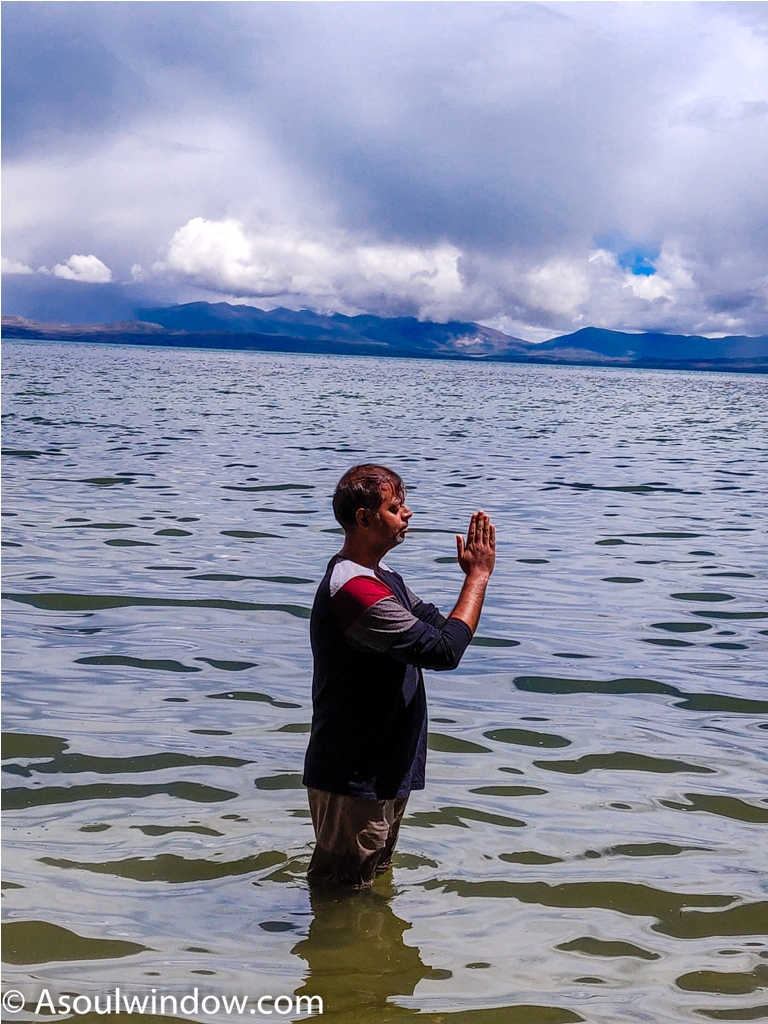
Mansarovar Lake: Complete guide to the holy Tibetan Lake
Last Updated on June 1, 2022 by asoulwindow
Table of Contents
Information about Mansarovar Lake
When I first saw Mansarovar lake, I was amused to see that the lake is still bereft of much human activity. Gradually, as I stayed here for longer, I saw many Hindus praying on the shores of Mansarovar Lake. Welcome to Mansarovar lake. An extraordinary place! Hindu devotees from India and other nations go on Kailash Manasarovar Yatra every year in spring, autumn, summer and monsoon months.
Needless to say, throughout the year, several pilgrims, tourists and visitors are attracted to the holy Lake Manasarovar and the nearby Mt. Kailash. It is after all, one of the most splendid high-altitude lakes in Tibet. Mansarovar Jheel is indeed the most spiritual, religious, challenging pilgrimage of entire Asia . It is also among the most-visited trips.
Since times immemorial the holy Manasarovar Lake has served as a cradle of spiritual and physical evolution of the human beings.
I am glad that I was chosen by Shiv Bhagwan to visit Mansarovaar Lake at such a young age. Only fortunate ones are chosen for this epic journey every year.
I have written this travelogue based upon my own travel experience to Manasarovar jheel. This is the most detailed travel guide on Mansarovar Lake. I have shared all the aspects of the holy Lake Manasarovar in this comprehensive travel guide. Do share this information packed blog with your friends and family. Such elaborate details on Mansarovar lake are absent in the travel guides and mainstream media.
Why is Mansarovar lake Famous?
What is special about Mansarovar Lake? What is the importance of Lake Manasarovar? Much like Mount Kailash, Mansarovar lake is also revered and considered holy by Hindus, Buddhists, Jains and people from Bön faith. Manas Sarovar is one of the top Tibet Tourist Attractions.
The gorgeous deep blue color of Mansarovar lake and the stunning beauty of the snow-capped mountain ranges around it also makes it very famous. Ashes of Mohandas Karamchand Gandhi were also sprinkled in the water of Manasarovar Lake.
What is special about Manasarovar Lake? The region around Mount Kailash and Mansarovar Lake is also said to be the “Center of the World” since ancient times. The unexceptional beauty of Mansarovar lake is also the reason why it is so famous!
Most of the devotees who visit Kailash Mansarovar arrive from India and Tibet, followed by Nepal and other neighboring nations. This is why, several travel agencies organize annual pilgrimage group tours known as Kailash Mansarovar Yatra.
Kailash Mansarovar is the place where Shiva Bhagwan resides and meditates. Mansarovar exists at only one place and this is why Hindus take great pains to embark upon this famous pilgrimage at least once in their lifetime.
Landscape of Mansarovar Lake
Needless to say, Manasarovar Jhil is picturesque! Close your eyes and imagine this! Bountiful nature, snow-capped mountains, pristine lakes, crystal clear water, huge open spaces, unending greenery, migratory birds etc define the landscape of Mansarovar Lake.
The scenic beauty of Mansarovar is hard to define in words. During all my days at Mansarovar Lake, it was difficult for me to take my eyes off the pristine lake.
My Experience of Mansarovar Lake
I was spellbound when I had my first glimpse of one of the most transparent fresh water lakes in Tibet. Clear blue water with a breathtaking backdrop of the Himalayan Range mesmerized me.
Located in the middle of nowhere, the vast lake stood out with its grandeur. It was easily one of the biggest high -altitude I had ever seen apart from Pangong Tso and Tso Moriri in the Ladakh region of North India .
While my co travelers got busy in meditation and photography, I kept myself curious and took every opportunity to visit the places around Mansarovar Lake alone on foot. I find a certain pleasure in finding some time off to travel solo even when I am with a group. Solo travels make all the difference.
Tourism in Mansarovar Lake
Here is all you wanted to know about Lake Mansarovar tourism. Such is the grandeur of Mansarovar Lake, that even atheist tourists from China are not able to resist its charms. I saw many Chinese tourists around Lake Manasarovar. I saw exactly two Western tourists exploring the picturesque Mansarovar Jhil and Chiu Gompa solo.
This part of Tibet doesn’t attract many western tourists because most of them can-not afford to travel to this side of Tibet. However, some people from West do travel here once in a while! There are so many hidden gems and unusual places to see around Lake Mansarovar. There are also several unique things to do with family and kids in Mansarovar.
Story of Mansarovar Lake
There are many stories, historical facts, myths and legends associated with Mansarovar Lake. Whether it is the followers of Hinduism, Bön Religion, Jainism or Buddhism, each religion has interesting stories and anecdotes about Mansarovar Lake. Even different regions of Tibet say different stories about this holy lake.
Is Mansarovar part of Tethys Sea?
Where is Tethys Sea now? What happened to the Tethys Sea? Did you know that Manasarovar Jheel is a remnant of the ancient Tethys Sea which existed 10 crore years ago? This is a lesser-known fact about Manasarovar Lake. In earlier times, Lake Manasarovar used to be vaster. In present day Kaliyug, the size of Mansarovar Lake has been reduced to its current form. Hinduism and other religions have also supported this theory.
Tethys Sea, which is also said to be the source of all creations, is also linked to this story of Mansarovar Jhil. Being the crucible of human and other evolution of other animal and life forms, Tethys Sea has always been an important water body discussed widely over the years.
Tethys sea is usually held as the place of human civilization. It is said that all life forms came out of the Tethys Sea. Thanks to the movement of the continental plates, Tethys Sea got pushed up. It must be noted that the Tethys Sea itself doesn’t exist now. However, it is still possible to visit the remnants of the lost Tethys Sea. The three small remnants of the ancient Tethys Sea which still exist include the following:
The Black Sea could also be a remnant of the much older Paleo-Tethys Ocean . The Tethys Ocean used to exist between the ancient continents of Gondwana and Laurasia during much of the Mesozoic era .
Mansarovar glacier
Lake Mansarovar is fed by the waters from the glaciers of Kailash Parbat. This also makes the water of Mansarovar Lake so holy. This is also why people queue up to take a holy dip in the water of Mansarovar Lake. It is one of the major attractions of Mansarovar region.
Apart from the melting water from glaciers, the natural rain water is another source of water of Mansarovar Lake.
Nomenclature/Etymology of Mansarovar Jheel
Together Manas Sarovar jheel and Mt. Kailash are called as “Sacred Mountain and Holy Lake”. Below are various names of Mansarovar Lake in various languages.
Hindi and Sanskrit names
Mansarovar is made from Sanskrit root words Manas and Sarovar . In Sanskrit, therefore, Mansarovar Lake is also referred to as Manas Sarovar. The literal meaning of ‘Man’ or ‘Manas’ is mind and intellect while the meaning of ‘Sarovar’ is lake.
In ancient Vedas , it has been mentioned that Vishnu Bhagwan and Maa Lakshmi live in this place which is also known as Sheesh Sagar .
Mansarovar Lake is also known as the lake of consciousness.
Bon religion existed in Tibet way before Buddhism spread in Tibet. In ancient times, Mansarovar Lake was known as Matri Tso or Matri or Machui Co . This is the name of a Dragon King of the ancient Bon Religion of Tibet.
As per the followers of the unique Bön Religion , “Zhang Zhung” is a holy place in Tibet.
Tibetan Buddhist name
The Tibetan names of Mansarovar lake are Mansarovar and Mapham Yumtso , both of which mean invincible lake or Victorious Lake. Devout Buddhists also relate Manasarovar Jheel with Anotatta Lake, the place where Queen Maya, mother of Gautama Buddha bathed.
The Tibetan also call Mansarovar lake as mTsho Mapham , Tsho Mapham , mTsho Ma-dros-pa and མ་ཕམ་གཡུ་མཚོ། .
English Names
Sometimes Mansarovaar Lake is also known as the Mind Lake or Lake Mansarovar or Lake Manasarovar.
Chinese name
As per the book “Regions In Great Tang”, written by monk Xuanzang , Manasarovar Lake was referred to as the holy Yaochi Lake of Nirvana. Chinese call Mansarovar Lake as 瑪旁雍錯 or Mapang Yongcuo.
Soul Window Facts
Hiuen Tsang or Chen Hui has visited and documented on various Buddhist places in India such as Assam in North East India , Uttar Pradesh , Bihar, Gujarat, Uttarakhand etc.
Do read my detailed blogs on Vaishali, Nalanda, Shravasti, Sarnath , Kushinagar, Kapilvastu, Lumbini etc. My blog A Soul Window has been awarded as the most successful travel blogger in India .
Is Mansarovar Lake in India?
In which country is Lake Mansarovar? Does Mansarovar belong to India? Mansarovar lake is which country? Why is Mansarovar in China? These are some of the most frequently asked questions.
Well, not many realize that Lake Manasarovar is located in Tibet region of China. Indians need Visa and passport in order to visit Kailash Manasarovar. Why is Mansarovar in China? Since Tibet is under control of China, therefore Manasarovar Lake exists in China.
Where is Mansarovar Lake located?
Where is Mansarovar Lake located? Where is mansarovar lake? Mansarovar lake lies in which range? Lake Manasarovar is located in the Burang county of West Tibet. Lake Manasarovar is a popular Ngari Tourist Attraction.
Situated in Ngari Province, Lake Mansarovar is a must visit place. Located in the western part of Tibet Autonomous Region in Ngari Prefecture, Mansarovar Jhil is also located near close to Taklakot or Burang/Purang and the tri junction border of India, Nepal and Tibet.
The location of Mansarovar Lake is scenic. Lake Mansarovar is situated between Kailash Parvat and the Gurla Mandhata, highest peak in this region.
Altitude of Mansarovar Lake
What is the height of Mansarovar? The altitude of Mansarovar Lake is 15060 feet or 4,590 meters. It is a high altitude and precautions must be taken to avoid AMS or Acute Mountain Sickness. Thanks to the height of Mansarovar Lake, it is advised to take rest on the first day here.
Area of Mansarovar Lake
The sprawling Manas Sarovar Lake is spread across an area of a whooping 412 square kilometers . The northern part of Mansarovar Lake is broader than the southern end of this pious lake. The total circumference of Mansarovar Lake is 80 kilometers. It is a little-known fact about Manasarovar jhil.
Shape of Mansarovar Jhil
Lake Mansarovar is shaped like a pear. Some also say that the shape of Mansarovar Lake is round. The round shape represents Sun and positivity and is often compared to the crescent shape of the adjacent Rakshas Taal which represents moon or darkness.
Depth of Mansarovar Lake
The deepest point of the Mansarovarlake is over 295 feet or 90 meters . Average depth of Mansarovar Lake is 46 meters or 150 feet.
Is water of Mansarovar Lake Transparent?
The water of picturesque Lake Mansarovar is so pure and crystal clear that one can see through dozens of meters into this sacred lake with naked eyes. Transparency of Lake Mansarovar is up to 14 meters.
This means that if a person stands by the shore of Mansarovar Jhil then he can easily see up to 14 meter deep in the lake. That is an amazing fact which not many people know about.
Soul Window Observations
The other places where I saw such clear transparent waters was at the world-famous Dawki River of Meghalaya in North East India . The water of Pangong Tso , Tso Moriri in Ladakh and Andaman were equally clear.
History of Mansarovar lake
Historical significance of Mansarovar lake is immense. Kailash Mansarovar history date back to thousands of years. I am sure no one told you about this Mansarovar story. History of Mansarovar has gone through several ups and downs.
There was a time when Buddhism was not present in Tibet. Bon religion flourished in Tibet in a pre-Buddhist era. In those times, Mansarovar was known as Matri Tso which meant ‘Dragon King of Bon Religion.’
As per the Buddhist sutra 4 dragon kings used to exist in the 4 sacred lakes of Tibet. They constantly created problems and made the life of local people difficult. It was during the rule of Tibetan king Chisong Dezan, Padmasambhava demonstrated his world-famous magical powers and gained victory over the 4 unruly dragon kings.
After subduing the dragon Kings, Padmasambhava converted them to Buddhism. Eventually the same 4 dragon kings served as the 4 dharma protectors of Tibetan Buddhism. This is an interesting story about Mansarovar lake which very few people know about.
In the local Tibetan language, Lake Manasarovar stands for the “invincible lake” or Invincible Jasper Lake.Bön religion flourished in Tibet before the arrival of Buddhism. During the 11th century C.E., Buddhism had spread in Tibet and overshadowed the local Bon Religion. It was then that the local name Machui Co was changed into “Manasarovar”, the literal meaning of which is “Invincible Lake”. These are some amazing facts about Lake Manasarovar no one told you about!
What happened was that in the 11 th century C.E. a religious war broke out between the followers of Bon religion and Tibetan Buddhism Kagyu Sect. It was a decisive war which was won by the Tibetan Buddhism Kagyu Sect. As a result of the war, Matri Tso was renamed as Mansarovar Lake. This is a lesser-known fact about the history of Mansarovar Lake.
Tibetans refer to Lake Mansarovar as Mapham Yumtso , the literal meaning of which is Victorious Lake in Tibetan language. As we see, the history of Mansarovar Lake was influenced by various factors.
Who built Mansarovar Lake?
Who constructed Lake Mansarovar? This is a frequently asked question on Lake Manasarovar. As per the Hindu history, the concept of Mansarovar jhil was conceived in the mind of Hindu deity Brahma Bhagwan, the creator God, because his 12 sons required a place to take bath after spiritual practice in the holy mountain.
What followed next was the manifestation of Lake Mansarovar in this untouched region of Earth. The visible manifestation of Manas Sarovar can still be seen today.
In the initial stages Lord Brahma (as the west calls Him) had created Mansarovar Jheel for meditation. Brahma ji meditated at Mansarovar for a long time. It led to the beginning of the creation process. In fact, this is the place from where the entire world was created by Brahma ji.
When was Mansarovar Lake constructed?
Mansarovar lake was built by Brahma ji thousands of years ago. This is why this sacred lake is a must-visit. Every Hindu craves to visit Mansarovar at least once in his lifetime.
Top things to do in Manasarovar Lake
What is there to do in Manasarovar? There are several unique things to do with family and kids around Lake Manasarovar. Some of the top things to do here are as below:
- Sing bhajans
- Meditate by the lake
- Do yoga by the lake
- Sunbathe by the lake
- Study flora and fauna
- Sit by the lake quietly
- Do chanting by the lake
- Observe Kailash Parbat
- Birdwatching by the lake
- Take a holy dip in the lake
- Observe snow-capped Himalayan peaks
- Perform parikrama or kora around Mansarovar Jheel
Many of these are free thing to do in Manasarovar. For example, you can easily take a self-guided free walking tour around the Manasarovar Lake.
Full Moon at the Mansarovar lake: Attain Moksha
Hindus find it very auspicious to take a holy dip in Lake Mansarovar during a full moon night. No wonder that the tour agents face a huge surge in applications from pilgrims requesting to time their journey during full moons. There are many folklores and legends associated with full moon in Lake Manasarovar.
Spending full moon night near Kailash Parbat is considered auspicious as well by the Hindus. It is undoubtedly the best thing to do in Mansarovar Lake.
However, such beliefs are not exclusive to Kailash Mansarovar Yatra alone. Since times immemorial, Hindus have considered full moons auspicious. As per the ancient Hindu scriptures, full moons are considered pious because of the release of most positive energy during this period.
Even many Buddhists celebrate most of their festivals on full moon in Sri Lanka.
Spending nights at the Kailash Parvat in Deraphuk and at Lake Mansarovar during full moon, therefore, holds immense spiritual significance. Many Shiv devotees have claimed to experience vibrant cosmic energies pulsating through the air.
It is believed that even when there is no full moon, taking a mere dip in holy Mansarovar Lake absolves the devotees of all the sins he or she did in the last seven births. So, how is taking a dip during full moon different, did you ask?
Well, Hindus believe that a holy dip in Mansarovar Lake during the full moon night rids them of the sins committed by them not only in the present birth but also in the last hundred births. What’s more, devotees can also achieve salvation or moksha in the process.
Apart from the above stated spiritual significance, what also makes it totally worth it to spend a full moon night near Kailash Parvat and at Mansarovar Lake is the visual spectacle. The calm water of Lake Mansarovar, gently shimmering under the cast of the soft glow of full moon looks surreal. Not only is it a sight to behold, but also a celebration.
You will notice Hindus, clad in their traditional best, singing bhajans (religious songs) and invoking the spirituality in themselves. Many people also meditate by the Mansarovar Jheel to benefit from the positive energies.
Mansarovar Lake in Full Moon
Mansarovar jhil looks even more ethereal during the full moon. It is considered very auspicious by Hindus to spend a night around Mansarovar Lake during full moon. This is why there is high demand of rooms during full moon at Lake Manasarovar. Generally, the Manasarovar tours around full moon day are sold out very fast. Full moon is considered auspicious in Buddhist cultures as well.
The slots to stay near Kailash Parbat or Mansarovar lake during the full moon night is limited due to various factors such as lack of proper toilets, scarcity of proper rooms, difficulty in procuring supplies of vegetables and spices for mass production of vegetarian and vegan food etc. Rooms available at Lake Mansarovar are few in number and are on sharing basis.
No matter how much money you have, everyone is treated as same here. Lack of enough portable toilets often forces people to go to open fields to answer nature’s calls. Availability of below basic facilities at Lake Manasarovar results in very few people able to stay at Mansarovar Lake during the full moon night.
Needless to say, that it is on a first come and first serve basis. Contact your tour operator much in advance in order to book your slots on full moon night. Watch out for full moon nights in the months of May, June, July, August and September.
You anyways have just 4 months in one year when Kailash Mansarovar Yatra is open for pilgrimage. So, it’s a good idea to plan much in advance. The spaces fill fast due to low supply and high demand. Thanks to limited resources and facilities, there is a cap on number of people who can stay at most places during Kailash Mansarovar Yatra.
You sure do not want to face any last-minute disappointments! So, why not book much in advance and secure your spot. Full Moon happens just once every month, which means that you have only 4-5 such opportunities in an entire month. Do not miss out on this once in a lifetime opportunity by mere procrastinating.
Panch Sarovar
Manas Sarovar Lake is considered to be one of the 5 sacred lakes of Hinduism, collectively called as the Panch Sarovar according to Hindu theology. This is a little-known fact.
The Panch Sarovar also finds a mention in the holy Hindu scripture called Shrimad Bhagavat Puran. The 5 sacred lakes of Panch Sarovar are as below:
- Mansarovar Lake, Tibet
- Pushkar Sarovar in Rajasthan , India
- Pampa Sarovar in Hampi , Karnataka , India
- Bindu Sarovar in Siddhpur , Gujarat, I ndia
- Narayan Sarovar in Lakhpat in Kutch region of Gujarat , India
Mansarovar: Source of 4 rivers
While visiting Tibet, I realized that Kailash Manasarovar region is also a source of 4 great rivers which flow across Asian continent. These are also some of the best offneat places to visit in Manasarovar region. What are the rivers originating from Mansarovar Lake?
Apart from the above mentioned Panch Sarovar lakes, the source of 4 of the major Asian rivers is also found near the Mansarovar Lake. I, in fact did cross the Brahmaputra River. It was overflowing and we actually drove over a road on which the water from Brahmaputra had spilled over.
It was dark and I was amused at what I was doing. So, which river originates from Mansarovar lake? It is a frequently asked question. The names of those four rivers are as below:
- Brahmaputra – Also called as Yarlung Tsangpo river in Tibetan language, Luit Dilao in Assam and Siang/Dihang in Arunachal Pradesh , Brahmaputra River has its origin in Tibet. Not only is Brahmaputra River the 15 th longest river of the world but it is also the 9 th largest rivers of the world. The source of Brahmaputra River is located in the Lake Mansarovar region in close proximity with Kailash Parbat.
- Sutlej – Also called Langqên Zangbo in Tibetan, it is located on the west of Rakshas Taal in Tibet. The origin of tributary of Sutlej is located towards the west side of Manasarovar Lake. Did you know that Sutlej River is the easternmost large tributary of the Indus?
- Sindhu – Known as Sênggê Zangbo or Sênggê Kanbab or Senge Khabab in Tibetan language, it is located near Mount Kailash. There are many Tibetan chortens to mark the source of Sindhu or Indus River.
- Ghaghara – Also called as Kauriala in Nepalese , Ghagra, Gogra, Ghaghara, Kongque He in Chinese, Ghaghara originates in Tibet region as well. Ghaghara river also flows in Uttar Pradesh and Bihar in India. At 507 kilometers, it is Nepal’s longest and most important rivers. Did you know that Sarayu River in Ayodhya is actually lower Ghaghara? That makes Ghaghara River a very important river as it finds mention in the holiest of Hindu epic called Ramayan as well. We are all so inter-linked. Who would have thought? I had seen Ghaghra River when I traveled from Lucknow to Shravasti , Kapilvastu , Kushinagar and Lumbini in Nepal.
Mansarovar Jhil: Highest fresh water lake of the world
What is inside Mansarovar lake? It is no co incidence that the highest fresh water lake of the world is also the holiest of all. What makes Mansarovar Lake different from other high-altitude lakes of Tibet is the fact that unlike other lakes which are saline in nature, Lake Mansarovar has fresh water. Fed by Kailash glaciers, the water in Lake Mansarovar is of course very cold.
While devotees see it as a divine intervention, others relate it to science. But then, things have always been mysterious and beyond human comprehension in the abode of the first Yogi, Lord Shiva! I personally do not raise too many questions in the abode of Adi Yogi.
It is curious how a Mansarovar lake has remained a large freshwater lake on the Tibetan Plateau which mostly has several saline lakes. In spite being located in the relatively high elevation, the Mansarovar is a rare example of fresh water lake in Tibet. This is why Manasarovar Jheel is a must-visit place.
Sunset at Lake Mansarovar
The mostly blue and emerald green colored Manas Sarovar Lake changes its colors many times in the day, depending upon the Mansarovar weather and position of Sun. I was all alone at the Mansarovar Lake when I saw a breathtaking sun set unfolding in and around Mansarovar Jhil. I had just arrived solo from Chiu Gompa. It was drizzling slightly and then it stopped.
As soon as I arrived at Lake Mansarovar, my jaws dropped at the scenery. A young Indian lady excitedly walked towards me and we exchanged notes on how incredibly beautiful the lake, the mountains and the sky looked during the sun set.
In far distance, the Himalayan peaks were glowing under the evening sun. I think I was just lucky to embark upon this journey of a lifetime during my Mansarovar Lake tour. The surreal sunsets of Mansarovar are a must-see spectacle! It is not to be missed!
Is it allowed to take a bath in Mansarovar Lake?
The Chinese government does not allow taking bath or swimming directly in the Mansarovar Lake. Till few years ago bathing in Lake Mansarovar was allowed. However, bathing was banned in Mansarovar due to rising pollution in the lake.
For this, makeshift cubicles are set up on the banks of the Mansarovar Lake for those Hindu devotees who wish to take a ritual bath in Lake Manas Sarovar. As per Hindu practices , taking at least 3 dips at a holy lake or river or other water body is encouraged.
Women and men can take a bucket bath in these cubicles . The water is sourced from the Mansarovar jhil in buckets, of course. Check with your tour agent in advance about the facilities they are providing for the holy ceremonial baths. It is possible to take bath only in the season of spring, autumn, monsoon and summer because this is when the snow melts.
Also, some devotees only dip their hands and feet and splash the holy water on their head.
As per the religious customs of Hinduism faith, all the devotees must take bath in the holy water of Lake Manasarovar before they commence the epic parikrama around Kailash Parvat.
This is why devotees first visit Lake Mansarovar, followed by their stay in Darchen from where they start the parikrama in Yam Dwar of Tarboche. Needless to say, Mansarovar Lake tour is incomplete without a holy dip.
Soul Window Travel Tips
You must ensure that your body and forehead is covered with woolens after taking the dip in Mansarovar Lake. This tip will help you from not falling sick due to cold weather.
Positive Energy of Manas Sarovar Lake: My experience of holy dip
I almost didn’t take a holy dip in Mansarovar Jhil, until my co traveler Sumit ji, coaxed me in to it! He said that the trip to Kailash Mansarovar in incomplete without a dip in the holy Mansarovar Lake. I had avoided taking a dip as it was very cold and also because it was not my comfort zone. I rarely swim in rivers or lake, holy or otherwise. I can actually count on my fingers the number of times I have taken a dip in a lake or river. Sumit ji said that a mere dip in Mansarovar may also unblock all the hindrances I had been facing in life.
After much beating around the bush, I agreed for a holy dip in Mansarovar Lake. The cold was extreme on the day we decided to have a bath in the Mansarovar jheel. Mansarovar weather had also suddenly changed as we neared the spot where we would take bath.
After I took the holy dip in the lake, I felt an unprecedented sensation in my body. It is not an overstatement to call it an out of body experience ! So strong were the vibrations of Lake Manasarovar, that it is hard to define it in words.
Soul Window Thoughts
I felt this strange phenomenon for at least 10-15 minutes. After this my mind cleared and I fell silent. Had Sumit ji not pushed me in to taking the holy dip, I would have missed this once in a lifetime opportunity. I sincerely thank Bholenath that he chose me through Sumit ji as a medium for this beautiful experience. Only chosen few are called by Him every year! To be able to embark upon Kailash Mansarovar Yatra, so early in my life, is nothing less than a blessing!
Bath In Mansarovar Lake during Brahma Muhurat
There are many secrets and mysteries associated with Mansarovar Lake. During the auspicious Brahma Muhurat , the Gods themselves descend on Mansarovar Lake to have a bath here. This is why Mansarovar is one of the holiest places for Hindus. This Mansarovar Lake mystery is yet not solved.
Mysterious Lights at Manasarovar
Many devotees have claimed to see mysterious lights hovering over Mansarovar Lake and descending down eventually to take a bath during the Brahma Muhurt between 2:30 a.m. and 3:45 a.m.
It is one of the biggest of Mansarovar miracles. I have revealed secrets of Mansarovar Lake in detail on another blog. Do read my blog on mysteries of Manasarovar Lake . It will answer all your queries. Those who love going off the beaten track will enjoy their time at Lake Manasarovar.
Can I drink water of Mansarovar Lake?
As per a written text by the Hindu poet Kalidasa ji (active late 4th-early 5th century),
“the waters of Lake Manasarovar are like pearls and that to drink them erases the sins of a hundred lifetimes.”
Hindus queue up to take holy dip in the sacred Manas Sarovar Lake. Some people drink water from the Mansarovar lake as well. They believe that by drinking water from the lake, they will get rid of all the sins they committed in the past seven births and secure themselves a place in the abode of Shiv Bhagwan after they breathe their last.
Can I bring home water of Mansarovar Lake?
How to bring home water of Mansarovar Lake? Yes, we can all bring back water from the Mansarovar Lake, especially if Tibet is visited as a road trip from India or Nepal. Road routes have less restrictions when it comes to transport liquid internationally. I had carried 500 ml of holy water of Mansarovar Jhil after the yatra .
Care must be taken that no living organism must remain in the bottle after collecting the water of Lake Mansarovar. Much like the holy water of Ganga River , the water of Mansarovar Jhil also never rots or decays. The divine water of both Ganga River and Mansarovar Jheel is kept by Hindus at their homes and use at special occasions such as purifying home, pooja or even funeral ceremonies.
Benefits of taking holy dip in Mansarovar Lake
What are the advantages of taking a holy dip in Mansarovar Lake? Not only does taking a holy dip in Manas Sarovar Lake gets one rid of all the sins committed in past but is also acts as a remedy for and mental and physical discomfort of the devotee. The souls of devotees who drink water from this holy lake are also purified in the process.
This is why thousands of devotees spend lakhs of Rupees and travel thousands of kilometers in order to get peace of mind and purify their bad karmas . Taking a bath in Lake Mansarovar also cures devotees of their ailments and diseases.
It is also said that if a devotee is able to pick a feather of a gull or bird or catch a fish or pick a stone from Manas Sarovar Jheel, then he or she will accumulate great wealth in coming future. This is seen as a reward of the Dragon King .
Is the water of Mansarovar lake cold?
I remember while taking a holy dip in the water of Mansarovar Lake, I felt very cold at the first contact with the water. Even during the warmest season, the water of Lake Mansarovar is very cold.
Predictably, the water of Mansarovar Lake during the day as well as night is very cold. If you are not able to brave the cold water, you can request the Nepali Sherpa to warm the water for you. Though I recommend taking bath with only natural water of Lake Mansarovar.
Sometime various reasons such as old age, poor health etc play a role in one’s inability in bathing in icy cold water. If that is the case with you, please do not feel shy to request warm water from the lake.
All said and done, the cold water of Lake Manasarovar and the windy climate of area surrounding it is not a deterrent to a true devotee who wants to take a holy dip in the sacred water of this lake.
Why Buddhists also take holy dip in Mansarovar Lake?
The local Tibetan Buddhists believe that bathing with the holy water of Manasarovar Lake keeps one away from troubled thoughts, avaricious desires and the sins committed in past. The Tibetan Buddhists also hold the belief that drinking the water of Lake Mansarovar keeps one healthy and away from any disease.
Pooja at Mansarovar lake
I saw large groups of families and individuals performing pooja , rituals and rites on the bank of Manas Sarovar Lake. It was a satisfying feeling to see women clad in crisp saris and men in starched kurtas singing ‘Om Jai Jagdish Hare’ in a place as remote as Mansarovar jhil .
Meditation at Mansarovar lake
It is no wonder that Mansarovar lake is also called as the lake of consciousness . This is why, I saw many people from all faiths viz. Hinduism, Bon religion and Buddhism meditating with complete devotion on the banks of Mansarovar Lake.
I saw many individuals meditating on the banks of Mansarovar Lake with complete concentration. I also saw some groups running their spiritual discourses right at the banks of Lake Manasarovar. Group meditation was also happening during my 2-3 days stay at Lake Mansarovar. Mansarovar Jheel is an ideal place to slip in to a deeper samadhi .
It is also a good idea to sit by the Mansarovar Lake after the bath and meditate. This is the best possible way to meditate ever.
Perform Yoga at Mansarovar Lake
Doing Yoga which do not require much of physical activity (because high-altitude) is a good idea. The banks of the serene Mansarovar Lake are ideal spot to do Yoga. Devotees can try doing Kapalbhati, Pranayam and Shavasan on the banks of the lake. There are immense health benefits of doing such ancient Hindu Yogic practices. These breathing techniques have been taught since thousands of years by Hindu sages and holy men.
Chant Hindu Mantras at Mansarovar Lake
Many devotees also sit by the banks of the lake and chant Hindu Mantras at Mansarovar Lake. Chanting in the praise of the supreme lord brings peace to the mind of the devotee. Chanting specific mantras have positive effects on the mind. Being the abode of Lord Shiva (as the west calls Him), the most popular chants are:
- Om Namah Shivay or ॐ नमः शिवाय
- Har Har Mahadev
- Shiva Shambhu
Devotees feel immensely positive and connected to the supreme God while sitting on the shores of the holy lake and chanting.
Religion and Lake Mansarovar
Let us now find out why Mansarovar lake is considered so auspicious by the followers of 4 faiths viz, Hinduism, Jainism, Buddhism and Bön. It is interesting to note that world religions like Buddhism, Jainism, Sikhism etc were born out of Hinduism or Sanatan Dharm. Hinduism after all is the oldest religion of the world. Several scriptures of different religions have described the spiritual significance and beauty of Manas Sarovar Jhil in great details.
Hinduism & Manasarovar Lake
Why is Mansarovar Lake holy to Hindus? As per Hindu history, Mansarovar Lake is the creation of the mind of Brahma Bhagwan . Why Hindus also revere Lake Mansarovar is because this is also the lake where Shiv Bhagwan and his wife Maa Parvati had taken bath.
Most of the visitors to Kailash Mansarovar Yatra are Hindus from India. Thanks to the immense historical as well as the spiritual relevance of Mansa Sarovar Lake in Sanatan Dharm or Hinduism, it is the wish for every Hindu to embark upon Kailash Mansarovar Yatra at least one in his lifetime.
Since this entire blog is written through the prism of Hinduism, therefore I am not elaborating more on this here as much has already been said in different sections of this blog.
Jainism & Manasarovar Jheel
Why is Mansarovar Lake sacred to Jains? Mansarovar Lake is also considered holy by the followers of Jainism, which is also an Indic religion which was born out of Hinduism. As per the Jain history, Lake Manasarovar is associated with the first Tirthankara , who had attained nirvana in the Himalayas .
Jains firmly believe that Lord Rishabh Deva , who was the first Tirthankara achieved spiritual liberation at Mansarovar Jheel.
Buddhism & Lake Manasarovar
Why is Mansarovar Lake pious to Buddhists? Did you know that Lord Gautam Buddha was conceived at Mansarovar Lake?
As per the Buddhist history and Tibetan legends, Queen Maya , the mother of Gautama Buddha hadtaken abath in Lake Mansarovar and this purified her body. It is said that a white elephant ran towards her from Mount Kailash and this is when Buddha Bhawan entered her womb.
Later, she gave birth to Buddha Bhagwan in Lumbini of present-day Nepal . Queen Maya was transported here by Gods. This is why Buddhist devotees perform kora ( parikrama ) around Mansarovar lake on foot.
It is also customary to pay a visit to all the Buddhist monasteries which fall on their path. Interestingly, unlike the Hindus, the Buddhist pilgrims do not take a holy dip or swim in Mansarovar Lake. Tibetan Buddhists only perform kora without going into the water of the lake. Buddhists believe that the water of Mansarovar Lake can get them rid of all the sins, delusions and worries of the mind.
The Buddhists also call Kailash Parvat as Meru Parvat. According to Buddhists, Gautama Buddha has also stayed at Mansarovar Jheel and meditated for hours.
Sikh religion & Manasarovar Jhil
Why is Mansarovar Lake revered by the followers of Sikhism? As per the Sikh community, it was at Mansarovar lake where Guru Nanak Dev , the founder of Sikhism and the first of the 10 Sikh Gurus learned to meditate. This is why Lake Manasarovar is considered very holy by the Sikh community.
Bön Religion & Mansarovar Lake
Why is Mansarovar Lake sacrosanct to the followers of Bon Religion? Much before Buddhism arrived in Tibet, Bon religion was dominant here. With time, Buddhism overshadowed Bon and now there are hardly any Bon people left in the world.
At present, most of the followers of Bon religion can be found in East Tibet . That said, you can still visit some Bon temples in West Tibet as well.
The followers of Bon Religion consider Lake Mansarovar pious because Tonapa Shernab or Tonpa Sherab ,the founderofBon religion, had taken a holy bath in Mansarovar lake when he visited Tibet for the first time.
Mansarovar Parikrama
Devotees, whether Hindu or Buddhist or Bon or Jain gain immense merit if they perform parikrama or kora or circumambulation around the holy Manas Sarovar Jhil. This is why, thousands of pilgrims visit perform kora around the Mansarovar Jheel and take a holy dip in the pious lake.
Needless to say, for many it is the ultimate blessing in life. Do read my separate blog on the epic parikrama around Mansarovar Lake . Mansarovar Lake trek is a must-do if you have time, money and energy! Mansarovar Lake yatra is a once in a lifetime experience!
Can we see Mount Kailash from Mansarovar?
Can we see Kailash Parvat from Mansarovar? The answer is yes, we can see Kailash Parbat from Mansarovar Lake. In the north direction of Manas Sarovar, I had my first glimpse of Kailash Parvat.
Though small, I was clearly able to view the South face of Kailash from Mansarovar Lake. If you are lucky, then on a clear day, during the sunrise, it is possible to view the golden peak of Mt. Kailash. It is a spectacular sight! This darshan of Kailash Parvat from Mansarovar is indeed one of the major highlights of the yatra .
Mountain ranges around Mansarovar
While the majestic Himalayas are located towards the south of Mansarovar jhil, the steep Kailash Range of mountains is located towards the north of the lake. India and Nepal lie on the other side of the Himalayan Range of mountains . Manas Sarovar Jhil is located towards the southern foot of Kailash Parbat.
The mirror like reflection of snow enveloped mountain ranges and clouds on the calm surface of the Mansarovar Lake looks surreal. The highest peak in the surrounding area of Mansarovar Lake is Gurla Mandhata which measures approximately 25,242 foot or 7694 meters.
Gurla Mandata, which is also called as Nemo Nani or Naimona’nyi is the highest peak of the Nalakankar Himal. Sitting pretty across the Manasarovar Lake , Gurla Mandata is also world-famous because it is the 34th highest peak in the entire world (using a 500-metre prominence cutoff).
Did you know that Kailash Parvat is seen as the center of the planet Earth? 6 other mountain ranges surround Kailash Parbat from all sides. The area around Mount Kailash is therefore the focal point of the entire universe.
Rakshas Tal
Rakshas Tal, also known as Ghost Lake or Demon Lake is located just a few kilometers away from Mansarovar lake. I reached Rakshas Tal from Mansarovar on a car. As I headed towards Darchen to start the parikrama around Kailash Parbat, I had stopped for a few minutes at the jinxed Rakshas Tal.
The two lakes are as different as chalk and cheese. While Manasarovar Lake is a freshwater lake, Rakshas Tal has high salt content. This is also why Manasarovar Lake has a vibrant biodiversity such as fish and birds, I saw no sign of life in and around the waters of Rakshas Tal.
In Hinduism, this is the reason why Lake Mansarovar represents the Sun while Rakshas Tal represents the moon. For Hindus devotees, Ravan, the demon king of Lanka resides in Rakshas Tal lake.
Rakshastal is still a major tourist attraction near Lake Manasarovar. Read more about this on my detailed blog on Rakshas Taal and the difference between Mansarovar Lake and Rakshas Tal .
Ganga Chu River
Not many devotees know that Ganga Chu River or Ganga Chu Channel connects Mansarovar Lake with Rakshas Tal. If you move further towards the west direction, you will notice that Ganga Chu also flows in the famous Sutlej River . This is a major point of attraction in Manasarovar Jhil.
As per the local Tibetan people, it is an auspicious sign that the water of Mansarovar Lake trickles to Rakshas Tal. The locals also believe that if the lakes dry eventually and the circulation of water between the two lakes is interrupted, then it will bring great disasters to the world.
Birds and Wildlife around Mansarovar Lake
Every year during the summer season, flocks of swans congregate around Mansarovar lake, bringing liveliness to this remote lake. Thanks to the huge quantity of fish in Lake Manasarovar, several indigenous and migratory avian species stay at the lake to hunt the fish.
There is a great spiritual significance of why Mansarovar Lake is also the summer abode of swans! We all have grown up hearing that swans are considered very wise and sacred water birds. Swan is after all the vahan or savari of Maa Saraswati who is worshipped by Hindus as the goddess of Knowledge.
Some of the birds easily seen at Lake Mansarovar include various species of ducks, gulls, swans and ravens etc. Expect to spot migrating birds from as far Europe , Asia and Siberia at Mansarovar Lake. These exotic bird species stop at Mansarovar lake while they are on their way to India and further South.
I realized that Lake Mansarovar is an ornithologist’s paradise when I spotted several species of birds here. While leisurely walking around Mansarovar Lake, I was overjoyed to spot the Ruddy shelduck ( Tadorna ferruginea ), which is also known as the Brahminy duck in India. I had seen many Ruddy shelduck in Pangong Tso in Tibet.
On the other hand, Rakshas Taal or “Ghost Lake” La’ang which is located only 3 kilometers away from Manasarovar Lake, is a salt water lake where no fish, animal, bird or weeds are found.
Are there fishes in Manasarovar Lake?
There is no dearth of fish in Mansarovar Lake. Since the water of Manas Sarovar are transparent up to 14 meters, devotees can easily see fish swimming even deep inside the pious lake.
As per the Tibetan legends, fish of Mansarovar Lake is capable of curing ailments such as dropsy, sterility and dystocia apart from other illnesses. While having a holy dip in the lake, I did observe several tiny orange colored aquatic organisms in the lake. I could not identify the organism though!
Fauna of Mansarovar Lake
There are many useful herbs and shrubs that are found near Mount Kailash and Mansarovar Lake. The plants and flowers, which grow abundantly in wild have immense medicinal benefits. The beautiful Nagmani flower deserves a special mention. Watch out for this unusual flower which is shaped like a snake stone.
Bicchu Ghas is also found abundantly on the shores of Mansarovar Lake. Bicchu Ghas is also called as ‘stinging nettle plant’ . Curing joint pain is one of the many medicinal benefits of Bicchu Ghas. It also works as acupuncture . Lotus and lilies add to the beauty of the lake.
Are there micronutrients in Mansarovar lake?
Certain researches and chemical analysis of the water of Mansarovar Lake has led to the conclusion that the lake water consists of several different types of micronutrients and minerals. Some of the micronutrients found in Mansarovar Lake are B, Li, F etc.
Is fishing allowed in Mansarovar Lake?
No, fishing is strictly prohibited anywhere in the pious Mansarovar Lake. Fishing is banned in Mansarovar Lake, keeping in mind the sentiments of Hindus and Buddhists and also considering the environmental and ecological concerns. This is why fishing is not allowed to do anywhere in Lake Manasarovar.
That said, you will still see local Tibetans selling dried fish. However, it must be noted that the local people of Tibet refrain from eating the fish of Mansarovar Lake. The Tibetans firmly hold the belief that if they eat the fish of this holy lake, it will disturb the Naga spirits. This is why the Tibetans use the fish of Lake Manasarovar only as a medicine.
Does Mansarovar Lake change colours?
Yes, I was able to see different colored water of the pious Mansarovar Lake from different angles and at different times of the day. The lake water doesn’t exactly change colors but it reflects a different colour under different climatic conditions and different seasons.
I had observed a variety of color, especially during sun shine. I had seen colors such as bluish green, green, deep emerald green (towards the center), clear blue etc on the water of Lake Mansarovar. I also observed that the same lake looked different in color from same place. For example, if the lake looks emerald green towards the center, it will look blue and green at different spots from same vantage point, i.e., the shore of the lake. Needless to say, Mansarovar looks even more magical under the moonlight, especially on a full moon day!
Can I see a Rainbow in Mansarovar Lake?
It is a very commonly asked question about Mansarovar Lake. If it is a lucky day, then it is possible to see a gorgeous rainbow over Mansarovar Lake. I had actually seen a breathtaking double rainbow in the nearby Deraphuk.
So, you can also expect to see even a double rainbow at Lake Mansarovar. Seeing rainbows is pretty common in this region. It just adds more vibrancy, beauty and positivity to Lake Manasarovar.
Places near Mansarovar Lake
Chuguo Temple is the largest temple located near Mansarovar Jheel. It is also a great vantage point to take pictures of Mansarovar Lake. Visiting these monasteries is the unusual things to do in Manasarovar. Below are other sightseeing tourist attractions near Mansarovar Lake.
- Qugu Monastery
- King Tiger Hot Springs
- Trithapuri Monastery
- Gossul Monastery
- Tsaparang (Guge Kingdom)
- Chuguo Temple
- Zanda Clay Forest
Buddhist Monasteries around Mansarovar lake
Since Manasarovar Lake is considered a sacred lake by Buddhists, as many as 8 old gompas or cmonasteries surround the pious lake, in all cardinal directions.
However, many of the old monasteries have been destroyed except two which was now well-restored. These are some lesser-known places near Lake Manasarovar.
Chiu monastery which is situated towards the North-Western shore of Mansarovar Lake is the most famous because it is visible from the lodges near lake.
Chiu sits on top of the hill, overlooking Manasarovar and is one of the best photography spots. From the terrace of Chiu, you can see Mount Kailash in the distance.
If we walk clockwise from Chiu monastery towards the North-West direction, we will come across monasteries such as
- Cherkip Monastery
- Langbona (North)
- Seralung (East)
- Nyego monastery
- Trugo (South)
- Gotsuk , also spelled as Gossul (South-West).
Of the above-mentioned Buddhist monasteries, sadly Cherkip Gompa, Yerngo Gompa and Nyego Gompa now lie in ruins. All of these ancient Gompas are lesser-visited places.
Also known as the sparrow monastery, this very ancient monastery can be seen from the Mansarovar Lake. In fact, it is located at a walking distance from the Lake Mansarovar . Built within a craggy cliff, the ancient shrine built inside a cave here can be traced back to 8 th century C.E. It is an offbeat place to see near Lake Manasarovar. Located away from the crowds, this unexplored gompa deserves your attention.
The local Buddhists believe that a sparrow had guided the revered Guru Rinpoche to this place. And this is why it was named as Chiu Gonpa. The literal meaning of Chiu is sparrow.
Places to see in Chiu Gompa
- There is a meditation cave in the main shrine.
- Stone footprints of Guru Rinpoche
- Winding stone staircases
- Stupas and Buddhist prayer flags. This is also the vantage point for getting amazing shots of Mansarovar lake. It is located just next to Chiu Gompa and can be reached by foot or car.
- Also watch out for small structures around the hill
- Visit the second shrine or chapel too. You can arrive here via a brief kora or parikrama . These are unusual places to see in Manasarovar.
Sacred for Tibetans
Chiu Gompa is a sacred place for local Tibetan people and Buddhists. There is also a library inside Chiu Gompa which houses ancient Buddhist scriptures in multiple shelves. Many pilgrims including tourists and pilgrims also like to circumnavigate around the Chiu Gompa. Local Tibetans can often be seen with their colorful motorcycles.
They carry along tents, clothes, basic supplies, food and drinks etc. On a lucky day, you will see many Tibetans paying a visit to Chiu Gompa Monastery. When I visited, I saw only 2-3 western tourists and more than 20 Chinese tourists. They looked rich with their fancy clothes, tripods and jeeps.
How To Reach Chiu Gompa
You can reach Chiu Gompa by just walking from Mansarovar Lake. It is an easy uphill climb. Tarred road is present here which means you can also arrive at Chiu Gompa by car, like many Chinese and Western tourists did.
Views from Chiu Gompa
The views from Chiu Gompa are not to be missed. I know many people who visited Lake Mansarovar and not Chiu Gompa.
- On clear days, you will also have a really nice glimpse of Mt Kailash towards the north direction. It was cloudy when I visited.
- You can also see the views on the other side. When I visited many buildings were under construction on what I thought was a small village. The more you move, the more you see.
Wear good shoes around Lake Mansarovar as the path is often uneven. It will also help in case you want to circumnavigate around the Chiu Gompa.
Excursions from Manas Sarovar Lake
Mansarovar lake is 1 of the 3 holy Lakes of Tibet. The other two lakes considered holy by the Tibetans are Yamdrok Lake and the Namtso Lake . The ruins of the ancient Guge Kingdom, Tsaparang gompa, Tholing monastery and clay caves in the mountains are a must visit places in West Tibet.
There are many more picnic spots near Manasarovar Jheel. You can book a local guide who can show you all the nearby sightseeing attractions.
Festival of Mansarovar Lake
Mahashivratri is the biggest festival at Mansarovar Lake. Celebrated by Hindus in honor of Shiv Bhagwan , it is also one of the biggest festivals of India .
Saga Dawa is an annual festival celebrated by local Tibetans. Saga Dawa is the biggest festivals of Tibetans.
Vegan and Vegetarian Food in Mansarovar Lake
The food options are limited near Lake Mansarovar because it is located in an undeveloped and remote area of Tibet.
Nutritious and healthy Indian vegan and vegetarian food is served in common canteen near Mansarovar Lake. Production and consumption of meat and eggs is strictly prohibited near Mansarovar Lake.
You can also try the local food of Tibet. Due to the remote location, do not expect much variety of Tibetan food but you can still get your hands on some of the local food. Simple Tibetan meals such as Tsampa with butter tea can be found for breakfast. I remember sampling Tsampa during Naropa festival in Ladakh . You can find these in the small makeshift tea houses.
You can also find vegan fried rice with vegetables during lunch and dinner. Vegans and Vegetarians must watch out for yak meat as it is a common ingredient in many Tibetan dishes.
There are very few shops around Mansarovar lake where it is possible to buy instant noodles, chips, wafers, fruits, biscuits etc. However, I had brought some dry Indian snacks, namkeens, farsaan, khakhra, mathri and energy bars all the way from India. You can also bring in comfort food from India such as heat and eat packaged Rajma Chawal, Kadhi Chawal. Paneer-Rice etc. There are hardly any stores near the lake.
Not only did bringing comfort food from India save me cost but also saved me the time wasted in finding these quick snacks on location. I would rather focus on the destination than waste time looking for food to eat.
Being a strict vegetarian (by choice) despite being a Rajput, I was wary of trying even the vegetarian local food in Tibet. I had turned vegetarian at an age of 14 on ethical grounds. So I find it nauseating to eat even dal-rice at a meat heavy restaurant.
Is it safe to visit Mansarovar Lake?
Yes, Mansarovar Lake is very safe to visit. I also visited the nearby Chiu Gompa solo and didn’t feel unsafe. However, in order to be on the safer side, get a company if you venture far on foot.
Souvenirs Shopping Guide to Mansarovar Lake
There were no souvenir shops around Mansarovar Lake when I visited. The nearest souvenir shops are located in Taklakot or Darchen. So, make sure you collect some memorable souvenirs from either Darchen or Taklakot which are a short driving distance away.
What currency is used in Mansarovar lake ?
Renmbi , also known as Chinese Yuan is widely used in all the places of Tibet. Be warned that US Dollar and Indian currency are not accepted in most of Tibet.
ATM in Mansarovar Lake
There are no ATMs around Mansarovar Lake. Places like Darchen and Taklakot also have very thin options. It is better to carry lot of cash even before the yatra (journey) starts.
Photography Tips for Mansarovar Lake
Do not forget to carry your camera at the nearby Chiu Gompa. The Chiu Gompa, after all, offers breathtaking views of Mansarovar lake. In fact, I got my best shots of Lake Mansarovar from Chiu Gompa. It was as good as drone shots since Chiu Gonpa is located on a craggy hill.
If you are a photography enthusiast like me, then the best time to visit Mansarovar Lake is either in May or late September – October. This is when you can click breathtaking shots of the lake. I visited Mansarovar Lake during the third week of August and came back with stunning shots.
This is why for photographers, the best time to visit Kailash Mansarovar is before or after the monsoon. This is the time when the climate is pleasant and the weather is mostly clear around Lake Manasarovar.
The beautiful Jiwu Gompa also offers an excellent vantage point from where you can take panoramic shots of Kailash Parbat as well as Manasarovar Lake, especially when you shoot on a bright, sunny day.
Hire local tourist guide in Lake Mansarovar
Generally, the tour operator includes an Indian guide in group tours. Hiring a guide makes all the difference as he can explain the unknown facts about Mansarovar Lake on the spot. Also, guides can also help tackle communication barriers, last minute requests and even any medical emergency.
Languages spoken in Manas Sarovar Lake
Chinese language Mandarin and Tibetan are the most commonly spoken and understood language. Most of the signboards are in Chinese and Tibetan here. The English signboards are not entirely dependable as they have major grammar mistakes and is incoherent.
Books recommendation on Mansarovar Lake
It is always a good idea to read a book on Kailash Mansarovar Yatra both before and after the trip to Mansarovar Lake. If possible, reading about the place while the trip is still on is also a good idea. However, I avoid that because when I travel, I just travel. Reading a book on Kailash Mansarovar Yatra will not only help you deeply bond with the place, but also enhance your knowledge.
Toilet facility around Lake Mansarovar
The toilet facility at most places in Tibet are below basic. The common shared toilets outside the lodge were stinky and unusable. It was horrifying but there was no option. Expect harsh conditions and no bath for 2 to 4 days.
There are three toilet facilities at Mansarovar Lake.
- Portable toilets
- Doorless toilets – These makeshift toilets do not have running water.
- Open Fields
Entry fee at Lake Mansarovar
There is an entry fee of CNY 150. This entrance fee to Mansarovar Lake is always covered in the Kailash Mansarovar Yatra tour package cost. Once you arrive at Mansarovar, there are umpteen free thing to do here.
Backpacking Budget Travel Tips for Mansarovar Jhil
Visit to Mansarovar Lake is by no means pocket friendly or inexpensive. The cost of visiting Lake Mansarovar from India is very high due to various factors such as remoteness of the place, international travel formalities, mandatory tour guide, unavailability of independent tours etc.
Solo Trip Tips for Mansarovar Jheel
You can travel to Manas Sarovar Lake as a solo traveler. However, you will most likely be clubbed with a big group pf devotee from India in a jeep or bus. This is so because it is very expensive to travel in Tibet as a tourist as a solo traveler.
Luxury travel Tips for Mansarovar Jhil
Even the basic facilities available at Mansarovar lake were horrible when I performed Kailash Mansarovar Yatra. The excuse of the remoteness of Mansarovar Lake is not valid. If they can build multi story semi-luxury hotels in the nearby Taklakot, I do not understand what stops them from building even a decent toilet on the lodges in front of Manasarovar Lake.
The bottom line is that do not expect any luxury facilities in Lake Manasarovar. I noticed that even the so-called luxury hotels of Taklakot near the Tibet Nepal border were very badly maintained.
Where to stay in Mansarovar Lake?
Here is a complete guide to accommodation at Mansarovar Lake. It is good to lower your expectation of stay option in Mansarovar because the infrastructure and arrangements here are one of the worst I have ever seen throughout my travels across the world since 2008.
Accommodation options near Mansarovar Lake are below basic and substandard. Though I inspected several guesthouses, located right opposite the shore of Lake Mansarovar but I was not impressed. The dorm style rooms with multiple beds were very basic.
The facilities at Mansarovar Lake were bare minimum for everyone. No matter if you are rich or middle class, you will have similar facilities available to you. The egalitarian nature of Kailash Mansarovar Yatra forces people to stay in similar accommodation, use the same makeshift toilets and eat the same vegetarian and vegan food .
The rooms at Mansarovar lake are very few and only available on sharing basis. Please do not request your tour agent for a private room. It is not possible as of now. None of the rooms near Mansarovar lake have attached toilets. 4 to 6 people can fit in one room.
Whether you are a politician, a celebrity or a common man, you will have similar facilities. The big leveler that Kailash Mansarovar Yatra, no one even complains. And no one should!
There are not many buildings which you can see near the Mansarovar Lake. There are just few guest houses in the name of human construction near the Mansarovar Lake. I saw a small village on the other side of Chiu Gompa or sparrow monastery near the lake. Construction work of new buildings was going on when I saw it.
Camping at Mansarovar lake
It is quite adventurous to stay at a campsite near Lake Mansarovar. Most of the people do camping near various ancient Buddhist monasteries only when they are performing a parikrama around Lake Manasarovar. It is indeed surreal to be able to camp at night under the clear sky.
Can I have hot shower near Mansarovar Lake?
Do not expect running water or hot showers at the guesthouses near Mansarovar Lake. That said, not many know that a natural hot spring is located at walking distance from the guesthouses Mansarovar Lake.
Visitors have to pay a small fee to enter the bathing area here and avail the shower facility. In fact, it is also possible to wash clothes outside the bathing area. You just need to ask the local caretakers for permission.
What to wear in Mansarovar Jheel?
The area around Mansarovar Jheel was very cold and windy when I visited in the third week of August. I had worn many layers of woolen shirts, thermal inners and a down jacket along with lowers, woolen socks and sturdy shoes. You must read my complete guide on what to pack for Kailash Mansarovar Yatra.
Timings of Manasarovar Lake
Mansarovar Lake is open all day long. I had visited the lake at all times, whether it is early morning or afternoon or evening or even night. The pious lake looks and feels different during different times of the day.
Best Time to visit Mansarovar Lake?
The best time to visit Mansarovar Lake is during the spring and autumn season. It is the perfect time to visit Mansarovar because the climate is dry during this season. Also, expect transparent sky and lack of snow on road. During spring, the lake melts and allows people to bathe in its holy water.
May, June, July, August, September and mid-October are the best months when you can visit Mansarovar Lake. Located in Tibet, expect the weather to change rapidly in this region, irrespective of whether it is summer, winter or monsoon.
Winter in Mansarovar
During the winter months, Mansarovar Lake becomes frozen, much like the Pangong Tso of Ladakh or Nigeen Lake and Dal Lake of Srinagar in India. Also, on some days, this region witnesses heavy snowfall. This makes it cumbersome and at times, impossible to drive or even walk here. The temperature dips a lot during winters in Mansarovar. In fact, so harsh is the climate of Mansarovar in winter that the lake freezes.
Heavy snowfall is also the reason why most of the guesthouses are closed and Kailash Mansarovar Yatra is not conducted during winter months. Late spring to summer is also the time when Kailash Mansarovar Yatra is open for Hindus from India and other nations.
Summer in Manasarovar
Since this region faces snow fall in winter, therefore the best time to visit Mansarovar Lake is when the weather warms up a little. However, warming up in Tibet still means that it will remain cold minus the snow on roads.
Thanks to the high elevation, temperatures in the area surrounding Lake Manasarovar fluctuates a lot. Even during the summer months, expect a sudden drop in temperature in Lake Mansarovar. As per my experience, from a sunny and pleasant +15 during the day to around 0 by the nighttime is very common in Mansarovar even in summer months.
Since it sporadicallyrains during summer in Tibet, expect the roads to be in bad condition. Elsewhere, I saw some cars stuck on patchy roads in Tibet. Always carry rain proof bags and clothes in the rainy season of Tibet.
The weather of Mansarovar Lake is usually pleasant between May and late June. In these months the sunny days last for as many as 6 to 8 days consecutively.
Monsoon in Mansarovar
The rainy season in Himalayas of West Tibet occur in the month of July and August.
However, thanks to the tall Mountain range which stop much of the rain in this region, the rains are not as torrential as we experience in the neighboring India and Nepal .
Mostly I experienced only a light drizzle on two days because Tibet doesn’t receive as much rainfall as its neighboring nations. It was drizzling lightly when I was returning from Chiu Gompa to Mansarovar Lake in third week of August.
The other occasion when it drizzled lightly was on my first day of parikrama around Kailash Parbat. It was a very light rain which happened as we trekked between Yam Dwar at Tarboche and Deraphuk- the North face of Mt. Kailash.
The days were sunny and bright when I stayed next to Mansarovar Lake for many days. The nights were clear and dry as well. That said, expect irregular cloudy weather and sporadic rains during the night in July and August.
Do carry an umbrella or rain proof down jacket if you are traveling to Kailash Mansarovar in July and August, the rainiest months in Mansarovar.
Duration of Visit in Mansarovar Jheel
How many days to spend in Mansarovar lake? We spent many days by the holy Mansasarovar Lake. However, mine was a special trip as I was traveling with a company which provides vegetarian food to the yatris or pilgrims. Since we had 3 nights and 3 days around Manasarovar Lake, I explored as much as I could.
What can I do in 1 day in Mansarovar Jhil?
Most devotees have only 1 or 2 days at Mansarovar jheel. If you have only one day at Mansarovar jhil, you must ensure that you use this time to at least take a dip in the holy lake and climb up to the Chiu Gompa.
Both of these are manageable in a day. What’s more? You can also pack in a ritualistic pooja , walk by the lake, sunset views and even a meditation session. All of these activities are not to be missed!
What can I do in 2 days in Manas Sarovar Jheel?
You can definitely do a lot if you have 2 or more days in Manasarovar. Apart from taking holy dip in Manas sarovar lake, visiting Chiu Gonpa, soaking in the sun down views, performing pooja and meditating, you can also do parikrama around Lake Mansarovar, visit other Gompas, wake up all night to see divine lights, see nearby attractions etc.
Itinerary for Lake Mansarovar
We stayed for 3 nights and 3 days near Manasarovar Jhil. The dates on which we stayed around Mansarovar Lake are:
- 19 th August
- 20 th August
- 21 st August
- 22 nd August
Here is a detailed breakup of our Kailash Mansarovar Yatra itinerary
- We arrived at Manasarovar Lake on the night of 19 th August from Saga.
- On 22 nd August, we made the journey from Mansarovar Lake to Taklakot because our co travelers had some official work there.
- We stayed in Taklakot on 22 nd August, 23 rd August, 24 th August, 25 th August and 26 th August. This means that we stayed in Taklakot for 4 nights and 5 days. However, you do not need to stay for this long in Taklakot. We stayed longer due to several official work. We also extended one more day in Taklakot because one of our co travellers was not feeling well.
- After spending sometime in Taklakot or Purang, we stopped briefly at Mansarovar again on 26 th August while heading towards Darchen for the epic Kailash Yatra.
- We did parikrama around Mt Kailash on 26 th August, 27 th August and 28 th August.
- We left Darchen on 29 th August after finishing the parikrama around Kailash Parbat.
- It was a 16-hours long bus ride from to Kyirong via Saga. We took a longer route due to some road related issues. Wea arrived in Saga first from Darchen in evening and later headed to Kyirong from Saga.
The itinerary to visit Manasarovar Lake is easy.
- If coming from Nepal via helicopter, you can drive to Taklakot after the helicopter ride ends in Nepal.
- After acclimatizing at a hotel in Taklakot for 1-2 days, you will be driven by the tour operator from Taklakot to Manasarovar Lake.
We had arrived from Saga via Kyirong. Kyirong is the border town between Nepal and Tibet. We could have driven straight to Manasarovar Lake as we had acclimatized well at the hotel in Saga. However, since we had time and also one of us had some work at Taklakot, we chose to arrive at Manasarovar Lake via Taklakot.
How to book trip to Mansarovar Lake?
Mansarovar Yatra registration must be done with KMVN . For Indian Hindus, Kailash Mansarovar Yatra is run exclusively by KMVN , also known as the Kumaon Mandal Vikas Nigam. It is a government organization of India. Kailash Mansarovar Yatra pilgrimage is done in collaboration with China Government, Government of India’s Ministry of External Affairs and Kumaon Mandal Vikas Nigam.
Local Transport for sightseeing in Mansarovar lake
There is not much of local transport available near Mansarovar Lake. I did much of the sightseeing in Mansarovar on foot. You can request your tour guide to arrange for a jeep if you want to see nearby tourist attractions such as Chiu Monastery and other monasteries in the vicinity.
How to reach Mansarovar lake
Can we visit Lake Mansarovar? Several Himalayan passes in the Kumaun and Garhwal region of Uttarakhand in North India have access to Kailash Mansarovar.
Delhi to Mansarovar
Delhi to Mansarovar is possible by a road trip from Pithoragarh in Uttarakhand or helicopter ride from Nepal or flight via Kathmandu. Mansarovar route is varied.
It is not possible to find a direct bus to Lake Mansarovar.
You can take a flight to Lhasa and make a road trip to Mansarovar area. Alternatively, you can also take a helicopter to Hilsa in Nepal and drive from Nepal to Taklakot in West Tibet.
You can catch a train to Lhasa and make a road trip to Mansarovar region.
Thanks to the recent developments, the Hindu pilgrims from India are able to travel to Kailash Parbat and Mansarovar Lake via the Lipulekh pass in Kumaun region of Uttarakhand in North India .
I visited Mansarovar via Nepal. I reached Kathmandu. After having darshan at Pashupati Nath Mandir, I left for Tibet via road borders. I was taken on a Land Cruiser via Kyirong and Saga and Taklakot. I and my co travelers had arrived via an exciting road trip across West Tibet.
We had crossed Nepal-Tibet border and enter from Kyirong, followed by Saga and Taklakote aka Purang or Burang. From Taklakot, we passed through many small Chinese and Tibetan towns.
Via helicopter
If you are short on time, you can also take a scenic helicopter ride from Hilsa and Simikot in Nepal to Mansarovar Lake.
Do read my complete guide on how to reach Mansarovar Lake.
Here are all possible ways to reach Mansarovar Lake:
- Trek from Pithoragrah in Uttarakhand , North India
- Via Lipulekh Pass near the tri junction border of India, Nepal and Tibet
- Overland road trip from Lhasa to Manasarovar
- Overland road trip from Kathmandu in Nepal to Manasarovar via Gyirong or Kyirong border
- Road trip from Kashgar in Xinxiang to Lake Manasarovar.
Distances from Lake Mansarovar
Mansarovar Lake is situated southeast of the Mount Kailash. Distance between Kailash Parbat and Mansarovar Lake is around 47.6 kilometers. I even saw a small glimpse of Kailash Parbat right from Lake Mansarovar.
Manasarovar Jheel is situated only 35 kms east of Taklakot or Burang or Purang County in the Ngari Prefecture of Western part of Tibet.
Mansarovar lake is located approximately 1,200 kilometers away from Lhasa , the most important place to visit in Tibet.
Conclusion: Is Mansarovar Lake worth visiting
Why visit Mansarovar Jheel? Here are my final thoughts on the mystical Lake Mansarovar. To summarize, do not visit Mansarovar Jhil as a believer or non-believer but a seeker with no pre conceived notions. It is a unique phenomenon which is not to be missed at any cost! If you love going off the touristy trail, you will love the time spent around Manasarovar Jheel.
If devotees keep themselves open and receptive, then they can expose themselves to a whole new dimension of life they knew nothing about! In a nutshell, a holy dip in the sacred water of Lake Mansarovar is a once in a lifetime opportunity. Manasarovar is not your usual spiritual destination. It is much above that.
The view from my Soul Window is mystical!
Pin this blog to save the blog and plan a trip later!
Related posts:
Top Travel Blogger from India
Leave a Comment Cancel Reply
Your email address will not be published. Required fields are marked *
Save my name, email, and website in this browser for the next time I comment.
- 4.7 star customer rating
- Check Eligibility
- Govt Subsidy
- News Updates
Kailash Mansarovar Aerial Darshan by Chartered Flight
NO PASSPORT REQUIRED, NO AGE LIMIT, NO TREKKING. SPECIAL ARRANGEMENTS FOR PHYSICALLY CHALLENGED
03 Days All Inclusive Package (Window Seat) | From ₹55,000/- ₹35,000/-
Kailash Mansarovar Yatra by Helicopter from Kathmandu
11 Days | From ₹235,000/-
Kailash Mansarovar Yatra by Road From Kathmandu
14 Days | From ₹195,000/-
11 Days Kailash Mansarovar Yatra by Helicopter from Kathmandu to Kathmandu
Kailash mansarovar darshan by flight.
02 Days | ₹35,000/-
09 Days Kailash Mansarovar Yatra by Helicopter from Lucknow
Kailash mansarovar yatra by helicopter from lucknow.
09 Days | From ₹2,15,000/-
14 Days Kailash Mansarovar Yatra by Road From Kathmandu
14 Days | From ₹1,95,000/-
Kailash Mansarovar Yatra
Situated in the Western Himalayan ranges of Tibetan Autonomous Region, the 6638m tall diamond shaped Mount Kailash (also Kailāsa) and the largest freshwater Lake Mansarovar (also Manas Sarovar) are the source of great energy and mental peace for mankind. Mount Kailash and Lake Mansarovar are reserved as the most sacred places in Hindu, Jain, Bodh and Bon religions. Every year during the months of May to October, a large number of devotees and adventure seekers travel here from all over the world.
Kailash Yatra Packages 2024

TRENDING NOW
Kailash mansarovar darshan by chartered flight.
03 Days Kailash Mansarovar darshan tour routing: Lucknow, Nepalgunj, Fly over Simikot and Humla, Mansarovar Lake & Mount Kailash Darshan
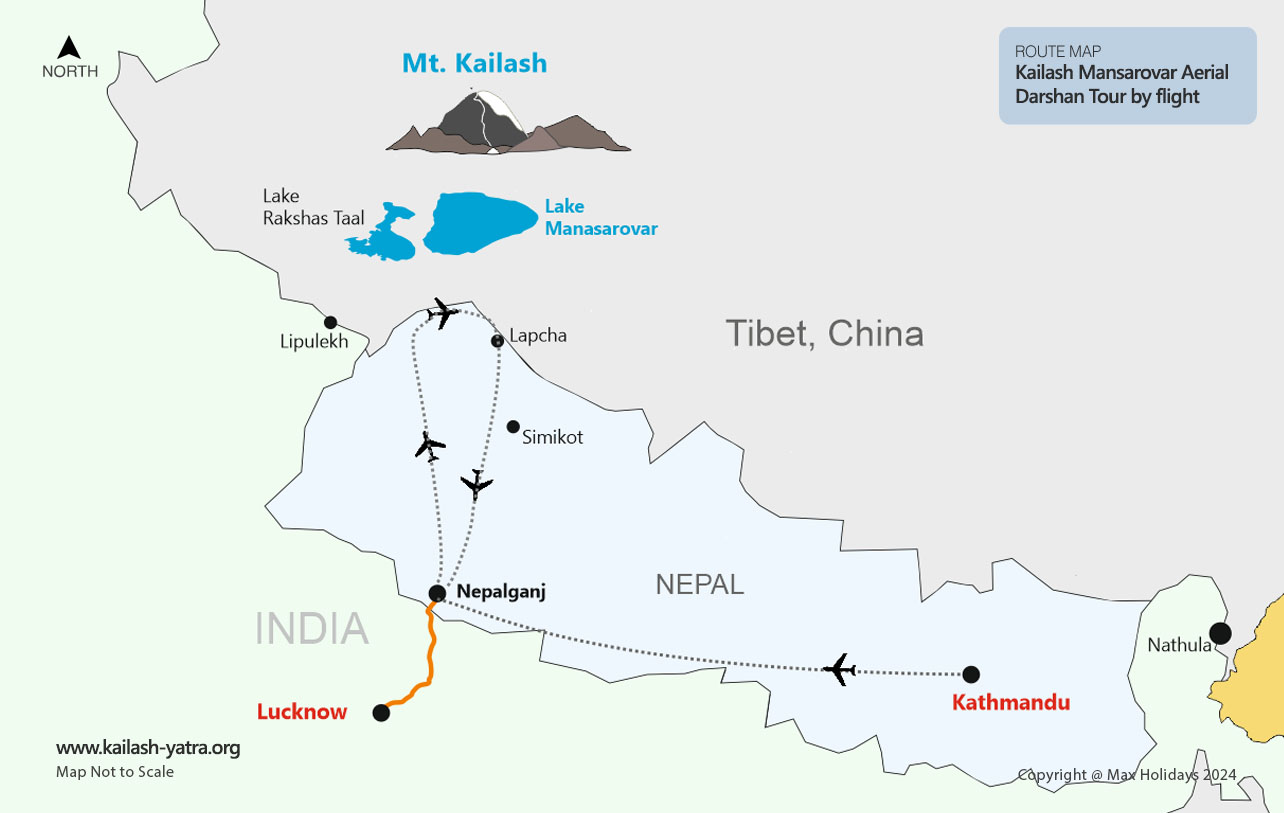
Price From : Rs. 35,000 /- Rs. 55,000/-
Kailash yatra by drive from kathmandu, nepal.
14 Days overland Kailash Mansarovar tour routing: Kathmandu, Syabrubesi, Kyirong, Saga, Lake Mansarovar, Mount Kailash and back
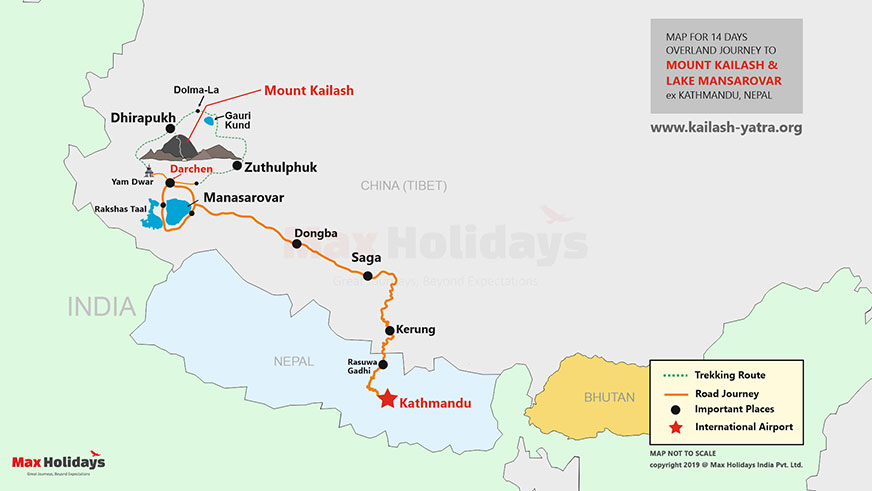
Price From : INR 195,000 /-
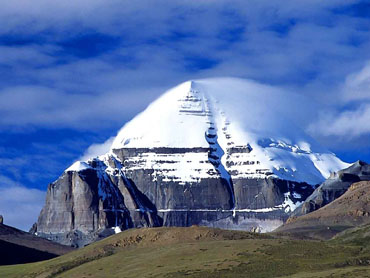
Kailash Yatra by helicopter from Kathmandu, Nepal
11 Days Helicopter Kailash Mansarovar tour routing: Kathmandu, Nepalgunj, Simikot, Hilsa, Lake Mansarovar, Mount Kailash and back
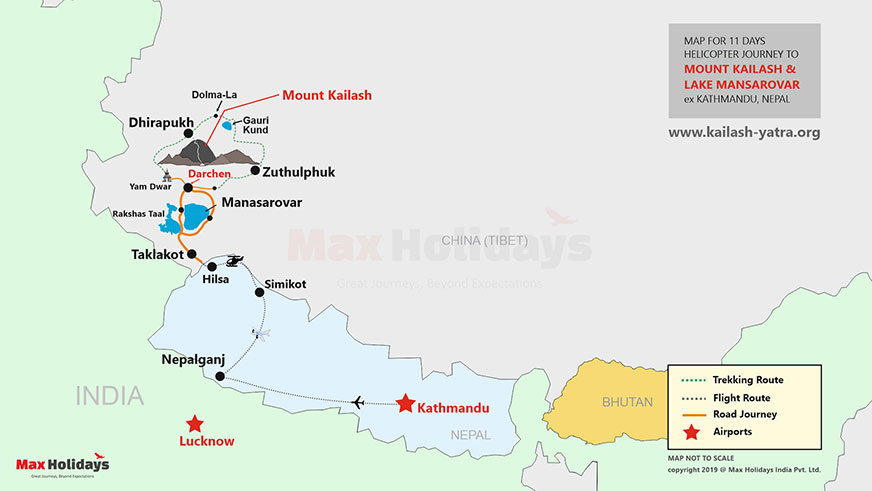
Price From : INR 235,000 /-
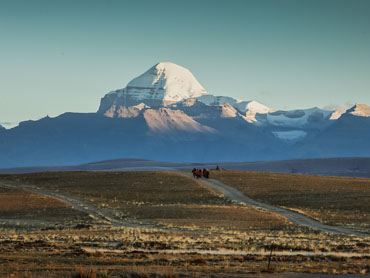
Kailash Yatra by helicopter from Lucknow, India
09 Days Helicopter Kailash Mansarovar tour routing: Lucknow, Nepalgunj, Simikot, Hilsa, Lake Mansarovar, Mount Kailash and back
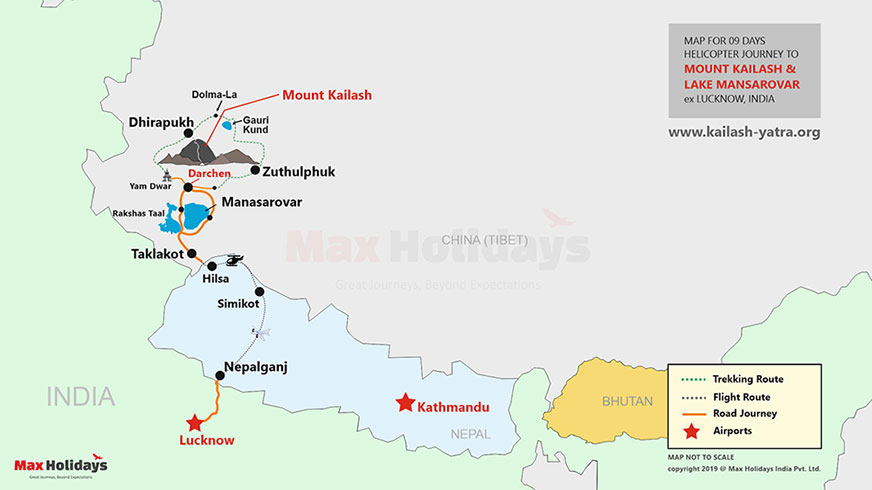
Price From : INR 215,000 /-

Kailash Mansarovar Road Trip via Lhasa, Tibet
16 Days Overland Kailash Mansarovar tour routing: Kathmandu, Lhasa, Shigatse, Saga, Mansarovar, Mt. Kailash, Lhasa, Kathmandu

Price From : On Request
Mount kailash inner kora trekking tour.
20 Days Mt. Kailash Inner Kora tour routing: Kathmandu, Kyirong, Saga, Mansarovar Lake, Mt. Kailash, Ashtapad, Nandi Kora
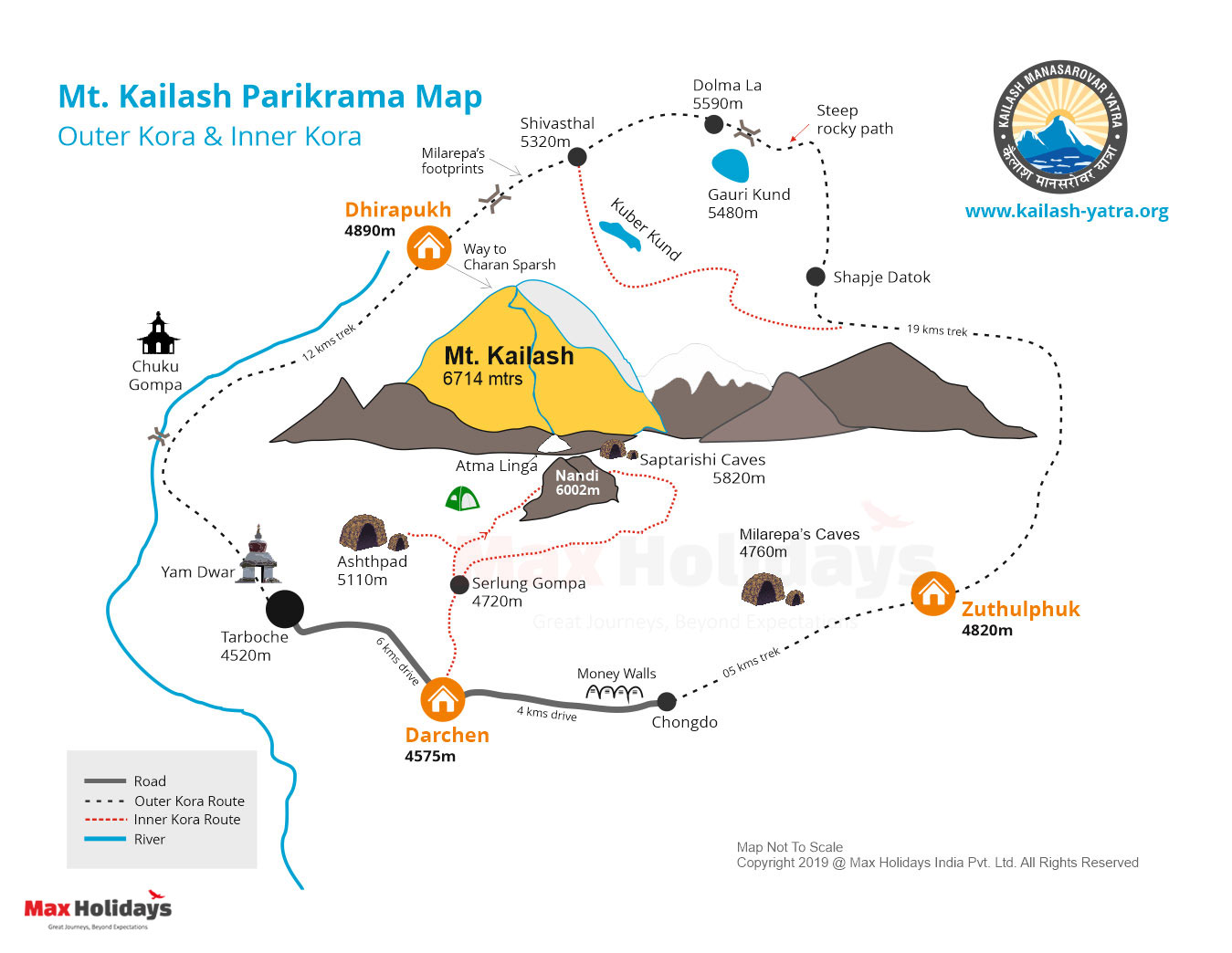
Price From : INR 315,000 /-
Kailash yatra quick facts, mt. kailash and lake manasarovar.
Mt. Kailash is known to be the heavenly abode of Lord Shiva and is also considered to be a pilgrimage destination packed with some of the most fascinating lessons of spirituality. It is situated in the Kailash Range (Gangdise Mountains) of the Transhimalaya and carries a highly religious importance too. On the other hand, considered as the most sacred lake in Tibet, Lake Manasarovar is majorly prominent as the world's highest freshwater lake and millions of ardent devotees come from the nook and corners of this world to experience its unique beauty lying at an elevation of 4,590 m.
People and Language
Mount Kailash lies in the Tibet Autonomous Region in China and the people living here are the Tibetans covering more than 90% of the population, Chinese and also the Nepalis. Talking about the official language used as a communicator in the Tibet Autonomous Region, it is none other than the Standard Tibetan vocalized in the form of Tibetic languages. Apart from this, one may also witness the people speaking Chinese as well as the Nepalese here along with majority of the population being fluent in speaking as well as understanding English.
'Renmibi' or the 'Yuan' is considered to be the official currency of Tibet same as the one followed in China. The currency is available in the form of banknotes as well as the coins. The banknotes are prevalent in the denominations of 100, 5, 50, 20, 2 and 1 yuan; 5, 2 and 1 Jiao; and 10, 2, 5, and 1 fen. Whereas, the coins are prominent in the denominations of 1 yuan; 5, 2 and 1 Jiao; and 5,2 and 1 fen. The Central Bank of China branch consists of a good number of ATMs which can presently be used for the withdrawal of the Renmibi currency. Thus, the visitors can easily be facilitated with the Renmibi currency while being present here.
Weather conditions in TAR Region
TAR is considered to be a region with the cool climate making the people living there wearing varied layers of clothes. It is known to have a harsh climate and during the wintertime, the temperature here goes below minus 30̊F and on the other hand, it goes above 100̊F during the summertime. The Tibet Autonomous Region is a highly dry spot with the hot and cold climate reaching the extreme accompanied with the thin air as well as the sunshine from the high elevation.
Routes to visit Kailash Manasarovar
Millions of pilgrims intend to visit the Kailash Manasarovar that is known to be accessible from the varied points. Once can be a participant of the Kailash journey through abundant number of ways. The most favored and also the 'less complex' routes for reaching here are Kathmandu in Nepal, Simikot in Nepal and Lhasa in Tibet. Apart from this, the Ministry of Tourism has figured out two routes for experiencing the divine Kailash Manasarovar Yatra which are none other than the route through Lipulekh Pass (Uttarakhand) and also the route through Nathu La Pass (Sikkim).
Do's and Dont's for Kailash Yatra
Kailash Manasarovar Yatra is a highly religious journey and is also considered to be a harder one. But, its result is simply priceless. While experiencing the spiritual journey to Kailash, the devotees have always claimed the attainment of inner serenity as well as a sigh of relief. In case you are striving to indulge in the same there are many strict guidelines prominent and an array of do's and dont's which you need to follow while journeying for having the glimpses of the heavenly abode i.e. the Mount Kailash.
Here you can read our answers to some of the most Frequently Asked Questions for Kailash Manasarovar Yatra
Know why we are the best tour operator for Kailash Manasarovar Yatra
Kailash Manasarovar Yatra is working with the sole intention of their clients' satisfaction and has inculcated varied new packages as well as tours keeping the needs and the preferences of the customers in view. Our team is ready to serve you with the finest expedition to Mount Kailash accompanied with abundant choices.

We have a highly experienced team of travel professionals
Our eminent and immensely experienced team of travel professionals are here to guide you all throughout your journey to the pious Mount Kailash.

Pilgrims' safety is our first priority
Our tour packages for the facilitation of Kailash Manasarovar Yatra are equipped with abundant safety measures for your security during the journey.

Pre and post tour assistance
We provide end-to-end services before the commencement of your tour and these do not end here. Even after the completion of your Kailash Yatra, we strive to provide you the finest tour assistance.
MISSION & VISION
Committed to growth & customer satisfaction.
We strive to attain the utmost satisfaction of the pilgrims associated with us for the Kailash Manasarovar Yatra and we are always successful in achieving this moto since our travel experts are highly cooperative and know how to tackle the kith and kin while travelling to Mount Kailash.
KNOWLEDGE & COMMITMENT
Knowledge and commitment beyond expectations.
Our eminent team of travel professionals is here to accompany you and share its knowledge about the varied aspects of Mount Kailash and lets you engross in the spirituality of the mighty Mt. Kailash. We are here to plan your journey full of divinity and get an experience for lifetime.
RESPONSIBLE & SECURE
Responsible business ensuring secure journeys.
As notified, the Kailash Manasarovar Yatra is not an easy one and thus, there exists a dire need for the devotee to be facilitated with utmost safety. Thus, in this regard we have made the safety measures and other mandatory elements ready for our clients.
ALWAYS UPDATED
Providing regular updates & news.
Each and every Indian citizen intending to travel to Kailash Manasarovar through the Himalayan Kingdom has been mandatorily asked by the Indian Embassy located in Nepal to attain the Chinese Visa as well as the travel permit for Tibet before they start their Kailash Mansarovar Yatra.
Since 2004 we have been the preferred choice for Kailash Mansarovar travelers

Top Places to Visit near Kailash Mansarovar
While being on your way to reach the ultimate destination i.e. the Holy Mount Kailash, one shall spot many spiritual hubs on the way and those are listed below:
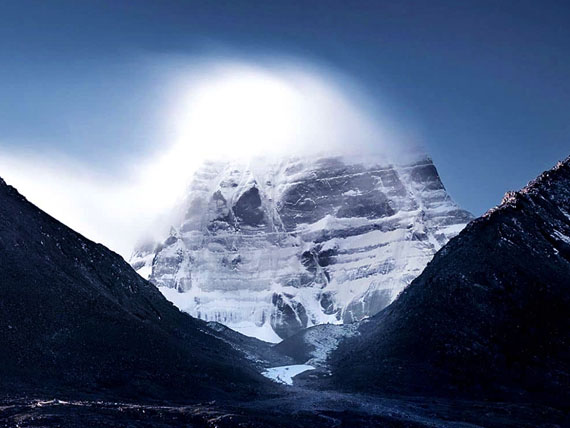
One of the most revered peaks in Asia, Mount Kailash has a spiritual significance as it is assumed to be the heavenly abode of Lord Shiva.
Situated at a very high elevation of 4583 metres, this invincible lake is considered to be one of the highest fresh water lakes in the world.
Also known as the Lake of Compassion, Gauri Kund is the place where Goddess Parvati attained Lord Ganesh as her son. Its water makes the devotees purified.
Ashtapad means 'eight steps' and this pilgrim site is known to be 'Nirvana attainment spot for each and every pilgrim who is present here
Called as 'Tarboche' by the Tibetan Population, Yam Dwar is the spiritual spot that is known to facilitate salvation to the visitors who pass through its gate.
Muktinath means 'God of Salvation' and this holy shrine is known to provide you the utmost Moksha from the cycle of birth and death.
Popular Yatra Blog & Stories
Everything you want to know about mount kailash travel.
In this article you will read some important facts and stats collected from the last 10 years Kailash Yatra tour & travel data.
Travelling from USA to Kailash Mansarovar
Understand how Kailash Mansarovar Yatra travel works for American and NRI travellers who undertake this sojourn from USA.
Importance of Mount Ashtapad in Jain Religion
Teaching every Indian on how to pave the way for utmost liberation and bliss, Jainism is a religion hailing from a highly ancient era.

Know us more
We organise your spiritual journeys for inner peace and salvation.
"Our ultimate goal is to provide you with first had information and organise a successful spiritual travel for you to some of the mightiest and holiest places on the earth, especially to Mt. Kailash and Lake Mansarovar situated in Tibetan Himalayan ranges." - Vishal Gogia, MD, Max Holidays
Traveller's Reviews
We witness thousands of satisfied clients every year. See what they have to say about us:

Embarking on a pilgrimage to Kailash Mansarovar with Max Holidays was an extraordinary and transformative experience. From the outset, their responsive and knowledgeable team ensured a seamless journey, addressing all our concerns and providing comprehensive pre-departure information. The on-ground support, led by an exceptional guide, was instrumental in navigating the challenging terrain, sharing insightful perspectives on the region's history and spirituality. Highly recommend Max Holidays for those seeking a truly special journey to Kailash Mansarovar. Read full review
- Dipak Patel, USA

My big thanks to Max Holidays for my memorable trip to Kailash Mansrover. I have had very good experience with other yatris. We started yatra from Kathmandu as planned.I enjoyed the road journey, It was adventurous . First I met with first member of team (Prem) in NepalGunj. He is very good and helpful person.We had everywhere healthy and fresh food on time. In Keyrong we met other team members (Lal singh, Neema, Fulwa and Lop) these people are hard workers and have dedicated spirit. We became like a family. They have looked after us like a family members.I take my Hat Off to them for their hard work.My hearty thanks to Mrs. Vidushi for her efforts.I would definitely recommend to go with Max Holidays.
- Sunita Sharma, India

I travelled with my mother to Kailash-mansarovar on 11days Heli-Kailash tour of 'Max Holidays' in July'18...I am happy the way Max team handled our entire journey... Specially Mr.Prince Bedi who extended his helping hand at every point during booking and then while traveling with us to Kailash..He calmly n patiently handled all our queries and was making sure to provide a safe and secure environment for women travellers like us( In our Grp we were 5 solo women traveller). The journey like this needs lots of preparation, manpower management n paperwork. Max holidays paperwork in terms of all required permits was perfect and we didn't face any issues regarding same.. Thank u 'Max Team' -Mr.Prince for making this journey successful for us
- Anushka Kapse, USA
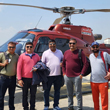
We did kailash mansarovar yatra in private group service provided by max holidays was beyond and above our expectations Vidushi she is Awesome and helpful. I would like to thank from bottom of our heart to Max Holidays. Read full review
- Vijay Patel, USA

Har har mahadev,I had a strong desire to visit Kailash Mansarovar, When I started searching for good tour operator, It was very difficult to identify the best one as all were promising the best. In the process when I contacted Max Holidays and asked the contact number of a person who visited Kailash last year, I was provided the number of three person and I contacted one Mr.Nirankar Agarwal who explained the entire process of yatra and with his satisfied experience with Max, I along with two colleagues took up the journey with the Max. Mr. Vishal Gogia, CEO Max and Mr. Girish Vats coordinator attended us at Lucknow Airport and they were all along with us through out the journey. We all were given a personalized care and their coordination at all places with all agencies was superb and none of us had to face any inconvenience. We had a wonderful onward journey to Mansarovar, A divine bath, Hawan Puja at Holi Mansarovar on Full Moon Night and ultimately full parikrama of Kailash which could be completed successfully within two days. Our return journey was also well planned but due to bad weather some of us had to stay at Hilsa for three nights. However, Mr. Vishal did his best to attend everyone. We could see the difference between Max Holidays and other tour operators. Read full review
- Surendra Kumar, New Delhi
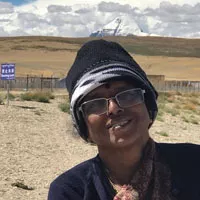
Taking care of one's group is great. But helping people of other group is greatest. This we found in Vishal of Max Holidays. When our tour operator, Nepal Pilgrim Travels, Mylapore, was nowhere to be seen and who had left us high and dry, it was Mr.
Vishal who helped us a lot.
Stranded at Hilsa on 3rd July and when some of us were ill he brought in his team doctors immediately and assured us that we would be taken care of. We have all decided that in future our travels would be with Max Holidays. One can be sure that he/ she is in safe hands.
- Hemalatha Sukumaran, Tamilnadu
We provide the world's most reliable and popular
Kailash Mansarovar Yatra Information Desk

- Mount Kailash Aerial Darshan 2024
- Kailash Yatra Via Lhasa
- Kailash Mansarovar Yatra 2024 Via Lucknow
- Overland Kailash Mansarovar Yatra 2024 By Bus
- Kailash Yatra 2024 By Helicopter From Kathmandu
- Shortest Kailash Mansarovar Yatra 2024 By Helicopter In 5 Days
- VIP Package for Kailash Mansarovar Yatra
- Kailash Mansarovar Inner Parikrama 2024
- हेलीकाप्टर द्वारा कैलाश मानसरोवर 2024 यात्रा
- Kailash Mansarovar Yatra 2024 By Helicopter from Lucknow
- Adi Kailash And Om Parvat Aerial Darshan 2024
- Adi Kailash and Om Parvat Yatra from Dharchula
Adi Kailash and OM Parvat Yatra from Kathgodam
- Adi Kailash And Om Parvat Darshan by Heli Ex Pithoragarh
- Adi Kailash And Om Parvat Darshan by Heli Ex Kathgodham
- Adi Kailash And Om Parvat Darshan by Heli Ex Delhi
- Kailash Mansarovar Yatra
- Adi Kailash Tour Yatra Packages
- Uttarakhand Kailash
- Char Dham Yatra Packages
- Sri Lanka Tour Packages
- Nepal Tour Packages
- Varanasi Pilgrimage Tour
- North India Tour
- South India Tour
- Divya Desham
- Ramayana Circuit
- Panch Prayag
- Jyotirlinga
- Bada Char Dham
Lake Mansarovar

About Lake Manasarovar:
Located at an elevation of 4600m, Mansarovar Lake is one of the highest freshwater lakes in the world. To the west of Lake Manasarovar is Rakshastal and to the north of Lake Mansarovar is Mount Kailash.
The word Mansarovar is a combination of two Sanskrit words, namely Mana which means Mind and Sarovar which means Lake. As per Hindu Legends, Lake Mansarovar was first manifested in Lord Brahma’s (the god of creation) mind and then later created on Earth. As per Buddhist literature, Lake Mansarovar is the place where Queen Maya- the mother of Lord Buddha bathed and then gave birth to Lord Buddha.
Manasarovar Lake is called Lake Mapham Yumtso in Tibet, which means "invincible lake". Lake Manasarovar is of extraordinary beauty, from the crystal clear blue water near the shore to the deep emerald green colour in the middle. The Mansarovar Lake is purer than a Sapphire, such that you can see the reflection of the surrounding so clearly and transparency up to 14 meters.
Location of Lake Mansarovar:
Mansarovar Lake is located in the southwest region of Tibet, about 50km to the northwest of Nepal. One gets the first glimpse of Holy Kailash Parvat from Mansarovar Lake. The stunning view of Lake Mansarovar is surrounded by snow-capped mountain and its deep blue water make it very captivating.
Significance of Lake Mansarovar:
According to Hindu Mythology, Lake Mansarovar is a holy lake where Lord Shiva and Lord Indra swam as Swans. Mansarovar Lake is believed to be the summer home of Swans- the symbol of wisdom and beauty. Bathing in the waters of Manasarovar jheel is believed to ward off covetous desires, restless thoughts and past sins. Drinking the water of Mansarovar jheel keeps you healthy and away from illness. A Parikrama of the Mansarovar lake brings endless benefits to the pilgrims. Thus all pilgrims coming for Kailash Yatra regard visiting Mansarovar Lake as their greatest fortune.
Parikrama of Mansarovar Lake:
The Parikrama of Lake Manasarovar used to be 105 km earlier but now it has reduced to roughly 90km due to global warming. It takes about 3 hours to complete the Manasarovar Lake Parikrama by Volvo category buses.
One can see Kailash Parvat throughout the Parikrama of Mansarovar Jheel . It is a blessing to do the parikrama right infront of Bhole Baba. The road around Mount Kailash is rough at some patches but mostly smooth.
Bath in Lake Mansarovar:
Taking a bath in the Mansarovar Jheel has been considered auspicious since the ancient times. Even the Rishis and Munis used to take a dip in Mansarovar Lake before visiting Mount Kailash. Hence devotees have always tried to take a dip in Lake Mansarovar once in a lifetime.
Taking a dip in Lake Mansarovar has always been allowed by the Chinese Authorities. However, Tibetan authorities strictly banned taking a dip in Mansarovar Lake in the starting months of Kailash Mansarovar Yatra 2018 because of the littering done by the pilgrims. If someone was found breaking the rules, the Chinese authority was taking a penalty of about 5000 Yuan. Respecting the sentiments of the pilgrims, they resumed taking a dip in Mansarovar lake in September that year with strict warnings of no littering and assuring cleanliness.
Trip To Temples provides Cloth changing Tents for Women near Mansarovar Lake.
Points to remember while visiting Mansarovar Jheel:
- Mansarovar Lake is the best place to meditate while facing the Kailash Mountain.
- Do not litter in and around Lake Mansarovar. Keep the area clean.
- It is advisable to take a dip in Mansarovar Lake only if your health allows. Otherwise just splash a few drops of the holy water.
- Do not take a dip in Mansarovar Lake in the morning as the water at that time is very cold and it might affect your health. A dip must be taken in the afternoon as the water gets warm by that time.
- You can collect the holy jal from Mansarovar Jheel to take it home.
- If you are willing to visit the Mansarovar Lake at night, then it is advisable to properly cover your body in warm clothes, especially your ears and head.
- If you plan to visit Lake Mansarovar at night or in Brahma Muhurat, then you must assure that you are accompanied by other and you are not going alone. Be aware of the dogs present around the Lake Mansarovar.
Night view at Manasarovar Lake:
There is a lot of craze among Pilgrims to visit Mansarovar Lake at night or during Brahma Muhurat. The weather during this time is quite cold and generally it is witnessed that very few people visit the holy lake during this time.
The view that one gets during this time is mesmerizing. However it is advised that if you are feeling physically fit and your oxygen level is entact then only visit the Lake Mansarovar at night.
Stay Facility at Lake Mansarovar:
There is limited infrastructure available at Lake Mansarovar. There are only few dormitories available. The stay will be provided on Multi sharing basis, however everybody gets separate bed, blanket and pillow for sure.
Washroom facility is not available at Mansarovar Lake. Trip To Temples provides Portable Toilet with toilet tents for the comfort of the pilgrims.
Mobile connectivity at Lake Mansarovar:
The mobile network is available at lake Mansarovar and the entire Kailash Mansarovar Yatra. Indian simcards work best in the Kailash Mansarovar region. It is advisable for you to activate international roaming on your Indian simcards to remain connected with your friends and family.

Get In Touch
Have An Enquiry? Write To Us…
Best Seller Pilgrimage
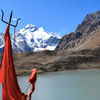
Kailash Mansarovar Yatra 2023 By Helicopter from Lucknow
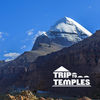
Overland Kailash Mansarovar Yatra 2023 By Bus

Shortest Kailash Mansarovar Yatra 2023 By Helicopter In 5 Days

Char Dham Yatra by Heli
Tour resources.

COMMENTS
The Kailash Mansarovar Yatra is a revered pilgrimage that holds a special place in the hearts of Hindu, Buddhist, Jain, and Bon followers. This spiritual journey takes pilgrims to the remote and rugged region of Tibet, China, where they embark on a sacred circumambulation of Mount Kailash and a visit to Lake Mansarovar, believed to be the earthly abode of Lord Shiva and a source of spiritual ...
Mansarovar as part of Journey to the center of the self This was part of my trip to Kailash organised through Government of India through a long trek through Lipulekh pass. posted a full video traveelogue including details of stay at Mansarovar lake on youtube . search for "Journey to the center of the self" . this area is spiritually amazing and very rejuvenating.
Kailash Mansarovar Tour/Yatra: most recommended Mt.Kailash & Lake Manasarovar tours from 10 to 22 days; we have fixed departure dates 2024 at best local price. ... Join us for an affordable exploration of the mysterious Mt. Kailash and Mansarovar Lake at the best local price. ... This is the trip for any of Kailash tourists; the ultimate ...
On arrival at Darchen, we will start our three-day Kailash Kora tour. The major attractions of the Kailash tour 2024/2025 are visiting the sacred peak of Kailash, the Holy Lake of Mansarovar, and the highest pass of Drolma La. Based on our default itinerary, the Kailash Mansarovar Yatra tour 2024/2025 takes 14 days.
Trip Introduction Overview of Kailash Manasarovar Yatra. Kailash Manasarovar Yatra is a transformative journey that leads you through the heart of Tibet's mystical landscapes to the sacred Mansarovar Lake and the revered Mount Kailash.This 13 to 19-day pilgrimage, originating from the ancient city of Lhasa or the bustling streets of Kathmandu, is more than a trek - a journey of self ...
Mt Kailash is a high peak at an elevation of 6,638m-21778ft. Manasarovar Lake is a high-altitude freshwater lake fed by the Kailash Glaciers. You can take lifetime memory and experience of this journey which reminds Lord Shiva of their life and provides them with a sense of peace and serenity. It is estimated for about 13 days to make complete ...
Talk to an expert. 0120-6907340. Overview. Gallery. Package Details. Testimonials. A surreal phenomenon. A majestic epiphany. A staggering revelation- Mount Kailash is not a destination, it's a journey- Kailash Mansarovar Yatra beyond all form of human imagination that takes you to an elevation of 21,788 feet, and changes your life forever.
The circumference of Mansarovar Lake, which is about 30 km from Mount Kailash, is approximately 90 km. The lake freezes in the winters and melts only in spring. From Tanakpur or Kathgodam one can reach Kailash-Mansarovar via Dharchula, Tawaghat, Lipulekh Darma and Johar valleys. From the Lipulekh Pass Mount Kailash is around 100 km away.
Kailash. Get ready for a trail that is as challenging as it is rewarding. Pack and drive to Yamadwar, the starting point of the trek, before setting off for Dirapuk. As you get closer to Kailash, experience the powerful and indescribable phenomenon of this revered mountain. While staying the night at its base, indulge in the beauty and ...
The Kailash Mansarovar Trip is a holy experience and the most popular trekking destination in Tibet. Attracting thousands of Hindu and Buddhist pilgrims every year, it revolves around the Mt. Kailash (6636m) and the sacred Lake Manasarovar.
Overview. The Kailash Mansarovar Yatra From Kathmandu, Nepal is a 13-day journey that takes you to the holy mountain of Kailash and the sacred lake of Mansarovar. The journey starts from Kathmandu, the capital of Nepal, and takes you through a scenic and adventurous route, crossing the border into Tibet, China.
Climb up the hill near Chiu Gompa and a bird's-eye view of the whole of Lake Manasarovar comes into view. Check out other sacred lakes in Tibet. 2. Take a Bath in a Hot Spring. A natural hot spring is located in the small village near Chiu Gompa. This is the best way to wash away your fatigue. 3. Go on a Lake Manasarovar Yatra.
Kailash Mansarovar Darshan by Chartered Flight. 03 Days Kailash Mansarovar darshan tour routing: Lucknow, Nepalgunj, Fly over Simikot and Humla, Mansarovar Lake & Mount Kailash Darshan. Price From : Rs. 35,000 /- Rs. 55,000/-. Group Joining Tour View DetaIls.
Day 6 - 6 hours drive to reach Lake Mansarovar at an elevation of 4,500 m. The highlights of this trip will be revealed today as you arrive in the area of the holy Lake Manasarovar and the sacred Mt. Kailash. In your way you will cross the Mayum-La pass at 5,200 m, the highest pass of this trip that can be crossed by car.
Lake Mansarovar and Mount Kailash will remain only some short drive away from here. Trip Schedule ... Optional Trip: The air sectors Hilsa-Simikot-Nepalgunj is very complicated and totally weather permitted. Delay or rescheduling or interruption in flights on this sector is a well- known problem of this route.
The place is best to go deeper into samadhi. Lake Mansarovar is the point of origin of four major rivers namely Brahmaputra, Ghagra, Sindhu, Satluj. 3) Medical Importance: The trip to Mansarovar is a good opportunity to get to know the herbs and shrubs that surround Mount Kailash. The wild plants and flowers are used for medicinal purposes.
Mansarovar Lake is a location situated around 20 kilometers away from Mount Kailash at an elevation of 15,015 feet. It represents purity. Is believed to cleanse individuals of their sins. The lake has a feature of changing colors. Starting blue, near the shores and transitioning into emerald green towards its center.
Drive from New Dongba to Lake Mansarovar (Hor Chu) 4500 m, 369 km, 6 hrs. Overnight at a guesthouse. Day 07 : Lake Mansarovar parikrama by Jeep (88 km, 1.5 hrs) and then drive to Darchen, 88 km. Overnight at a guesthouse. Day 08 : Start parikrama to Deraphuk (4920 m), 5 hrs trek. Overnight at a guesthouse. Day 09 :
After 4 years Trip To Temples became the 1st Company in India to make Kailash Mansarovar Darshan possible for Indians. In an exclusively done collaboration with Shree Airlines, Nepal, on 29th Jan 2024 the first ever Kailash Mansarovar Mountain Flight took off from Nepalgunj and returned with success and100% satisfaction of Yatris.
Visit Lake Mansarovar for Pooja, Meditation and holy bath Today. Enjoy your personal time here while chanting, praying and getting more connnected spiritually with your inner self. ... Pure vegetarian meals for the trip (lights breakfast, packed lunch, light dinner during parikrama days), Transport in Tibet side by Luxury air conditioned bus ...
How to book trip to Mansarovar Lake? Mansarovar Yatra registration must be done with KMVN. For Indian Hindus, Kailash Mansarovar Yatra is run exclusively by KMVN, also known as the Kumaon Mandal Vikas Nigam. It is a government organization of India. Kailash Mansarovar Yatra pilgrimage is done in collaboration with China Government, Government ...
SPECIAL TRIP Kailash Mansarovar Aerial Darshan by Flight for Indians. 03 Days | From ₹35,000/- Rs. 55,000/- Best Seller Kailash Mansarovar Yatra by Helicopter from Kathmandu ... and the largest freshwater Lake Mansarovar (also Manas Sarovar) are the source of great energy and mental peace for mankind. Mount Kailash and Lake Mansarovar are ...
According to Hindu Mythology, Lake Mansarovar is a holy lake where Lord Shiva and Lord Indra swam as Swans. Mansarovar Lake is believed to be the summer home of Swans- the symbol of wisdom and beauty. Bathing in the waters of Manasarovar jheel is believed to ward off covetous desires, restless thoughts and past sins.